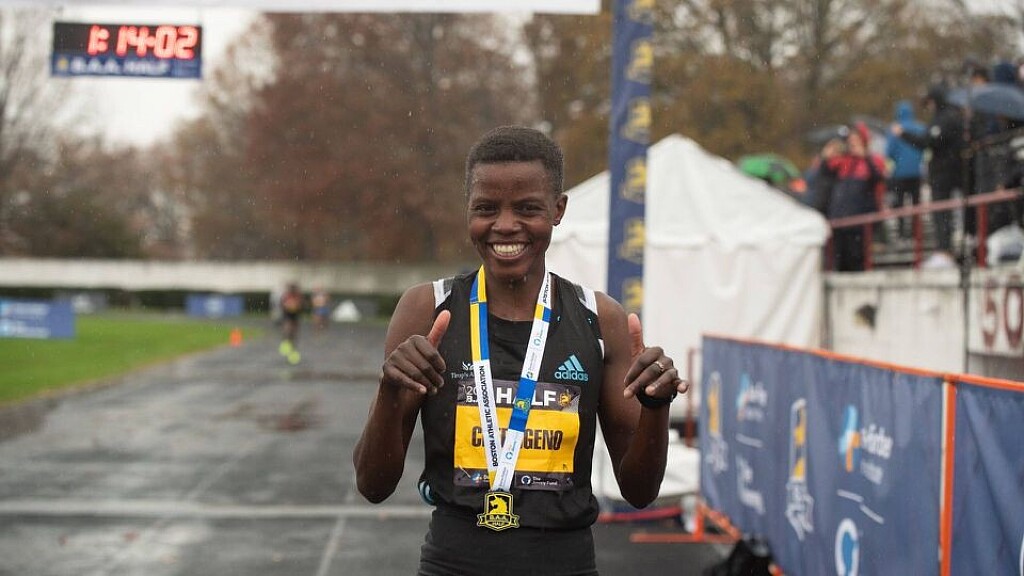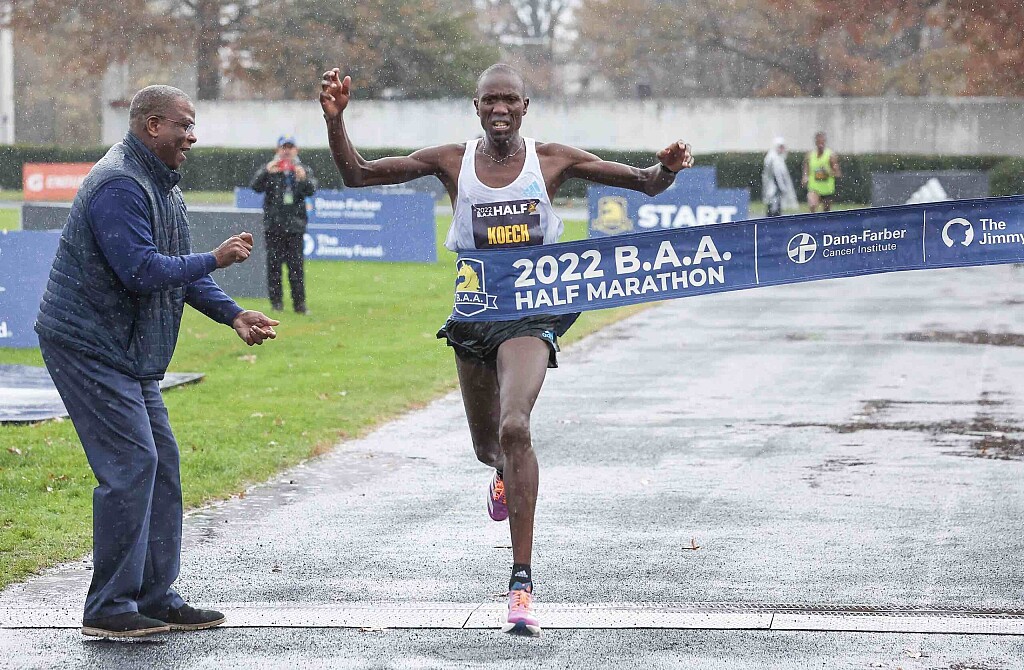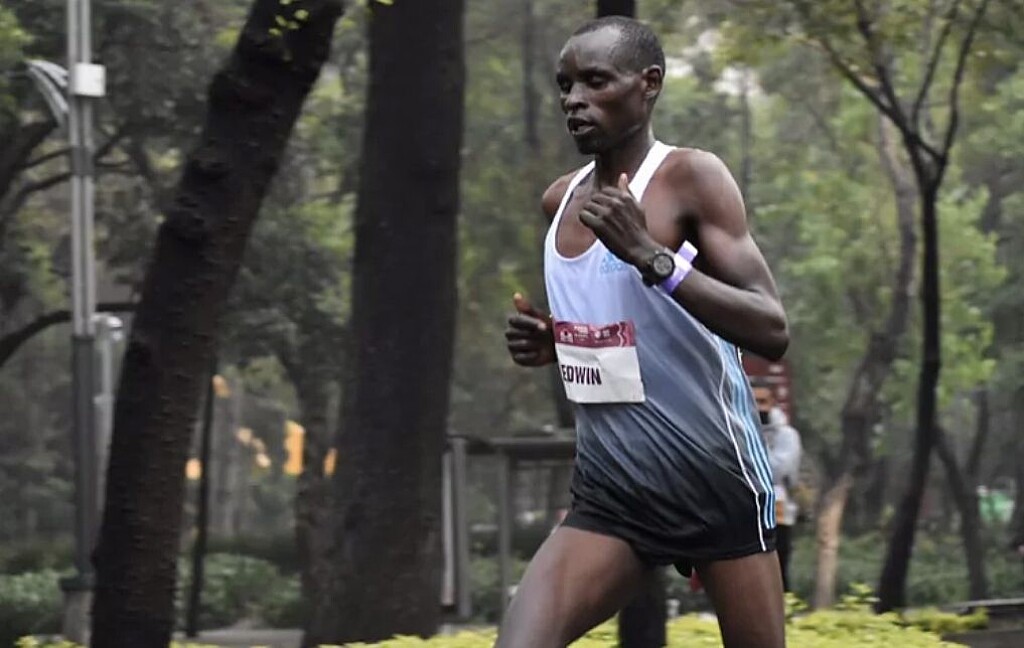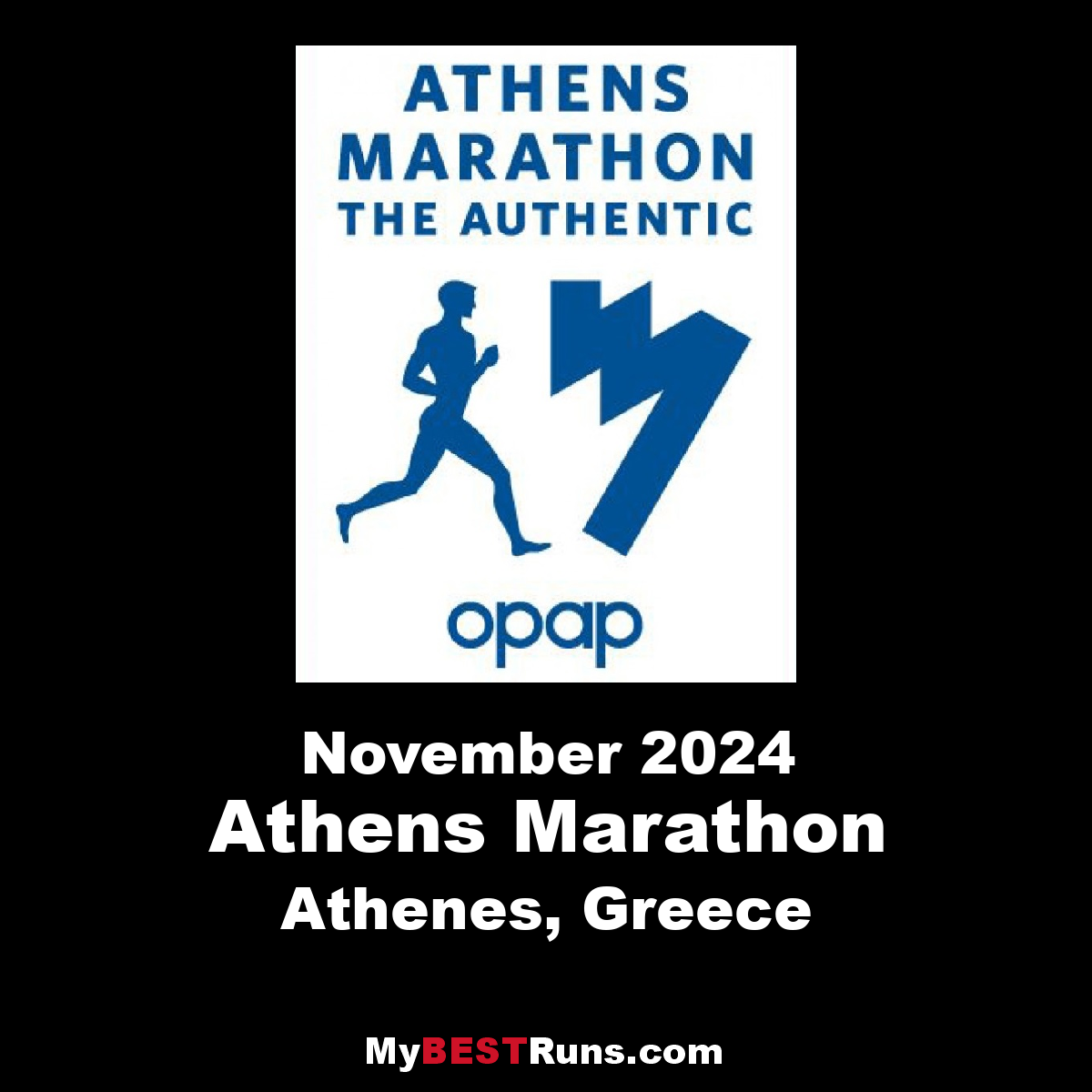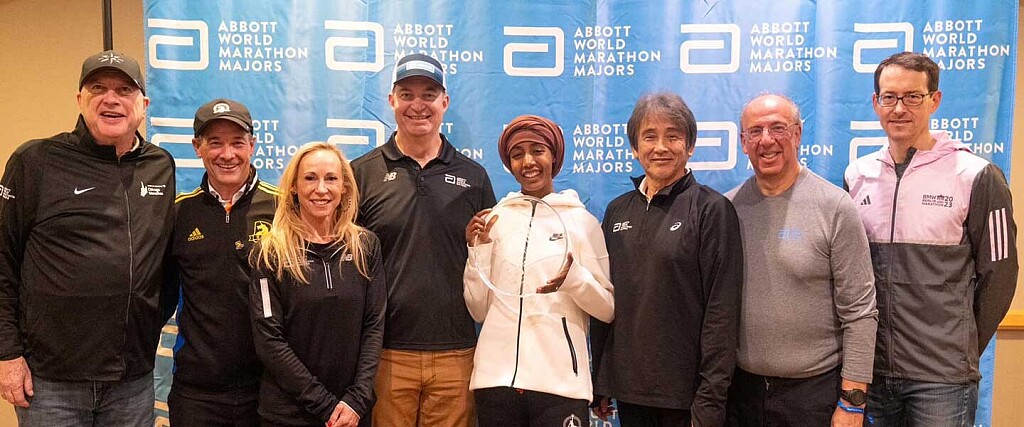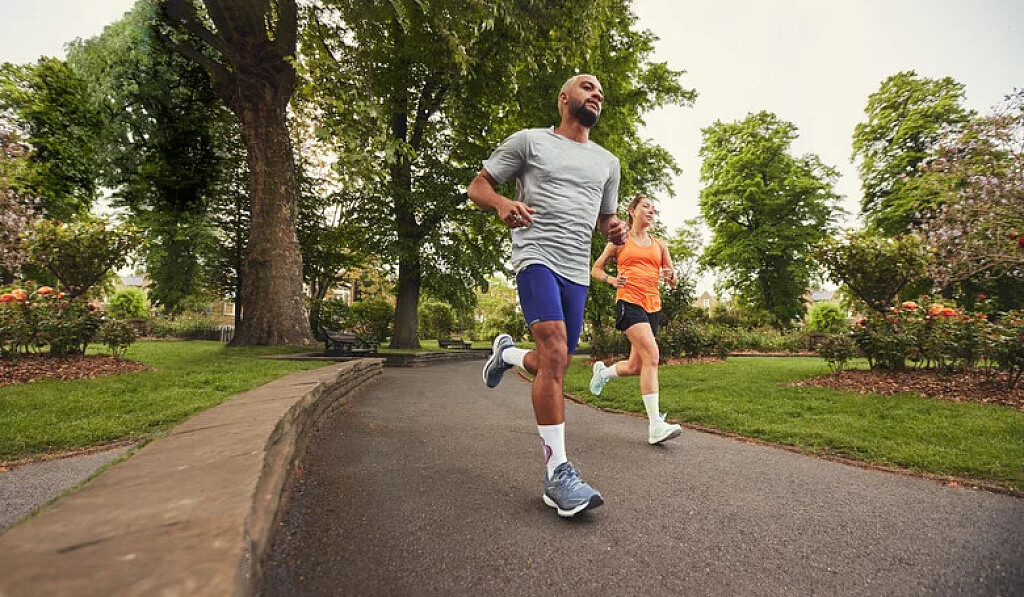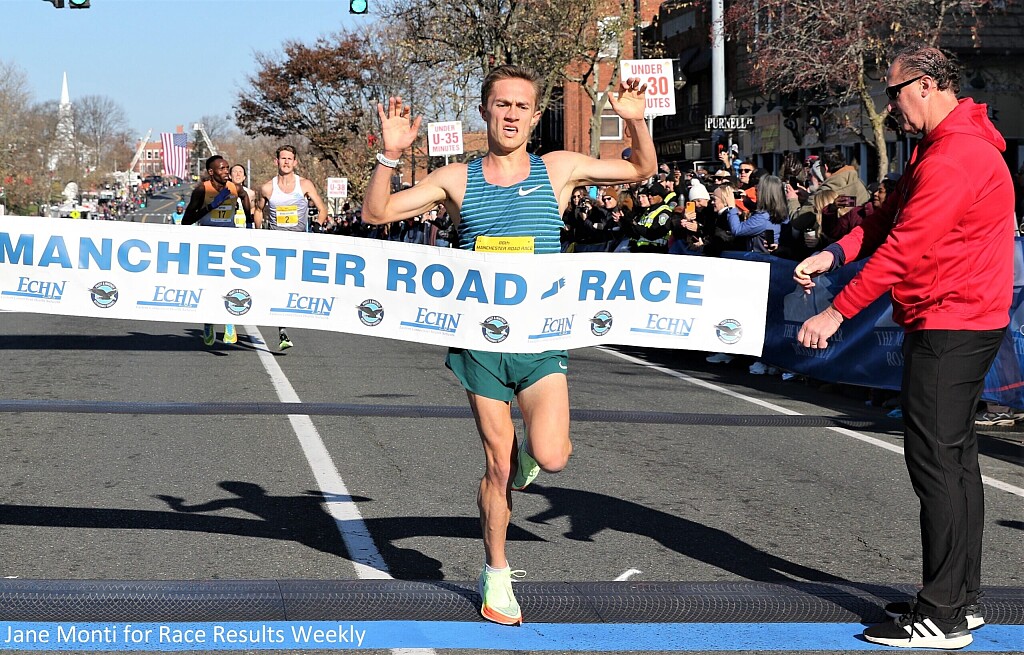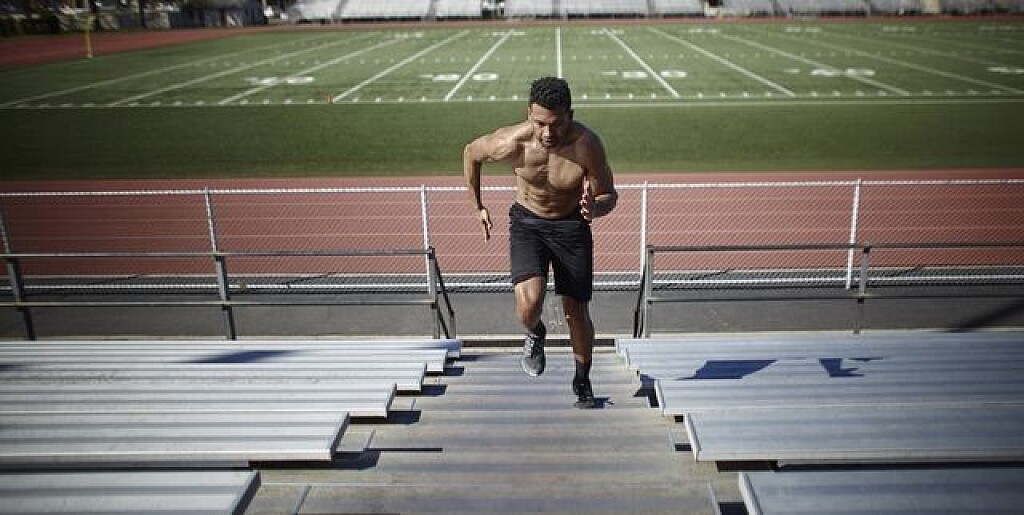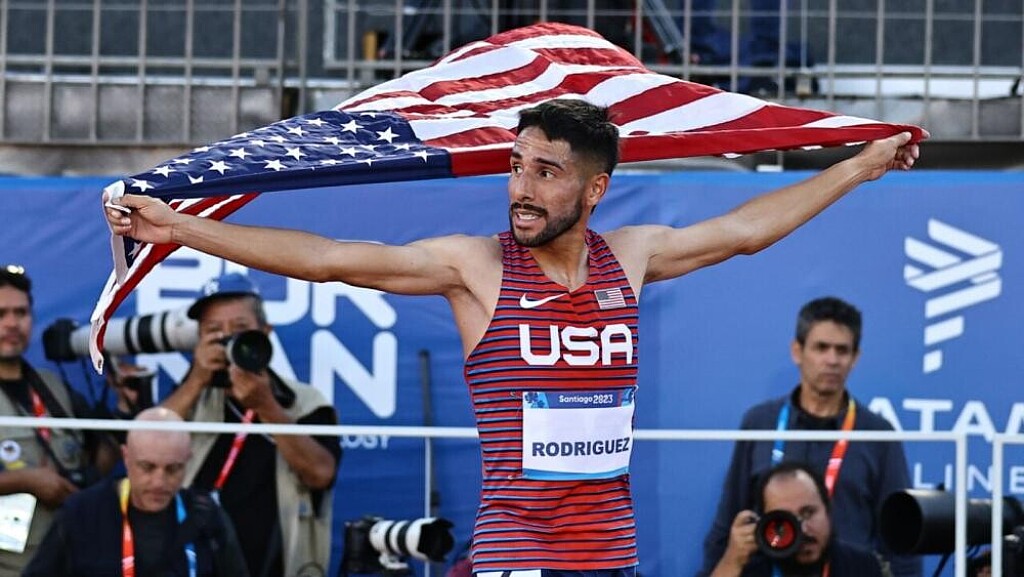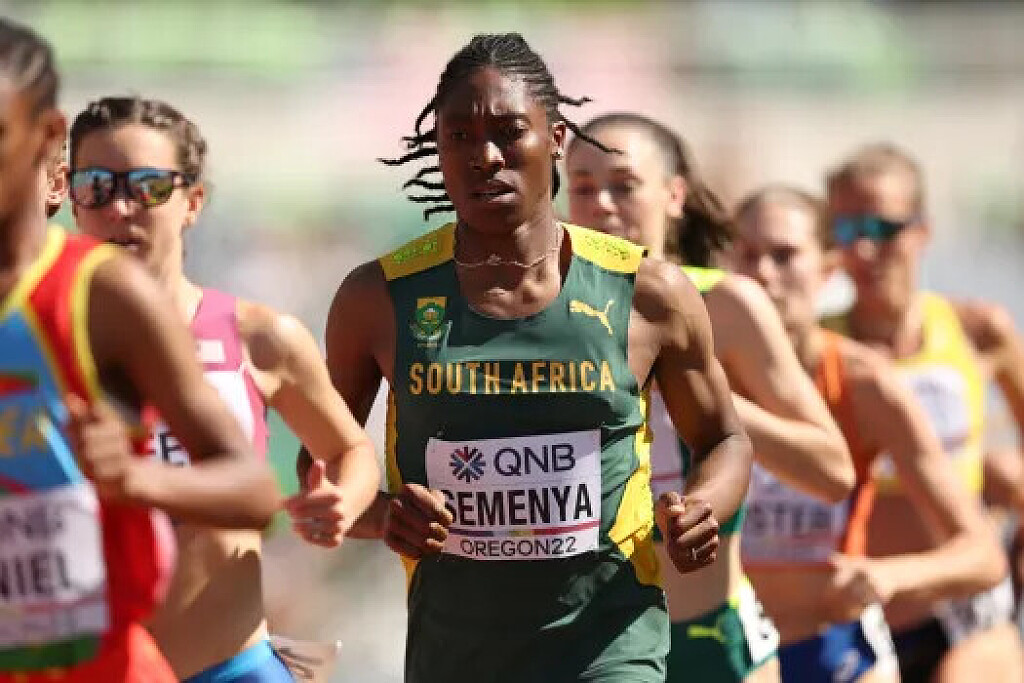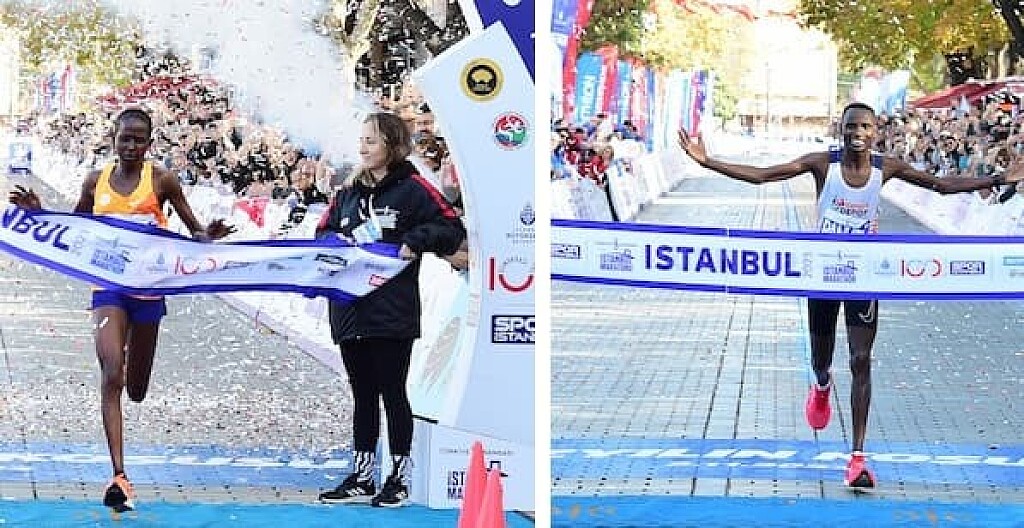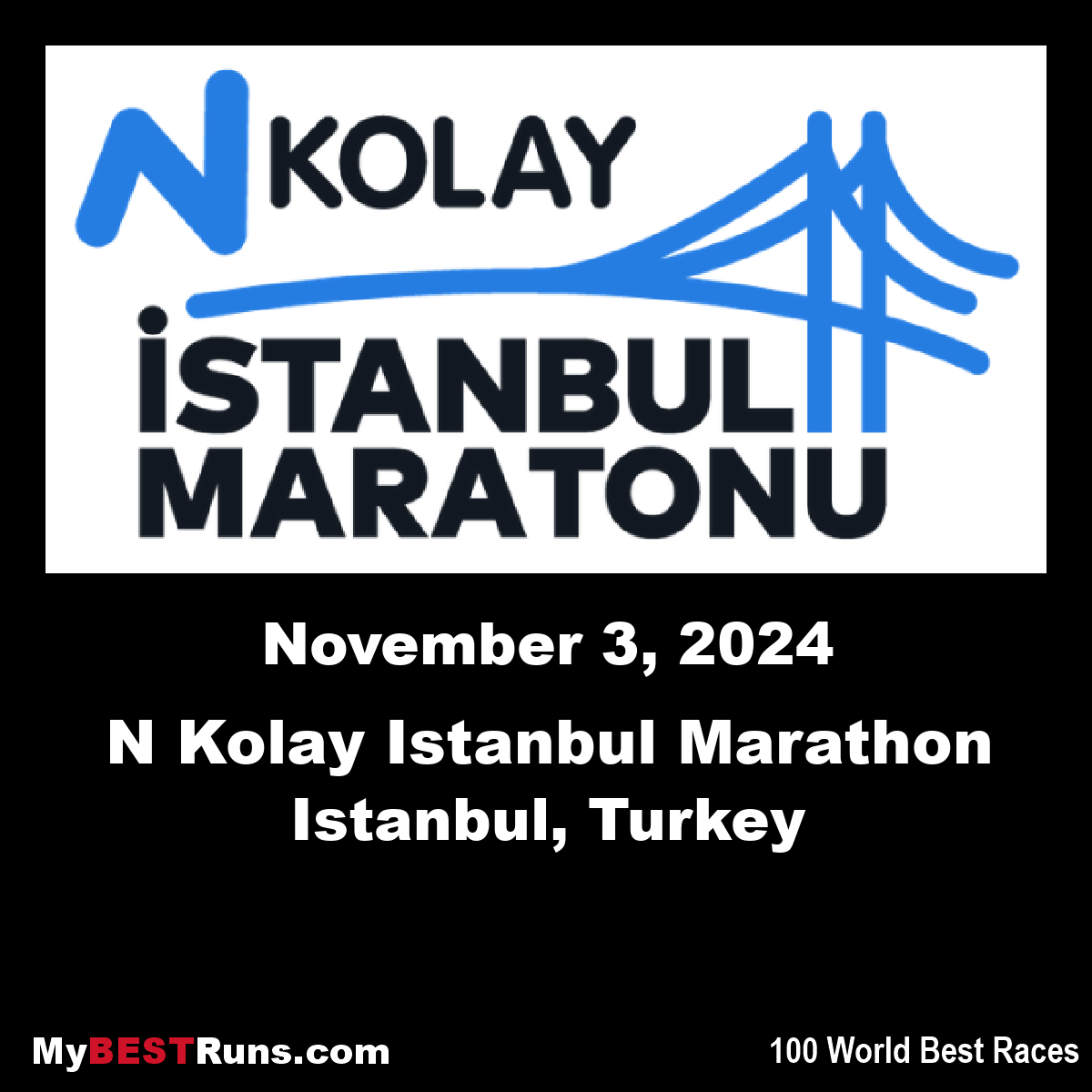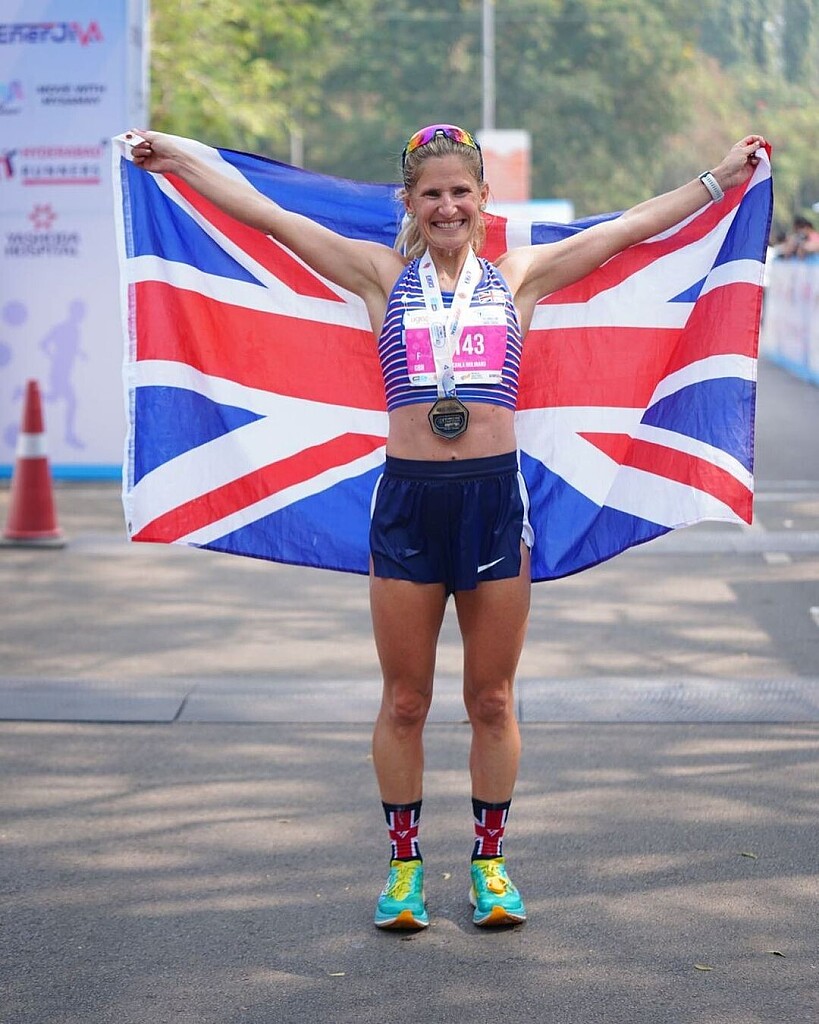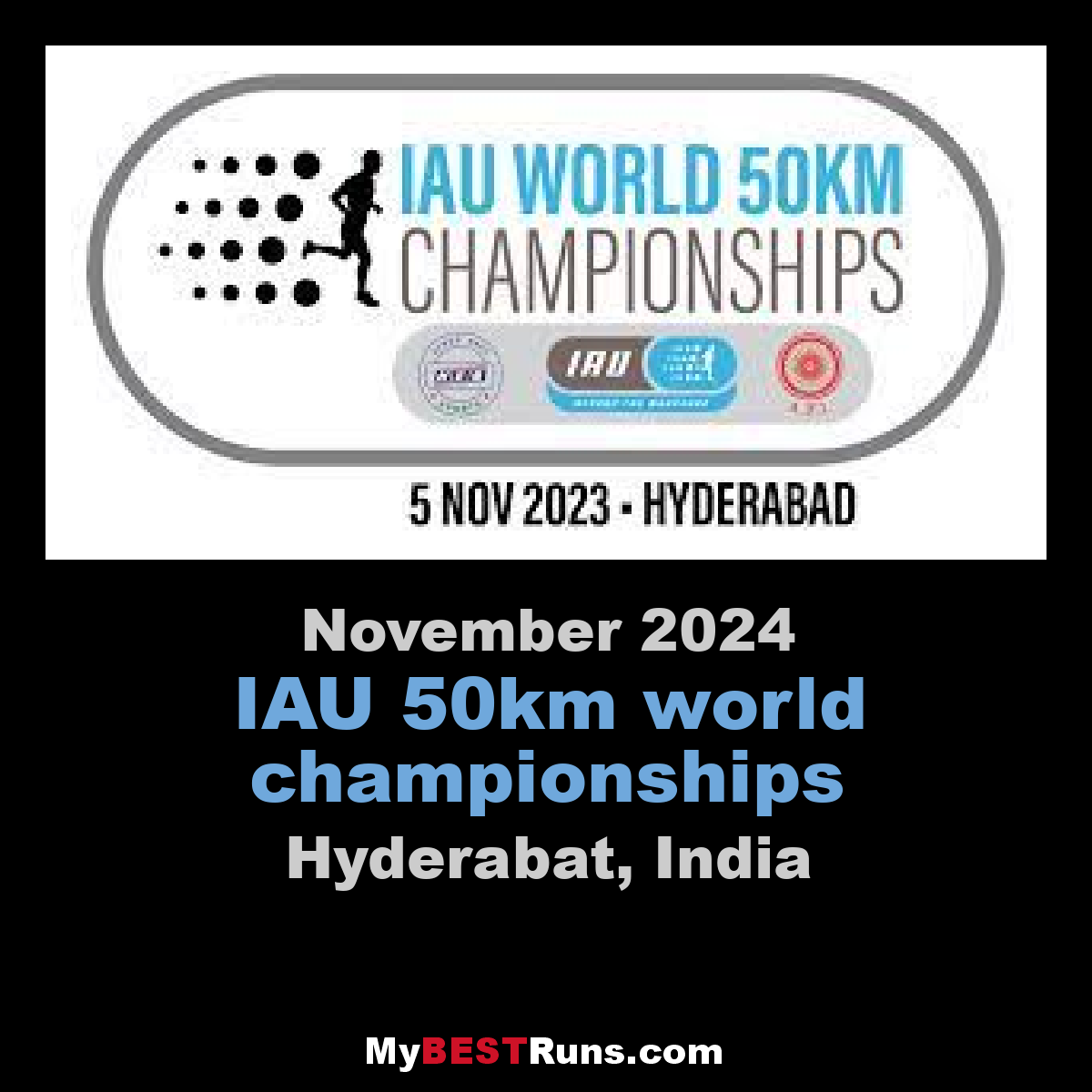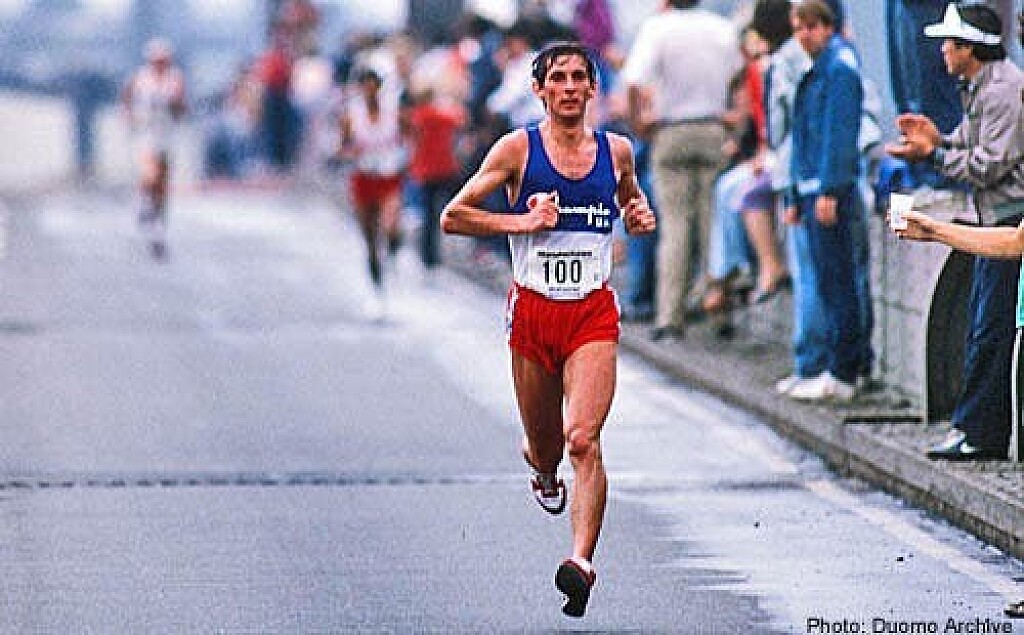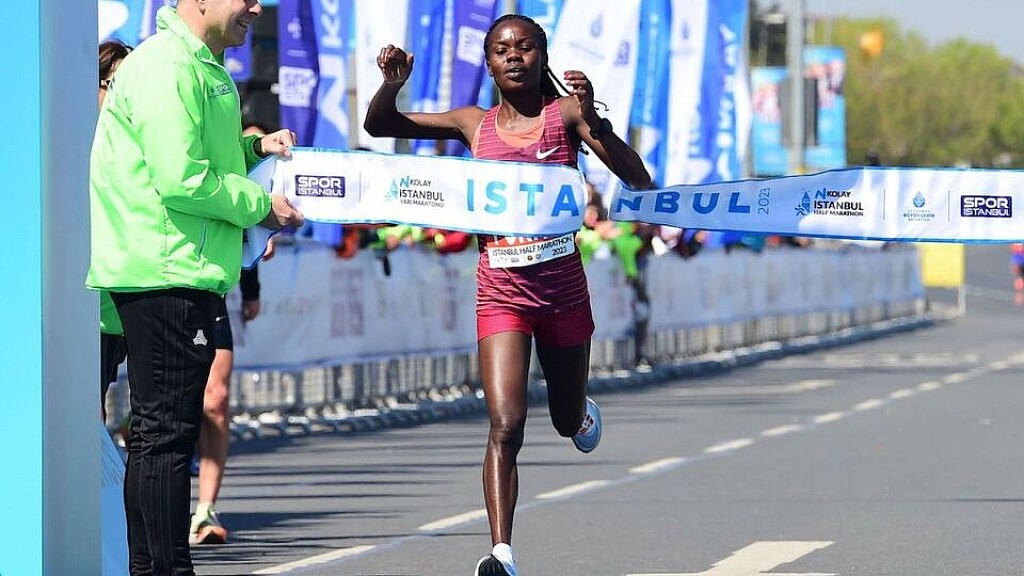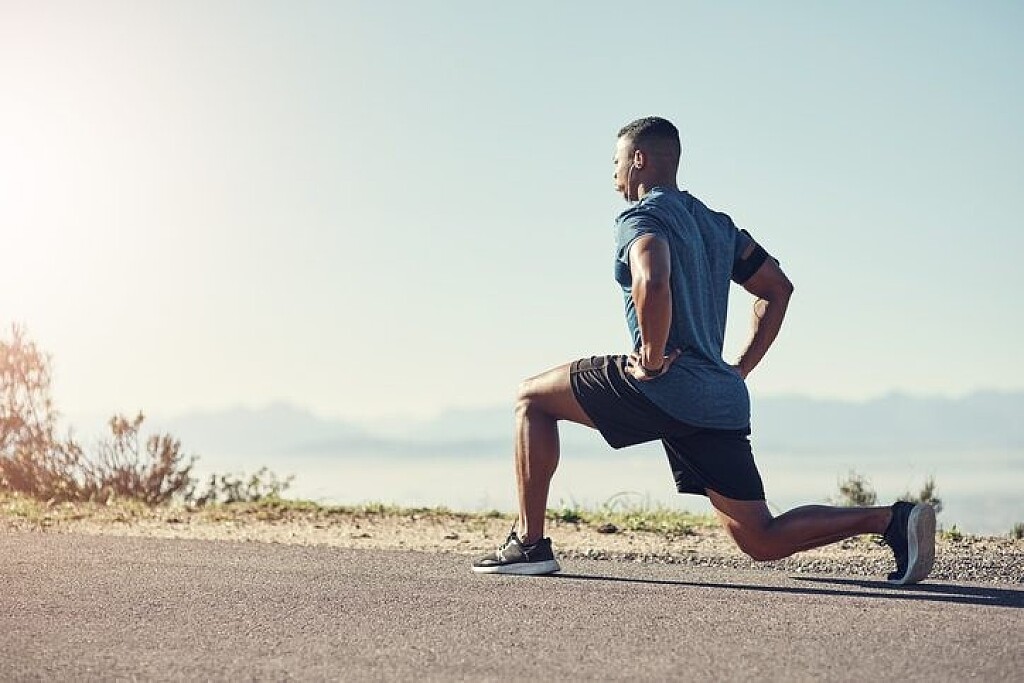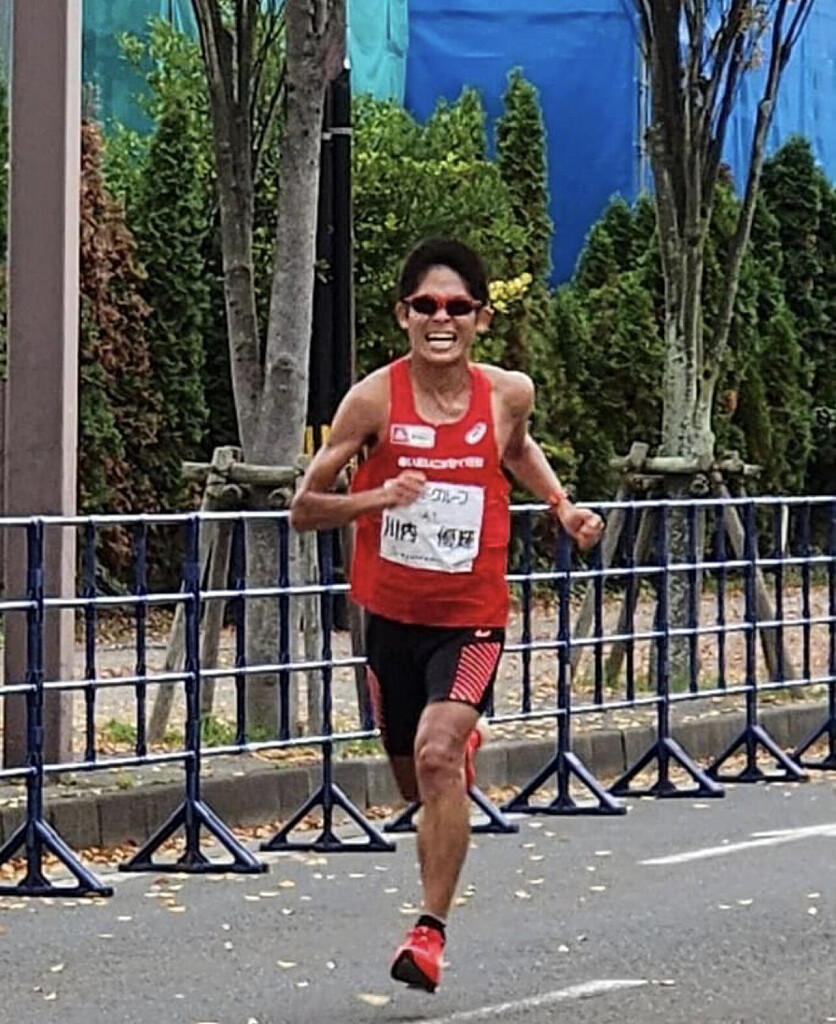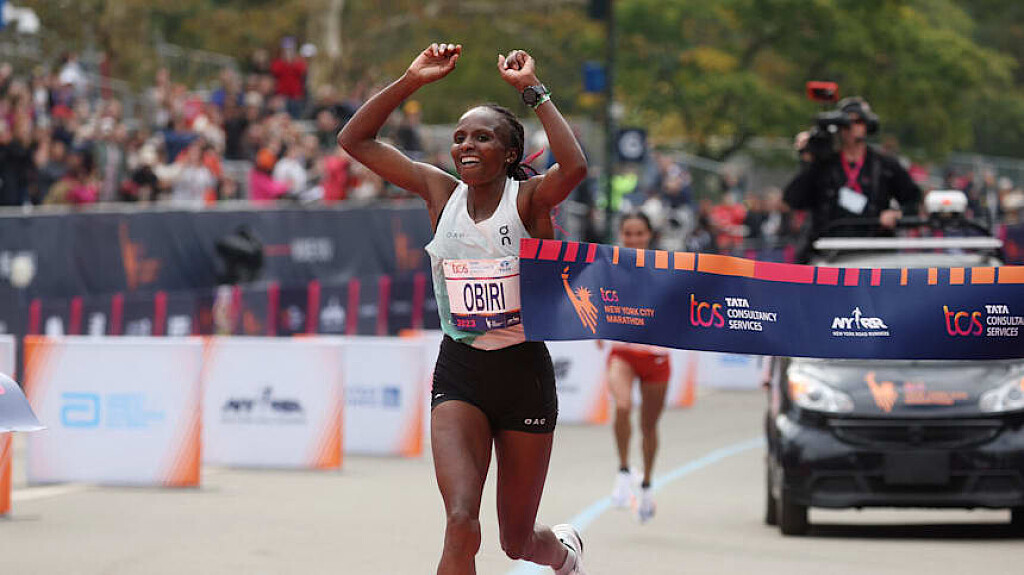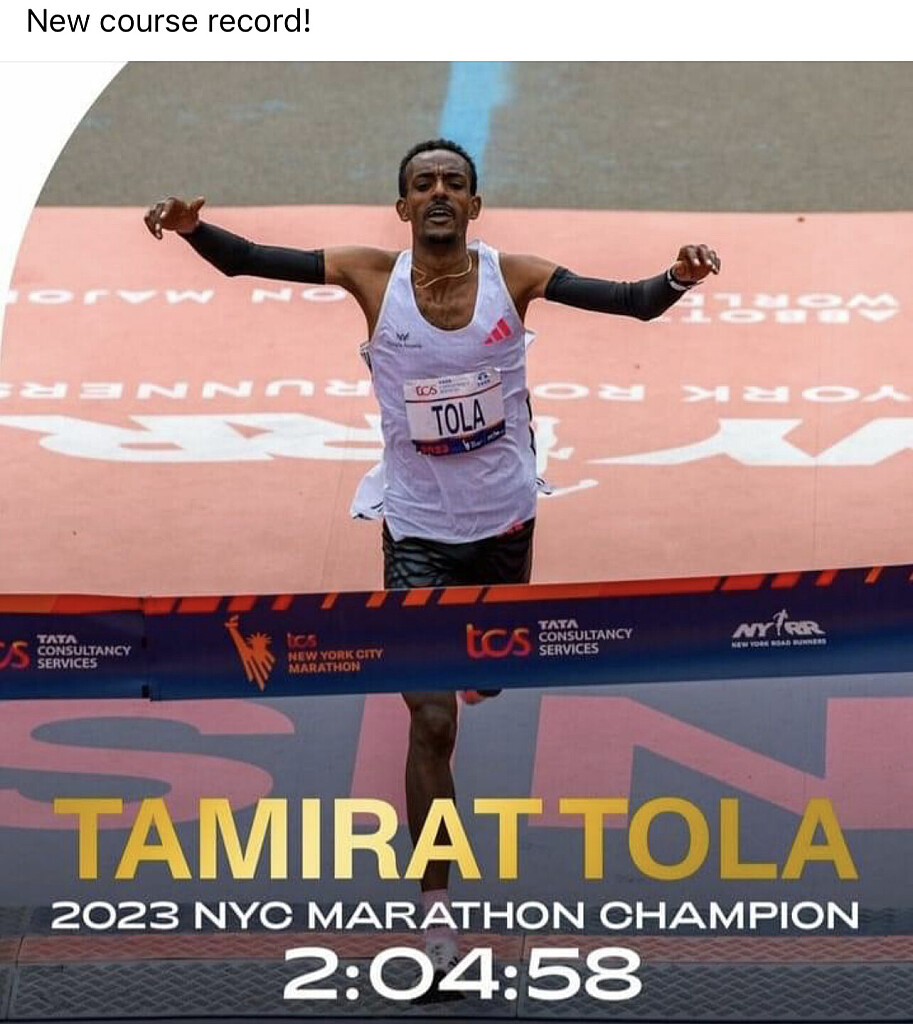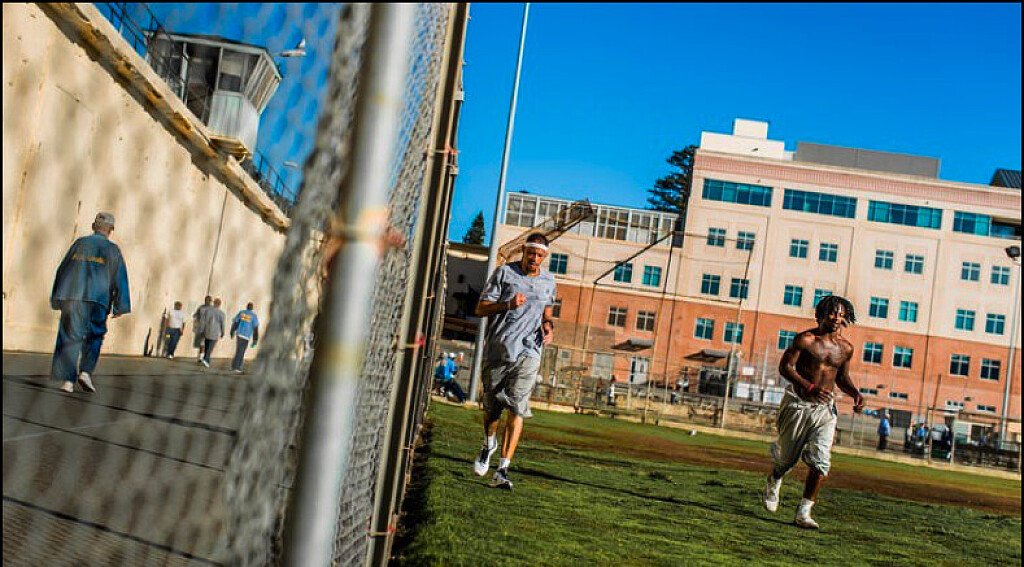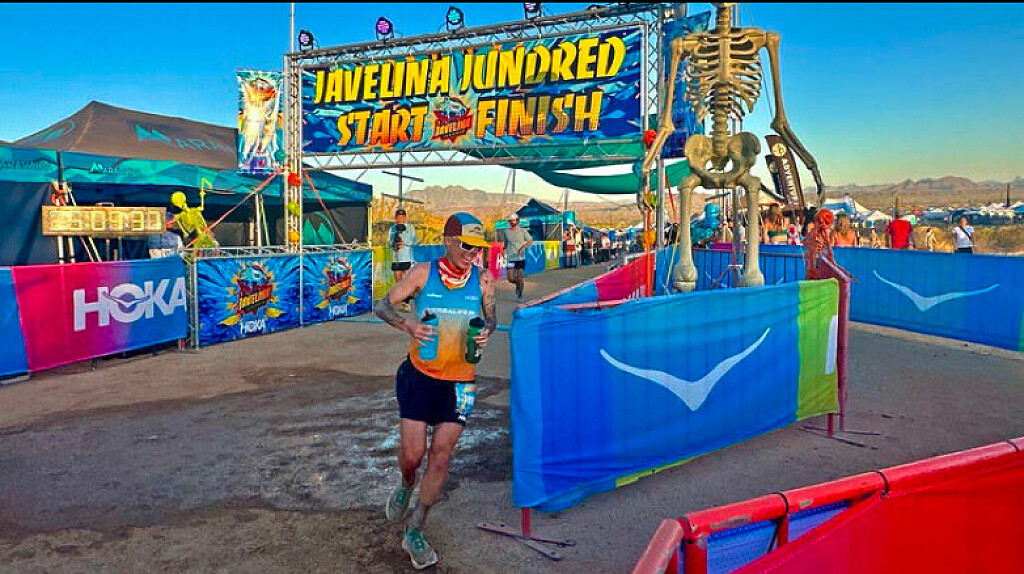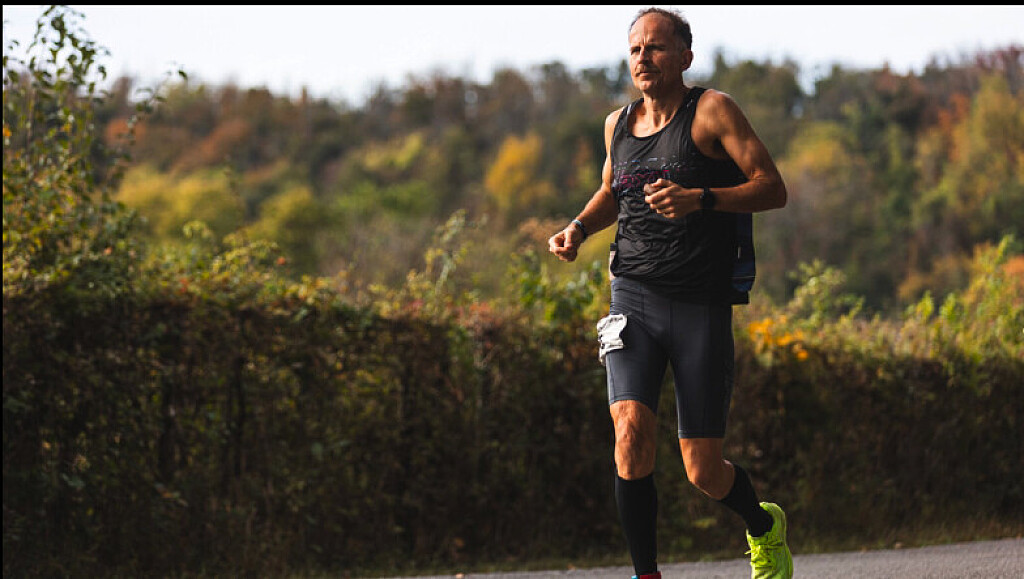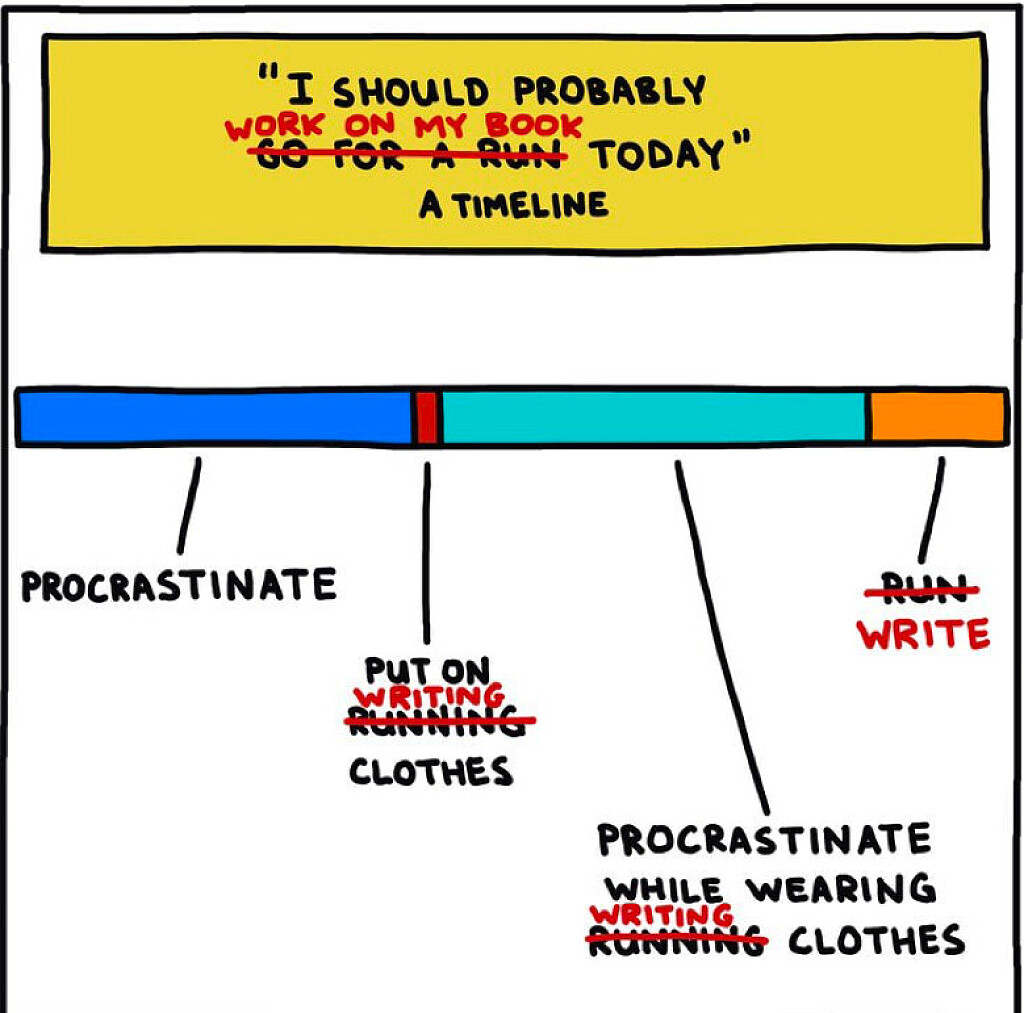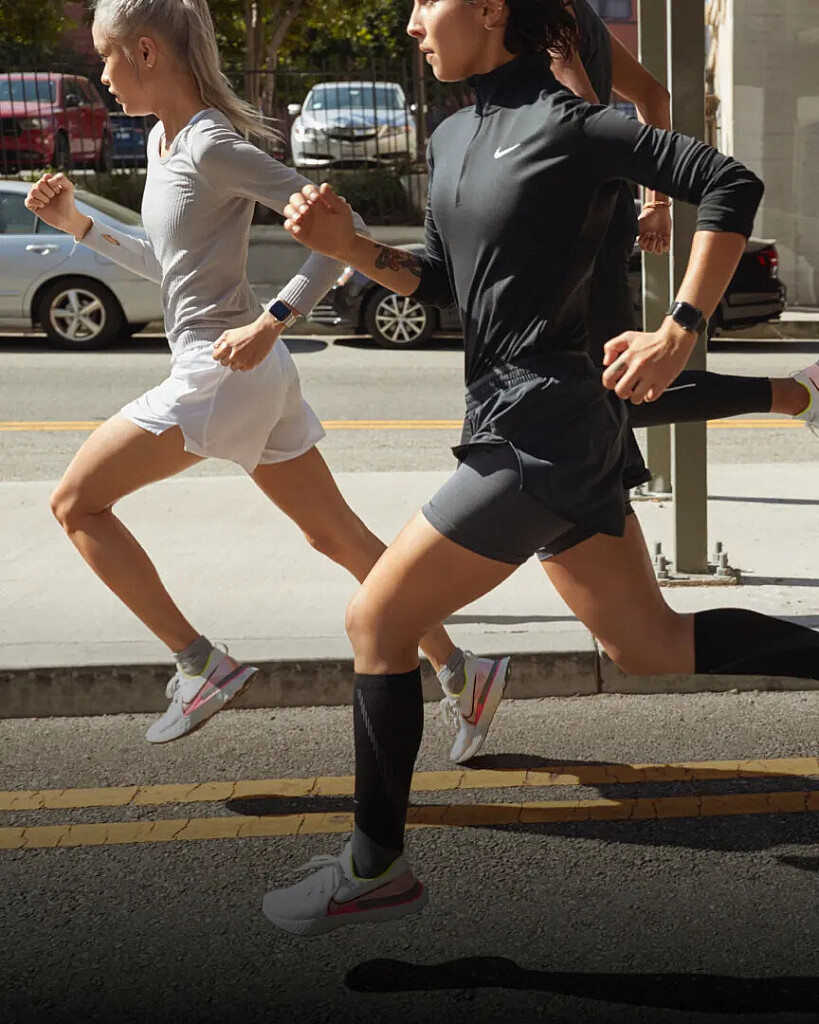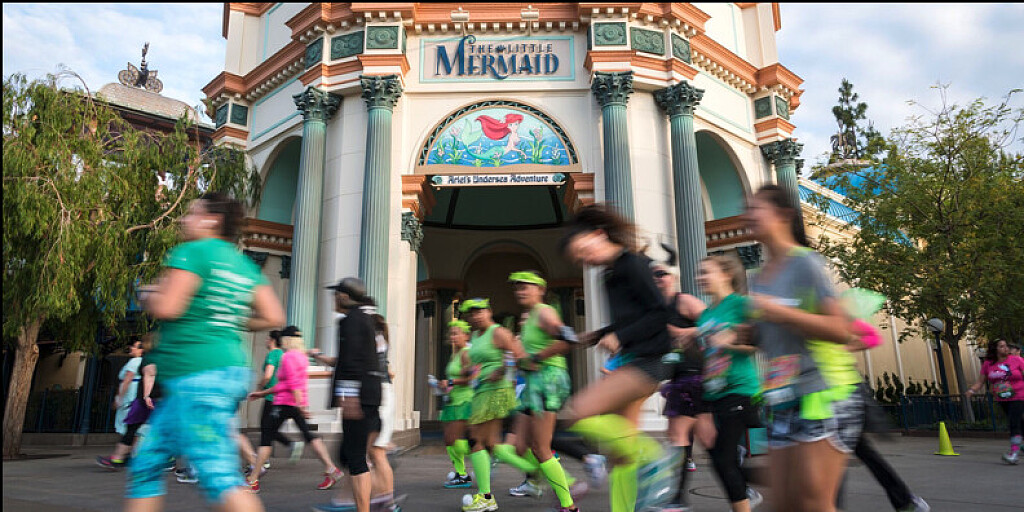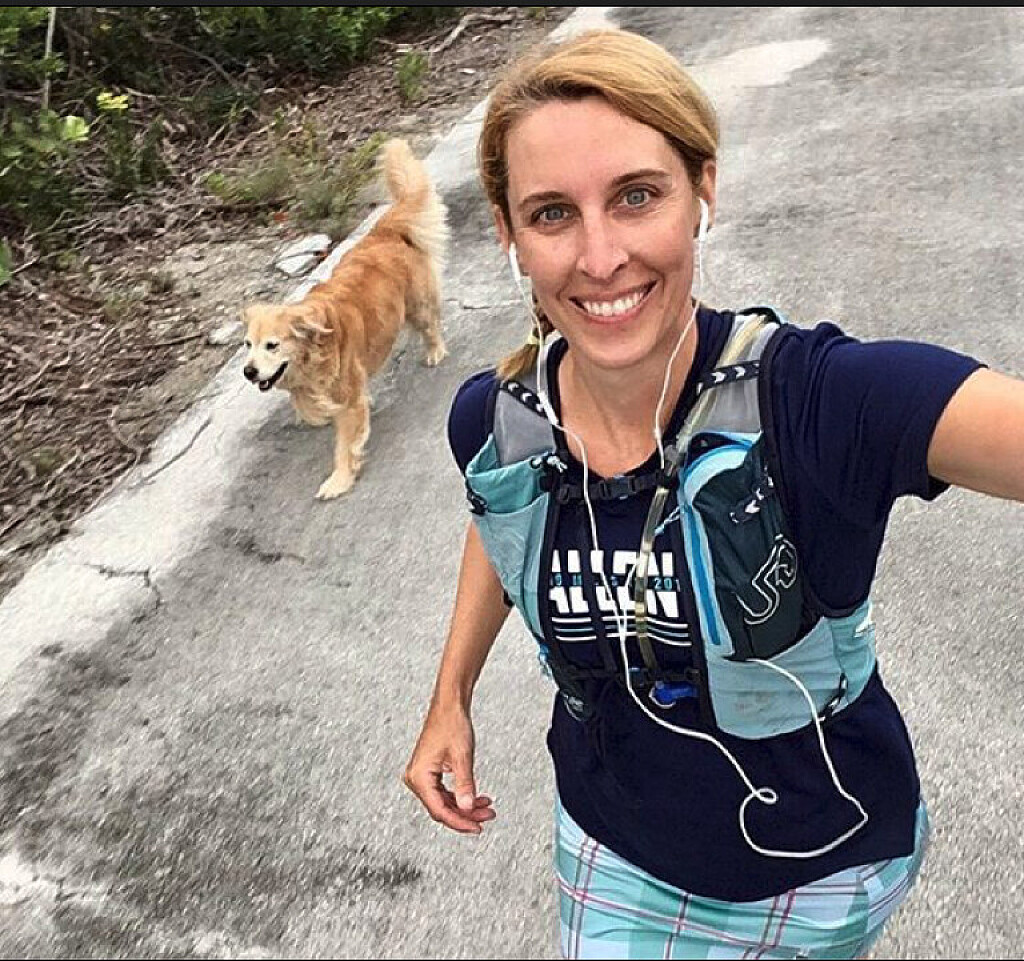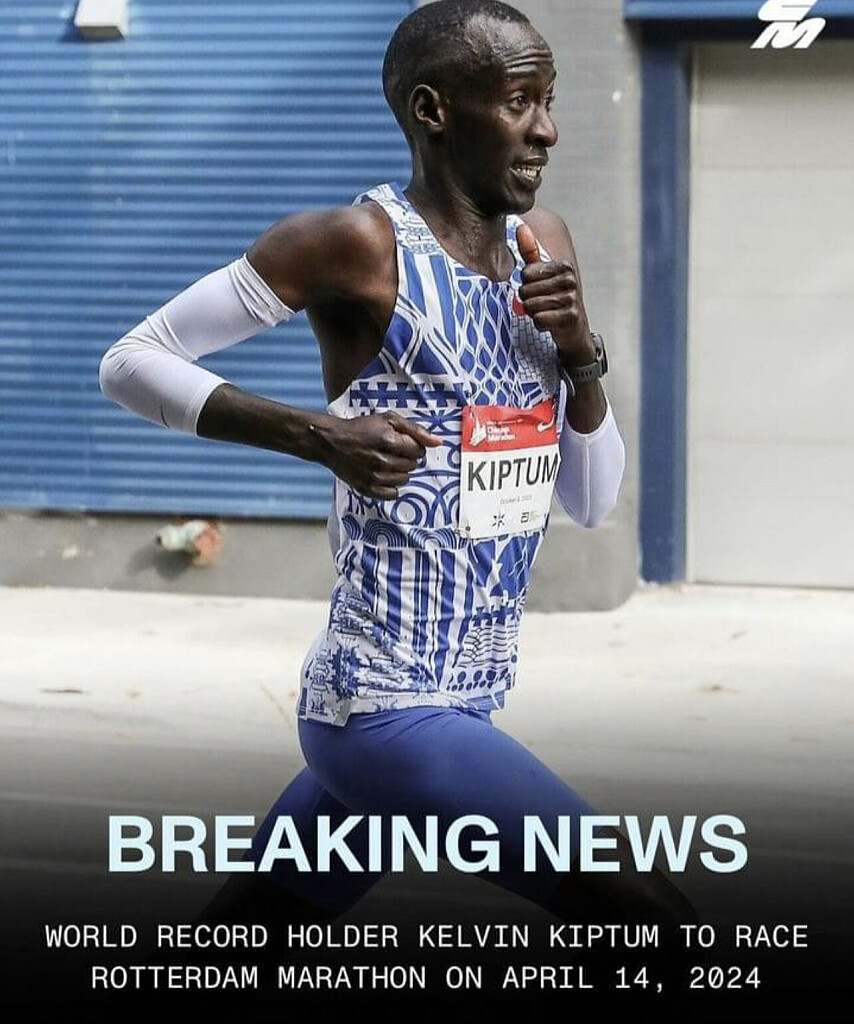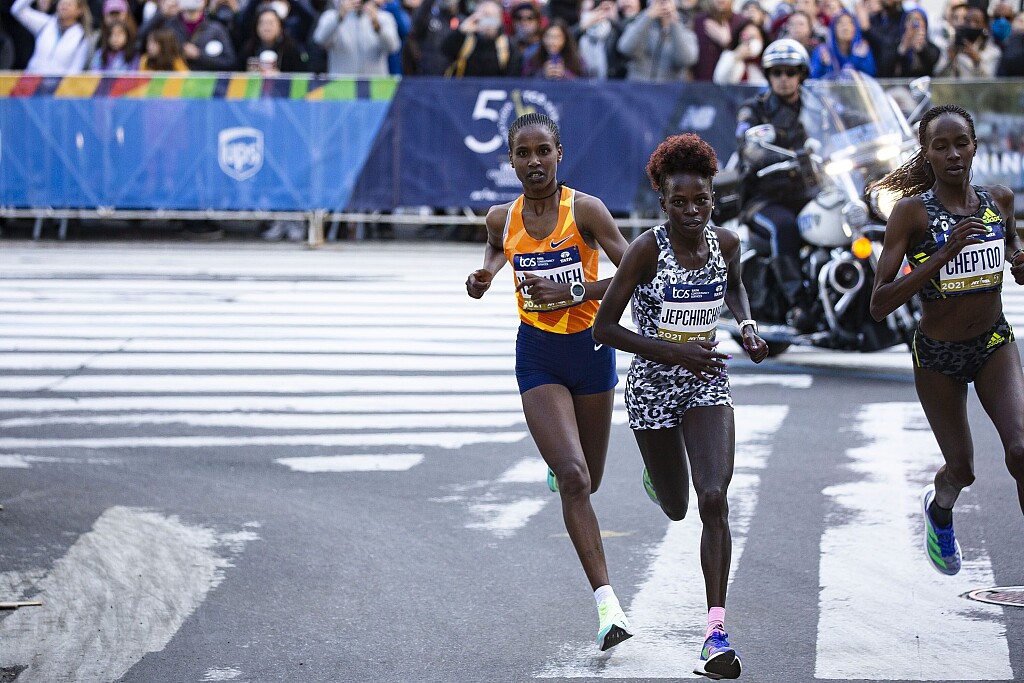Running News Daily
Running News Daily is edited by Bob Anderson in Los Altos California USA and team in Thika Kenya, La Piedad Mexico, Bend Oregon, Chandler Arizona and Monforte da Beira Portugal. Send your news items to bob@mybestruns.com Advertising opportunities available. Train the Kenyan Way at KATA Kenya. (Kenyan Athletics Training Academy) in Thika Kenya. KATA Portugal at Anderson Manor Retreat in central portugal. Learn more about Bob Anderson, MBR publisher and KATA director/owner, take a look at A Long Run the movie covering Bob's 50 race challenge.
Index to Daily Posts · Sign Up For Updates · Run The World Feed
Viola Chepngeno shares why she loves competing on hilly courses ahead of Boston Half Marathon return
Viola Chepengeno has shared her love for hilly courses as she gears up for her return to the Boston Half Marathon to defend her title.
Viola Chepngeno has disclosed her love for hilly courses as she gears up for her title defense at the Boston Half Marathon on Sunday, November 12.

Chepngeno observed that many people do not fancy competing on such tough courses but insisted that she is among the few who love competing in such environments.
She explained that she trains in Keringet, one of the hilliest places in Kenya and that’s where her love for the hilly courses stems from.

She expressed her excitement about returning to Boston, where she clocked 1:10:40 to win the race last season.
“I really like Boston and I am very happy to be coming back to defend my title this year. The course for the B.A.A. Half Marathon is great," she said.
"Some might call it challenging but I love it. Keringet, where I live in Kenya, is known to be one of the hilliest places to train in Kenya so I know I am good over tough courses."
The Kenyan added that she will be looking to make her full marathon debut at the Boston Marathon. Speaking about her Boston Half Marathon preparations, she noted that she is ready and capable of doing wonders.
She also noted that the crowds are a vital part of her success story. She recalled that her fans propelled her to victory last year and is keen to lower her Personal Best time this time round.
“Perhaps one day I will run the Boston Marathon too! I am mentally and physically prepared for the race, and I know what I am capable of doing. I just have to be ready for a tactical race with lots of quality opponents also competing," she added.
:The crowds were really amazing last year. They cheered me on and made me push even harder to achieve my goals, so I am hoping they can help me improve this year.
"I prefer warm weather - which we definitely didn’t get last year but I managed to do it so I’ll take whatever we get.”
(11/10/2023) ⚡AMPby Abigael Wuafula
Geoffrey Koech reveals what he is banking on ahead of Boston Half Marathon
Defending champion Geoffrey Koech has disclosed what he will be banking on as he gears up for the Boston Half Marathon on Sunday November 12.
The 30-year-old will be banking on his past victory and mastery of the course to propel him to his second successive victory on Sunday. He had a great build-up towards the race and will hope to execute it well.
He has so far competed in three half marathons where he finished third in two races, Publix Atlanta Half Marathon and Prague Half Marathon. He finished fourth at the Principality Cardiff Half Marathon.

“It feels very nice to be coming back to Boston, knowing that I am the reigning champion. I have trained specifically for this year now that I know the course," he said.
"Even though the course is challenging, I like it and I think my experience from last year gives me an advantage over those who will be doing it for the first time.

"We have hilly courses around my hometown of Kericho, so I have been adding some tough routes into my training, so my legs are used to it,” Koech said as per the race organisers.
Koech also explained that the fans give him a lot of encouragement and make him confident of winning the race.
He will be hoping that this time around, the fans will also play a huge role as he targets to win the race once again.
“The spectators gave me a lot of encouragement last year and made the course feel a lot easier. It’s so inspiring to be cheered all through the course," said Koech.
"The people of Boston are very friendly and welcoming to me. My goal is to win again this year so I hope I can do that and make the fans happy again.
"I like to run in temperatures between 59-64F and preferably no rain! I wonder what we will get on race day! See you soon, Boston."
(11/10/2023) ⚡AMPby Abigael Wuafula
B.A.A. Half Marathon
Dana-Farber and the Jimmy Fund have partnered with the B.A.A. in the Half Marathon for 13 years as the race’s presenting sponsor. Through this relationship, team members have collectively raised more than $5 million to support groundbreaking cancer research, and enabled Dana-Farber scientists and clinicians to positively impact the lives of cancer patients around the world. Dana-Farber runners often participate...
more...Holding your breath on runs could help keep you from getting sick, study finds
Holding your breath for five seconds after coming face-to-face with someone on a run could help cut your risk of catching COVID-19, the flu and other airborne illnesses, according to a new study out of Japan.
The finding comes from researchers at the University of Tsukuba, who investigated the link between aerosol dynamics and viral exposure risk during movement and face-to-face interactions.
For the study, researchers used a full-scale mobile mannequin that was propelled at different speeds to simulate walking (5 km/h), jogging (10 km/h), running (15 km/h) and sprinting (20 km/h), and used specialized equipment to visualize the “flow field” of aerosol particles from exhaled air. The researchers compared the differences between aerodynamic characteristics with and without ventilation and their effects on the risk of exposure to viruses.

They found that, regardless of pace and whether the face-to-face encounter happens in a non-ventilated or fully ventilated area (such as outdoors), the risk of viral airborne transmission remains highest within five seconds of a face-to-face encounter, and then falls off sharply.
Although this five-second window of peak transmissibility after face-to-face contact holds true whether walking or sprinting, pace may play a factor in the risk of transmissibility. Researchers found that as speed increases, especially in a non-ventilated area, the number of aerosol particles a runner is exposed to after an interaction decreases.

Of note to runners worried about contracting an illness during exercise are the three “risk-hedging behaviours” the researchers say “may greatly reduce the risk of viral exposure” during face-to-face encounters during runs.
Among their recommendations is “interrupting … inhalation” during the five seconds of peak transmissibility risk that follows a face-to-face encounter, either by holding your breath or exhaling for five seconds after passing someone on your run.
The researchers also recommend maintaining a distance of at least one metre from anyone coming at you from the opposite direction, and positioning yourself upwind from the other person, when possible.
“These actions are particularly effective during the critical (five-second) interaction period,” the researchers write. “Based on our findings, this study has implications for reducing aerosol-mediated transmission
(11/09/2023) ⚡AMPby Paul Baswick
Edwin Kiptoo is targeting Athens Marathon course record
Kenya’s Edwin Kiprop Kiptoo will make his debut in Greece at the 40th edition of the Athens Classic Marathon slated for this Sunday (12) in Athens, Greece.
The 30 year-old comes to this race with a life time best of 2:06.52 that he got last year at the Haspa Marathon where he finished in seventh place. This year in March he participated at the Seoul Marathon, finishing in seventh place in a time of 2:08.56.

Kiptoo will not have an easy ride as he will have to get past his compatriot Rhonzas Lokitam Kilimo who comes to this race with the second fastest time on paper of 2:08.08 that he got this year in April at the Haspa Marathon where he crossed the finish line in fifth place.

The two Kenyans will face-off with the defending champion and the Greece National Record Holder, Charalambos Pitsolis who won last year’s edition in time of 2:23.44. The 30 year-old who comes to this race with a personal best of 2:21.23 that he got early this year in Germany. Pitsolis will have an acid test from the Kenyans as the race organizers invited International elite athletes after three years of absence due to Covid-19 pandemic.
The organizers have assembled a strong deep elite field to try and chase the race course record of 2:10.37 that was set nine years ago by Felix Kipchirchir Kandie from Kenya.
(11/09/2023) ⚡AMPby John Vaselyne
Athens Marathon
The Athens Classic (authentic) Marathon is an annual marathon road race held in Athens, Greece, normally in early November. The race attracted 43.000 competitors in 2015 of which 16.000 were for the 42.195 km course, both numbers being an all-time record for the event. The rest of the runners competed in the concurrent 5 and 10 kilometers road races and...
more...Sifan Hassan, Kelvin Kiptum, Catherine Debrunner and Marcel Hug have been crowned Abbott World Marathon Majors Series XV champions
Sifan Hassan, Kelvin Kiptum, Catherine Debrunner and Marcel Hug have been crowned Abbott World Marathon Majors Series XV champions.
The series concluded at the 2023 TCS New York City Marathon.
Kiptum and Hug already had their victories assured, with Kiptum winning the TCS London Marathon and then the Bank of America Chicago Marathon in a world record 2:00:35 to seal the men’s open division title.

Wheelchair racer Hug had swept all five Majors before New York and promptly made it six from six with a dominant display in the final event. Hug was presented with a special gold Six Star medal to mark the accomplishment.
Hassan, with wins in London and Chicago, could only be caught by Kenyan Hellen Obiri, who needed to win in New York to add to her Boston victory and tie Hassan at the top of the leaderboard.

Obiri duly obliged, out-kicking Letesenbet Gidey in Central Park to claim the race victory.
That meant the six race directors of the Abbott World Marathon Majors had to each vote for their choice to be the 2023 women’s series champion. The vote went the way of Hassan, who set the second fastest time in history of 2:13:44 when she won in Chicago.
For Debrunner, it was all in her own hands. She went into the final race three points behind her Swiss compatriot Manuela Schär, with defending series champion, the USA’s Susannah Scaroni, two points further back and Madison de Rozario of Australia also within striking distance of the title if she could win in New York.
Debrunner left all her rivals behind from the gun, descending the Verrazzano-Narrows Bridge with a commanding lead that she never relinquished.
She went on to break Scaroni’s course record, finishing in 1:39:32 to take the win, the record bonus and the series.
It caps a stunning fall season for Debrunner, who shot into contention by winning the BMW BERLIN-MARATHON in a world record time before adding the Bank of America Chicago Marathon to her list of successes two weeks later.
Abbott World Marathon Majors CEO Dawna Stone said: “We are thrilled to see the series end in such spectacular fashion in New York City, and to have four such incredible series champions to celebrate.
“Series XV has been one for the history books, with three new world records set across the divisions and a host of course and regional records falling as well.
“Our six races continue to raise the bar of elite performance in the marathon, and we congratulate Sifan, Catherine, Kelvin and Marcel on their fantastic achievements in this series.”
Series XVI will begin at the Tokyo Marathon on March 3, 2024.
(11/09/2023) ⚡AMPby AbbottWMM
Hellen Obiri eager to add missing accolade in her cabinet at 2024 Olympic Games
Hellen Obiri has expressed her interest in competing for Team Kenya at the Olympic Games where she will be keen to add the only missing accolade in her cabinet.
Newly crowned New York City Marathon champion Hellen Obiri will be looking to add an Olympic gold medal to her decorated cabinet ahead of the games next year.
At the Olympics stage, Obiri has only managed to win silver in the past and insists gold is the only achievement she is yet to accomplish but she will be hoping to seal the deal next year.

The two-time Olympic 5000m silver medalist noted that if she makes it to Team Kenya, she will burn the midnight oil to ensure all the glory comes back to the country.
“If I get a chance (to be in the Kenyan team), I will work hard to go and get the gold medal because it’s the only one I’m missing,” Obiri said.
The reigning Boston Marathon champion also explained that she is uncertain about making Team Kenya for the Olympics but her fingers remain crossed.

“Hopefully (I’ll be in the Kenyan team) but I’m only going to talk about it if I’m actually chosen to compete.
"If I can get time and if I get selected, I will be willing to compete. You know in Kenya, selecting a team is tough owing to the fact that so many ladies have run fast.
"They said they will name the team before the end of the year and I do hope I will make the cut to the team,” Obiri said.
Meanwhile, the two-time World 5000m champion made her marathon debut at the 2022 New York City Marathon where she finished sixth.
She then went for the 2023 Boston Marathon earlier this year where she dominated before stamping her authority in the 2023 New York City Marathon.
(11/09/2023) ⚡AMPby Abigael Wuafula
Paris 2024 Olympic Games
For this historic event, the City of Light is thinking big! Visitors will be able to watch events at top sporting venues in Paris and the Paris region, as well as at emblematic monuments in the capital visited by several millions of tourists each year. The promise of exceptional moments to experience in an exceptional setting! A great way to...
more...Running may boost inflammation-fighting cells that enhance performance, study finds
A new study reported in The Harvard Gazette has shed more light on how exercise helps the body boost its ability to fight inflammation, which in turn improves performance.
The study, done in mice, suggests the possible role of the exercise in both reducing inflammation and improving performance. Exercise triggers natural inflammation, and our bodies counter the inflammation using something called T-cells or Tregs, which also seem to enhance our ability to use energy as fuel and improve our physical endurance.
The study

Inflammation is the body’s natural response to injury or infection, but prolonged or chronic inflammation can contribute to the development of heart disease, cancer and autoimmune conditions. Exercise causes temporary damage to the muscles and unleashes an inflammatory response–and this not only helps our bodies become stronger at fighting inflammation in general, but also may help us become faster and stronger athletes.
A team at Harvard Medical School analyzed what happens in cells that were taken from the hind leg muscles of mice that ran on treadmills. The team then compared them with muscle cells obtained from sedentary mice.

The muscle cells of the mice that ran on treadmills showed signs of inflammation and elevated levels of the inflammation-fighting T-cells or Tregs. Researchers discovered that not only did the Tregs lower exercise-induced inflammation, but they also were responsible for the broader benefits seen in regular exercises.
The animals who didn’t exercise still experienced muscle inflammation, but it was not combated by Tregs. Their muscle cells also had swollen mitochondria (a sign of metabolic abnormality). The animals lacking Tregs did not experience the same whole-body benefits from exercise, and had diminished aerobic capacity.
The takeaway
Exercise not only helps our bodies become better able to fight off inflammation, but the inflammation-response cycle that exercise generates may also help build muscular endurance.
“Our research suggests that with exercise, we have a natural way to boost the body’s immune responses to reduce inflammation,” said Diane Mathis, professor of immunology in the Blavatnik Institute at Harvard. “The immune system, and the Tregs cell arm in particular, has a broad impact on tissue health that goes beyond protection against pathogens and controlling cancer. Our study demonstrates that the immune system exerts powerful effects inside the muscle during exercise.”
While research on humans is needed, this research is an important step in understanding how, exactly, exercise makes us healthier. “Mice are not people,” researchers explained, “and the findings remain to be replicated in further studies. However, the study is an important step toward detailing the cellular and molecular changes that occur during exercise and confer health benefits.”
(11/08/2023) ⚡AMPby Keeley Milne
Men's Record-Holder To Defend Title At Manchester Road Race
Defending Manchester Road Race men's division champion and course record-holding Conner Mantz will return for the 2023 race.
Mantz, who won two NCAA Division 1 cross country titles when he ran for Brigham Young University, rocketed around the 4.748-mile course in 2022 with the time of 21:04. He knocked 12 seconds off the prior mark of 21:16 that Edward Cheserek set in 2018.
Also expected to be at the starting line will be last year’s runner-up, Morgan Beadlescomb.

Beadlescomb, a former Michigan State All-American, shadowed Mantz across the finish stripe last November with a time of 21:05.
Beadlescomb’s time is the second fastest-ever run on the Manchester course. Last year’s elite field was so strong that the first five runners to finish all eclipsed Cheserek’s former record, according to race officials.

“We are extremely pleased that last year’s top two finishers, Conner Mantz and Morgan Beadlescomb, are returning this year,” said Dr. Tris Carta, president of the Manchester Road Race Committee. “It is going to be another very exciting race."
Mantz placed sixth last month at the Chicago Marathon with the personal record and Olympic standard qualifying time of 2:07:47. Beadlescomb, 25, ran a personal best time of 13:08.82 for 5000 meters at a meet in Los Angeles in May and won the USATF national 5-K championship at the Abbott Dash to the Finish Line 5-K in 13:44 on Nov. 4th.
The 87th Manchester Road Race, which was recognized as a 2023 World Athletics Label Event, will be held on Thanksgiving Day, Nov. 23, at 10 a.m. It starts and finishes on Main Street in Manchester, in front of St. James Church. The road race is organized by 500 volunteers from the Manchester Road Race Committee, with support from the Town of Manchester.
(11/08/2023) ⚡AMP
Manchester Road Race
The Manchester Road race is one of New England’s oldest and most popular road races. The 86th Manchester Road Race will be held on Thanksgiving Day. It starts and finishes on Main Street, in front of St. James Church. The Connecticut Sports Writers’ Alliance recently honored the Manchester Road Race. The CSWA, which is comprised of sports journalists and broadcasters...
more...Two stair workouts to build unstoppable strength
Stair workouts are deceptively simple, and the first few moments of a stair session can seem positively easy. Wait a few minutes, though, and the leg (and arm, and core) burn will kick in. Tossing a stair session into your regular training mix offers a change of pace and terrain, and will build strength while improving cardiovascular fitness.
You can easily adapt any of these stair workouts to your fitness level by adding time to your warmup and cooldown or by increasing or decreasing repeats. Want your stair workout to mimic a more standard hill session? Warm up for 10 minutes, spend 30-45 minutes moving quickly up your chosen set of stairs using the walk down for recovery, with 10 minutes of cool-down running to wrap it up. To spice things up a little more, try one of these workouts.

Stair intervals
Warm up with a 15-20 minute easy jog, or walk up and down the stairs for five to 10 minutes.

Run 10-12 x 30 seconds up the stairs, run easily back down to the bottom and take 20 seconds’ rest between intervals.
Cool down with a 10-15 minute easy run, or walk up and down the stairs for five to 10 minutes.
1.- Leg crusher workout
Warm up with a 15-20 minute easy run, or walk up and down the stairs for five to 10 minutes.
Run up and down the stairs for two minutes, followed by 60 seconds of rest.
2.- Leg crusher workout
Warm up with a 15-20 minute easy run, or walk up and down the stairs for five to 10 minutes.
Run up and down the stairs for two minutes, followed by 60 seconds of rest.
(11/08/2023) ⚡AMPby Keeley Milne
Mohamed Aagab of Campbellton, N.B., has received a three-year suspension
The reigning Vancouver and Montreal Half Marathon champion, Mohamed Aagab of Campbellton, N.B., has received a three-year suspension for an anti-doping rule violation by the Canadian Center for Ethics in Sport (CCES).
Aagab provided a urine sample after winning the 2023 BMO Vancouver Half Marathon on May 7, which revealed the presence of recombinant erythropoietin (rEPO), a prohibited peptide hormone used to improve performance by increasing the blood’s capacity to carry oxygen.

Aagab was born in Morocco but has lived in Campbellton, N.B., since 2018. He won the Quebec City Marathon in 2018 and the 2023 21K de Montréal, as well as the 2023 BMO Vancouver Half Marathon.
According to CCES, on Oct. 3, Aagab signed an Early Admission and Acceptance Agreement, admitting to the violation and accepting the period of ineligibility and all other consequences. As a result, the otherwise applicable four-year period of ineligibility was reduced by one year, in accordance with the Canadian Anti-Doping Program (CADP). Aagab’s three-year suspension, effective Sept. 12, 2023, terminates on Sept. 11, 2026.

Aagab competed twice after his positive test on May 7, finishing 15th overall at the 2023 Ottawa Marathon in 2:18:34, finishing one spot behind top Canadian Lee Wesselius, who was 14th. He also ran in a 5,000m at the Hub City Classic in Moncton, N.B. on June 10, where he finished third, in 15:27. Both results will be disqualified, along with his Vancouver Half Marathon win.
In a statement to Canadian Running, Aagab’s agent, Yanatan Wegayehu, voiced disappointment with Aagab’s choices. “I was not aware that Mohamed ran the Vancouver half until I saw the results. His poor choices have negatively affected not only his career but also those around him,” said Wegayehu.
During the sanction period, Aagab is ineligible to participate in any capacity with any sport signatory to the CADP, including training with teammates.
This is the first distance running anti-doping case in Canada since David Freake of St. John’s, N.L. was given a four-year doping ban when he tested positive for EPO and several other banned substances after the 2019 Ottawa Marathon.
(11/08/2023) ⚡AMPby Marley Dickinson
BMO Vancouver Marathon
The BMO Vancouver Marathon is one of Vancouver’s most iconic marathon events. The event features a full marathon, marathon relay, half marathon, 8k run, and streets lined with thousands of spectators. Runners can expect to experience a little bit of everything that Vancouver has to offer as they run a straight course that starts at Queen Elizabeth Park, and finishes...
more...Isai Rodriguez, Sam Chelanga capture gold and silver for U.S. in men´s 10,000 meters at Pan American Games
Isai Rodriguez and Sam Chelanga made history Friday at the Pan American Games, becoming the first American teammates to take the top two spots in the men’s 10,000-meter final at Julio Martinez Pradanos National Stadium in Santiago, Chile.
Rodriguez, an All-American at Oklahoma State, and Chelanga – the collegiate 10,000 record holder from 2010 at Liberty – became the first pair of teammates from any country since 1979 and only the third tandem in meet history to secure gold and silver in the event.
Rodriguez prevailed in 28 minutes, 17.84 seconds, the fastest Pan Am Games winning performance since 2007, and Chelanga clocked 29:01.21, with Guatemala’s Alberto Gonzalez earning bronze in 29:12.24.

Rodriguez and Chelanga joined Mexico’s Rodolfo Gomez and Enrique Aquino in 1979, along with Luis Hernandez and Gomez in 1975 as the only teammates to sweep the top two spots in the men’s 10,000.
Rodriguez secured the first 10,000 gold for the U.S. since Bruce Bickford triumphed in 1987 in Indiana.

It marked the second straight Pan Am Games that the Americans had two athletes on the 10,000 podium, with Reid Buchanan and Lawi Lalang achieving silver and bronze in 2019 in Peru. The U.S. also had a pair of 10,000 medalists in 1967 in Winnipeg.
The Americans added bronze medals in the women’s 1,500-meter final and javelin throw competition, in addition to the men’s shot put, taking the lead with 19 overall medals entering the last day of the track and field schedule.
Brazil leads with seven gold medals and is second behind the Americans with 18 overall medals.
Darlan Romani triumphed for Brazil in the men’s shot put with a fifth-round effort of 70-1 (21.36m).
Mexico’s Uziel Aaron Munoz secured silver at 69-4.75 (21.15m), with former Arizona standout and NCAA Division 1 champion Jordan Geist edging fellow American athlete Roger Steen for bronze by a 67-4.25 (20.53m) to 67-3.50 (20.51m) margin.
Colombia’s Flor Denis Ruiz won the women’s javelin gold medal with a throw of 207 feet (63.10m) on her opening attempt.
Nebraska teammates Rhema Otabor, representing the Bahamas, and American competitor Maddie Harris captured silver and bronze, respectively. Otabor had a mark of 198-7 (60.54m) and Harris produced a throw of 197 feet (60.06m).
Venezuela’s Joselyn Brea completed a sweep of the women’s 1,500 and 5,000 titles, clocking 4:11.80 to edge Cuba’s Daily Cooper (4:11.86) and American athlete Emily Mackay (4:12.02).
Gianna Woodruff believed she had become the first female athlete from Panama to capture a Pan Am Games gold medal in any event, clocking 56.44 in the women’s 400-meter hurdles.
But Woodruff was later disqualified as a result of Rule 22.6.2, which states that an athlete is penalized after “knocking down or displacing any hurdle by hand, body or the upper side of the lead leg.”
Brazil’s Marlene Santos, who ran 57.18, was elevated to the event winner, with Daniela Rojas from Costa Rica earning silver in 57.41 and Montverde Academy of Florida senior Michelle Smith, representing the U.S. Virgin Islands, taking bronze in 57.53.
Jamaica’s Jaheel Hyde emerged victorious in the men’s 400-meter hurdles in 49.19.
Brazil’s Matheus Lima earned silver in 49.69 and Cuba’s Yoao Illas was the bronze medalist in 49.74.
Cuba’s Luis Enrique Zayas cleared 7-5.25 (2.27m) on his third attempt to prevail in the men’s high jump final.
Puerto Rico’s Luis Joel Castro achieved a 7-4.25 (2.24m) clearance on his first opportunity to capture silver, with Donald Thomas of the Bahamas grabbing bronze after achieving the height on his third try.
Cuba added two more medals in the men’s triple jump final, with Lazaro Martinez winning on his first attempt with a 56-4.75 (17.19m) performance.
Brazil’s Almir Dos Santos secured silver at 55-6.25 (16.92m) and Cuba’s Cristian Napoles took the bronze medal at 54-8 (16.66m), holding off American athlete Chris Benard and his fourth-place mark of 54-1 (16.48m).
(11/07/2023) ⚡AMPby Erik Boal
Pan American Games
The Pan American Games (also known colloquially as the Pan Am Games) is a continental multi-sport event in the Americas featuring summer sports, in which thousands of athletes participate in a variety of competitions. The competition is held among athletes from nations of the Americas, every four years in the year before the Summer Olympic Games. It is the second...
more...Caster Semenya: Double Olympic champion not ashamed of being different
Two-time Olympic champion Caster Semenya says she is "not going to be ashamed" of being "different", and will "fight for what is right" amid her ongoing dispute with athletics authorities.
Semenya, 32, was born with differences in sexual development (DSD) and cannot compete in female track events without taking testosterone-reducing drugs.
The South African wants to hold World Athletics to account for what she says is discrimination against athletes with hyperandrogenism and recently said she is turning her attention to "winning battles against the authorities" rather than collecting medals, with competing at the Paris 2024 Olympics no longer a goal.

In a wide-ranging interview with BBC Breakfast's Sally Nugent, Semenya says:
She felt she was "different" from the age of five but "embraces" her differences
She will not conform "to be accepted"

She wants to empower women to "have a voice"
"Leaders" in sport are "turning women against women"
'I will embrace my differences'
Hyperandrogenism is a medical condition characterised by higher-than-usual levels of testosterone, a hormone that increases muscle mass and strength.
Under regulations introduced in 2018, athletes with DSD were only allowed to compete in female track events between 400m and the mile if they reduced their testosterone levels.
In March, World Athletics ruled that DSD athletes must now have hormone-suppressing treatment for six months before being eligible to compete in all-female events.
"For me, I believe if you are a woman, you are a woman," said Semenya, who won Olympic 800m gold in 2012 and 2016 and is a three-time world champion over the same distance.
"No matter the differences you have. I have realised I want to live my life and fight for what I think and I believe in myself.
"I know I am a woman and anything that comes along with it just accept it."
Semenya ran in the 5,000m at last year's World Championships in Oregon but failed to qualify for the final.
In July, the European Court of Human Rights (ECHR) ruled in her favour in a case related to testosterone levels in female athletes.
"At the end of the day, I know I am different. I don't care about the medical terms or what they tell me. Being born without a uterus or internal testicles. Those don't make me less of a woman," added Semenya.
"Those are the differences I was born with and I will embrace them. I am not going to be ashamed because I am different. I am different and special and I feel great about it.
"It comes with why we fight for women's sport. The importance of women's sport is not being taken seriously and we need to take charge of our own bodies. Decide what is right for us. Not another gender deciding what we should look like.
"If we are woman enough or not, it is up to us. We know and believe in what is right, then why must we stop."
The case at the ECHR was not against sporting bodies or DSD rules - but specifically against the government of Switzerland for not protecting Semenya's rights and dates back to a Swiss Supreme Court ruling three years ago.
The ECHR found the Swiss government did not protect Semenya from being discriminated against when its Supreme Court refused to overturn a decision by the Court of Arbitration for Sport (Cas), which upheld the World Athletics rules.
The case has now been referred to the Grand Chamber of the ECHR for a final ruling following a referral request from the Swiss government.
'I am not going to be somebody I am not'
Semenya has argued that taking testosterone-reducing medication could endanger her health and that the ruling denied her and other athletes with DSD the right to rely on their natural abilities.
She told BBC Breakfast that she knew she was "different" from the age of five but, in her autobiography, The Race To Be Myself revealed she found out she "did not have a uterus or fallopian tubes" at the same time as "the rest of the world" after a gender test in 2009.
She says she has "nothing to hide", adding: "I am a woman and have a vagina just like any other woman.
"I am living a different life and I will continue living that, as that is what makes me feel good. I am not going to be somebody I am not, as I have to fit in to be accepted."
Last week, Semenya said she had achieved all she ever wanted on the track, and now wants to "pave the way and make sure each and every young girl is treated well".
"My future is to fight injustice, fight for inclusivity and diversity," she said.
"For me, I'm not going to allow leaders who come for the selfish means into our business to destroy it. I'm about empowering women and making sure they have a voice.
"At the moment, I don't see a lot of women voicing out if they have problems or something to say. Each and every woman out there should fight for their own. I'll always fight for what is right, I know what is right, and I know how things are supposed to be done. Let's wake up as women and fight for what is right."
She added: "[Sporting leaders] are turning women against women. If you say you're acting in the best interests of athletes, then do that. It's not up to you to decide what gender should look like, what sex should look like. Govern, make money, promote sport. Very clear message and very loud - do the job, promote the sport and let us sports people entertain."
Last week, World Athletics said in a statement to Reuters: "World Athletics has only ever been interested in protecting the female category. If we don't, then women and young girls will not choose sport. That is, and has always been, the federation's sole motivation."
A spokesperson told the BBC: "World Athletics has 15 years of data, observations, and information directly from DSD athletes in our own sport that show high testosterone levels do provide an unfair advantage in the female category - and that our guidelines on testosterone thresholds are necessary, reasonable, and proportionate in our aim to protect the integrity of the female category."
(11/07/2023) ⚡AMPby BBC News
Panuel Mkungo and Beatrice Cheptoo shine as Kenyans dominate at Istanbul Marathon
Panuel Mkungo and Beatrice Cheptoo are the winners of the 2023 edition of the Istanbul Marathon.
Little-known Panuel Mkungo and Beatrice Cheptoo put up a good fight to clinch top honors at the 2023 Istanbul Marathon.
Mkungo clocked 2:10:35 to win the race ahead of Bernard Cheruiyot and James Kiplagat who finished second and third in respective times of 2:12:41 and 2:12:44.

As the race started, Mkungo was not in contention for the title in the first 20km as he settled in the middle of the leading pack. The leading pack passed the 5km mark in 15:05 with Mkungo and his compatriots looking comfortable.
The athletes then passed the 10km mark in 30:06 in course course-record pace. They then passed the half km mark in 1:04:43, still looking very comfortable to go for the course record.

Mkungo then started opening a gap between him and the Kenyan duo of Cheruiyot and Kiplagat and he was looking very comfortable at the 30km mark but kept looking back. His closest challenger was who was trying hard to close the gap.
Mkungo kept in the fuel, passing the 35km mark in 1:04:43 still looking over his shoulder to watch his opponents. At the home straight, nothing could stop the Kenyan as he sprinted to the finish line and led a clean Kenyan sweep.
The women’s race was also dominated by Kenyans as Beatrice Cheptoo took top honors in the race, clocking 2:27:09 to cross the finish line after a hard-fought win.
The Kenyan duo of Veronica Maina and Valentina Mateiko finished second and third in respective times of 2:27:24 and 2:32:15.
(11/07/2023) ⚡AMPby Abigael Wuafula
N Kolay Istanbul Marathon
At the beginning, the main intention was simply to organise a marathon event. Being a unique city in terms of history and geography, Istanbul deserved a unique marathon. Despite the financial and logistical problems, an initial project was set up for the Eurasia Marathon. In 1978, the officials were informed that a group of German tourists would visit Istanbul the...
more...The science behind the warmup,new research explains how light movement before your workout preps your muscles for running
Most runners do at least a short, easy jog before any race, interval workout or other higher-intensity session. It’s widely accepted as being a beneficial, indeed a necessary, prelude to a hard session, but what exactly is happening in your body during your warmup, and how does it benefit your performance? New research has uncovered the answer.
The study, published in the Journal of General Physiology, was led by Osaka University, The Jikei University School of Medicine and National Institutes for Quantum Science and Technology. The specifics of how it enhances muscle performance had not previously been clearly understood; this study aimed to uncover the effects of heating on muscle contraction and explore whether different muscles have varying temperature sensitivities.
The study

The research team discovered that muscle cells contain certain proteins that act as temperature sensors. They found that skeletal muscles, which are responsible for movement, were more sensitive to heating than the muscles of the heart, for example. This greater sensitivity allows skeletal muscles to contract quickly and efficiently when warmed up, even from slight increases in temperature resulting from light movement, such as a warmup jog.
On the other hand, the muscles of the heart have a lower temperature sensitivity, which helps them maintain a continuous beat, regardless of temperature. This makes sense, because while your muscles have the opportunity to rest when you’re not using them, your heart needs to beat continuously no matter how hot or cold you are. In other words, a slight increase in temperature benefits your skeletal muscles, but has relatively little effect on your heart.

What does this mean for runners?
The findings suggest that warming up skeletal muscles can enhance their efficiency by saving energy and allowing for better rest when not in use.
Of course, is that there’s a fine line between warming up well and over-taxing your muscles before your workout or race. How much or how little you warm up will depend on several factors, including the length of your run or race. (In general, the shorter the race or workout, the faster you must run, and therefore the longer you should spend warming up.) Another factor is the temperature outside–you likely don’t need to warm up for as long when it’s 30 C outside as when it’s 5 C.
The warmup does not have to complicated. In most cases, a light, 10-minute jog and some simple warmup drills are all you need to be ready to run at your best.
(11/07/2023) ⚡AMPby Brittany Hambleton
British ultra runner Carla Molinaro wins world 50km title
British ultra runner strikes individual gold and leads to GB squad to team title at the IAU World 50km Championship in India
Great Britain’s Carla Molinaro took gold at the IAU World 50km Championship in Hyderabad early on Sunday morning (Nov 5) in a time of 3:18:22, Adrian Stott reports.

She finished just over 40 seconds ahead of Andrea Pomaranski of the United States, who recorded 3:19:05.
British 100km champion Sarah Webster took the bronze medal in 3:20:05.

With Anna Bracegirdle fourth in 3:20:37 and Rachel Hodgkinson fifth in 3:20:47, GB & NI were clear winners of the team medals ahead of the United States and Croatia.
For Molinaro, the 39-year-old Clapham Chaser who splits her time between London and South Africa, it capped a successful year, having placed third in the 56km Two Oceans Marathon and the 56-mile Comrades Marathon in South Africa.
Webster, who broke Carolyn Hunter-Rowe’s long-standing British 100km record when winning the GB title earlier in the year, was always in contention and her 100km strength paid dividends in the final kilometers.
Hodgkinson and Bracegirdle were both running their first 50km races, selected on the back of good marathon performances earlier in the year.
Clean sweep for Spain in men’s race
Spain dominated the men’s race, taking all three podium places as Chakib Lachgar claimed the gold medal in 2:48:18.
His compatriots Alejandro Vicente and Jesus-Angel Pascual took the silver and bronze medals, clocking 2:49:28 and 2:50:10 respectively.
Lachgar, 34, who boasts a marathon best of 2:11:11 and a half-marathon of 1:01:45, again confirmed at a global level that 50km is continuing to be the domain of competent marathon runners moving up in distance. His time, subject to confirmation, puts him fourth on the all-time European 50km rankings.
Will Mycroft was Great Britain & Northern Ireland’s first finisher in ninth with 2:55:58, leading the men’s team to the bronze medals. He was backed up by Andrew Davies in 13th. The bronze medalist from the 2022 European 50km championships recorded 2:57:14.
(11/06/2023) ⚡AMPby Athletics Weekly
IAU 50km world championships
The IAU 50km World Championship is a prestigious ultramarathon race organized by the International Association of Ultrarunners (IAU) first time in India.The 50km distance is a popular choice for ultrarunners, offering a unique challenge that falls between a marathon and longer ultramarathon distances. Participation in the IAU 50km World Championship is typically based on qualification standards established by each country's...
more...Pizzolato donates 1984 New York City Marathon winning shoes to MOWA
At the end of ABC television’s coverage of the 1984 New York City Marathon, there’s a shot of Orlando Pizzolato sitting on a bench in Central Park, retying his well-worn footwear. “Those shoes may have had it,” remarked anchorman Jim McKay.
Not quite. Some 39 years on, the shoes that took the unheralded Italian to the biggest upset victory in the history of the Big Apple’s big race have been generously donated to the ever-expanding Heritage Collection in the Museum of World Athletics (MOWA).

Whatever unfolds in the 2023 edition of the New York City Marathon this weekend, there’s unlikely to be anything as dramatic as the battle of attrition from which the plucky Pizzolato emerged as the unlikely hero in 1984.
As the Italian and the rest of the 18,000 field assembled for the start, it was difficult to pick out the contours of the Verrazano-Narrows Bridge. Such was the heat haze that had descended upon the Big Apple on the last Sunday in October that year.

“The weather is going to be a huge factor,” proclaimed Marty Liquori, the great US miler, working as the expert summarizer on the men’s race for ABC Sports. “We’re looking at the hottest and most humid New York Marathon ever.”
The mercury was already pushing 70°F and the humidity was close to maximum.
“That causes two things to happen at the front of the pack,” continued Liquori, runner up to Miruts Yifter in the 5000m at the inaugural World Cup in Dusseldorf in 1977. “The natural front runners get conservative, so the pack stays tighter. The second thing is the hotter it gets, the greater chance there is for an upset.”
“Yes, look out for the man you do not know in this marathon,” predicted McKay, the distinguished Voice of ABC’s Wide World of Sports.
“This man could be for real”
Not a lot of people were looking out for the runner bearing race number 100, clad in the colors of his homeland – blue and white singlet, red shorts.
Pizzolato, a 26-year-old representing the University of Ferrara sports club from the north of Italy, was no Ferrari of a marathoner.
In seven attempts at the classic 26.2-mile distance, he boasted a best of 2:15:28 - more than seven minutes slower than the world record figures of 2:08:05 set by Welshman Steve Jones in Chicago a week before the 1984 New York race.
Pizzolato’s PB came in New York in 1983, the year Rod Dixon made up a half-mile deficit to overhaul Briton Geoff Smith virtually on the finish line in Central Park. The New Zealander’s winning time was 2:08:59. He finished 6min 29sec and 26 places ahead of Pizzolato.
Twelve months later, Dixon, the Olympic 1500m bronze medalist behind Finn Pekka Vasala and the trailblazing Kenyan Kip Keino in Munich in 1972, returned to New York as favorite for the men’s title – and the $25,000 prize and Mercedes Benz that went with it in that first year of open professional running.
“I’m a lot more confident in my own mind, having run successfully in ’83,” he told Liquori in a pre-race interview. “I think I’m rightly the favorite. I’ve trained well and I’ve got confidence in my own ability. I’ll go out and if I strike it right, they won’t catch me.”
Five miles in, given the exceptional conditions, Liquori and four-time winner Bill Rodgers, following the men’s race from ABC’s on-course buggy, felt Dixon was striking it right – 18 seconds down on home runners Pat Petersen and Terry Baker in a pack that included two-time Commonwealth gold medallist Gidamis Shahanga of Tanzania.
Pizzolato was also among the chasing group, seemingly unknown to any of the experts. His first name check came as he overtook Jose Gomez of Mexico to claim pole position, shortly before reaching halfway in 65:03.
“Could this, Marty, be the man they did not know?” McKay enquired.
“This man could be for real,” Liquori replied. “In the hotel I saw Franco Fava, a great steeplechaser from Italy, and he mentioned that it has been so hot in Italy this summer and fall. So, this is one person who is accustomed to the heat.”
Rodgers was not quite so sure. “I think it’s still anybody’s race,” he said. “The guy from Italy looks good. But we’ll have to see later in the race.”
“The Pope, Reagan and then it was me”
The guy from northern Italy was certainly looking good.
While Dixon seemed ill at ease, struggling to cope with the pace and the conditions some 1:15 behind, Pizzolato appeared to be feeling groovy as he crossed the Queensboro Bridge, the subject of Simon and Garfunkel’s 59th Street Bridge Song.
“Orlando looks very good,” Liquori observed. “He looks to have a style that’s fitting for a marathoner. When you’re looking around, taking in the scenery, you know that the running is coming easy.
“One thing should be pointed out. Steve Jones, who set the world record last week, was a very well-established track runner. He was eighth in the 10,000m at the Olympic Games.
“But Orlando has run a minute slower for 10,000m: 28:22. Were he to win this, it would be just about the biggest upset in a major marathon that I’ve seen.”
By the 20th mile mark, it was clear that Pizzolato himself was somewhat upset. The temperature had risen to 74 degrees and the humidity to 96%. His pace slowed to a 5:26 mile.
Briton Dave Murphy was gathering momentum, moving up into second, and Dixon into third.
“Well, I think we’re entering the last chapter of Orlando,” ventured Liquori. “I think I might have got too excited at 18 miles. Maybe it was the Italian in me.”
Soon after, Pizzolato grabbed his chest and slowed to a temporary halt. Three times he stopped, then started up again. “This man is in trouble,” said McKay.
Entering Central Park, with less than three miles to go, Pizzolato stopped for a fourth time. He clutched his chest, glugged half a cup of water and poured the other half over his head.
Dixon was out of the equation at this point, having stepped off the course suffering from cramps. But Murphy had closed to within 15 seconds.
“It’s like the tortoise and the hare,” said Liquori. “Pizzolato’s running-stopping, running-stopping. Murphy is just taking a steady course. It looks like it’s his race.
“For Pizzolato now, the drama now is how much of his soul he’s going to lay down.”
Thrice more, Pizzolato stopped and started, each time taking on fluid and calmly checking out the gap behind him. Somehow, he managed to lay down enough of his soul to bridge over his troubled water.
The finished line approached with Murphy not yet in sight.
“He has pulled it off,” Liquori pronounced. “He has mentally been able to fight through his form having gone to pieces, through having had so many problems.”
“It was very hot,” said Pizzolato, who crossed the line in 2:14:53, 43 sec ahead of Murphy. “I had cramp in my stomach. It was very terrible, but I am very happy.”
The New York Times the next day concentrated on Grete Waitz’s sixth success in the women’s section, praising Pizzolato in passing for having overcome the heat and the late challenge of Murphy in “a men’s competition that the stifling heat and humidity reduced to a battle of attrition.”
Back home in Italy, the reaction was different. “The first story in the news was the Pope,” Pizzolato reported, “then Ronald Reagan’s election. Then it was me.”
Retained title
Twelve months later, the guy from Italy returned to New York and proved he was no flash in the marathon pan.
This time he was the tortoise, running his steady race while Geoff Smith burned himself out at world record pace, then overtaking Djibouti’s World Cup Marathon winner Ahmad Saleh two miles from home to become the Big Apple’s first overseas two-time winner, clocking 2:11:34.
“Last year I won by mistake, probably,” Pizzolato told The New York Times. “This year was more exciting. I was not in confusion in the last 365 yards.
“All the people seemed to know my name and my number. It was like everyone was a friend of mine. It was a great source of power.”
In an era when the fast men of the track came to dominate the men’s marathon – with the likes of Jones, Dixon and Carlos Lopes, the Portuguese runner who won the Olympic title in Los Angeles in 1984 and succeeded Jones as world record-holder in 1985 – Pizzolato was a great source of power and inspiration to the traditional specialists of the event.
He never broke 2:10. His fastest time was 2:10:23, which he recorded while placing sixth in the World Cup Marathon in Hiroshima in 1985. The following year Pizzolato was third in Boston (2:11:43), then overtook a shattered Jones to claim the European Championships silver in Stuttgart (2:10:57) behind his compatriot Gelindo Bordin, and returned to New York taking third place (2:12:13) behind another Italian, Gianni Poli.
These days the two-time Italian king of New York operates a company bearing his name which offers running camps and a consultation service, and which provides scholarships to athletes aged from 16 to 22.
(11/06/2023) ⚡AMPby Simon Turnbull for World Athletics Heritage
Purity Komen among four Kenyans provisionally suspended by AIU
Reigning Istanbul Half Marathon champion Purity Komen is among the four Kenyans who have been provisionally suspended by AIU.
The Athletics Integrity Unit has announced the provisional suspension of nine athletes, four being Kenyans.

Reigning Istanbul Half Marathon champion Purity Komen has found herself in hot soup for the presence of a Prohibited Substance (Norandrosterone) and evading Sample Collection. A notice of allegation has been issued to the 25-year-old.
The 2018 Bali Marathon champion Rebecca Korir has also been suspended for the presence of a Prohibited Substance (Methylprednisolone) and a notice of charge has been issued to her.

Another Kenyan to make it to the list of shame is James Karanja who has been suspended for the use of the Prohibited Substance (Norandrosterone) and a notice of allegation has been issued to him.
23-year-old Esther Borura has also been provisionally suspended for the use of the Prohibited Substance (Norandrosterone) and a notice of allegation has also been issued to her.
In a post on their X (Twitter) handle, AIU said: “The AIU has today published provisional suspensions for the following nine athletes (some back-dated from July until now): Yousef Mohammed Al-Asiri (Saudi Arabia), Rebecca Jepchirchir Korir (Kenya), John Hakizimana (Rwanda) and James Gikunga Karanja (Kenya).
Vilmante Stašauskaitė (Lithuania), Farida Soliyeva (Uzbekistan), Esther Birundu Borura (Kenya), John Tello Zuniga (Colombia) and Purity Temutai Komen (Kenya).”
According to AIU, a Provisional Suspension is when an Athlete or other Person is suspended temporarily from participating in any competition or activity in Athletics prior to a final decision at a hearing conducted under the World Athletics Anti-Doping Rules or the Integrity Code of Conduct.
(11/06/2023) ⚡AMPby Abigael Wuafula
Three exercises for unshakeable knee strength
While most runners know that running won’t damage their knees (and are probably sick of non-runners telling them that it does), many athletes still experience some knee soreness, often when returning to running after some time away. Knee pain usually isn’t long-lasting, and can be caused by a variety of things, including ramping up mileage too quickly or biomechanical issues. Try these simple leg strengtheners to eradicate achy knees and prevent overuse injuries.
1.- Straight leg raises

This strengthens the quads, helping to stabilize the knee joint and reduce the stress on the knee. Strong quads will better support and protect the knee during running.
Lie on your back with one leg straight and the other bent at a 90-degree angle.

Tighten your quads (front thigh muscles) on the straight leg and lift your leg to about 45 degrees, keeping your toes pointed up. Lower your leg back down and repeat. Aim for 10 leg raises on each side to start, but add or decrease repetitions.
2.- Lunges
Lunges target the quads, hamstrings and glutes and help with balance and stability. They help strengthen the knee joint and improve coordination, valuable for injury prevention and navigation in the challenging terrain of winter.
Stand with your feet hip-width apart.
Take a step forward with one leg and lower your body until both knees are at a 90-degree angle, hovering the back knee just above the ground.
Push off the front foot to return to the starting position and repeat with the other leg. Aim for five to 10 repeats to start. You can build resistance by adding sets, or by holding weights once you become comfortable.
3.- Single-leg mini squat
This exercise mimics the motions of running, engaging all the major muscle groups involved in running to build strength and stability. It also challenges balance and build proprioception, helping to improve overall stability and reduce the risk of injuries.
Begin by standing on one leg with your knee slightly bent. Keep your chest up, shoulders back and core engaged for balance.
Slowly lower your body by bending the knee of the leg you’re standing on, imagining that you’re sitting back in a chair. Keep your back straight, and go as low as you can (doesn’t need to be far!) while maintaining control.
Hold for a few seconds to challenge your balance and stability, and then push through the heel of the standing leg to return to the starting position. Try five-10 reps on each side to start.
(11/06/2023) ⚡AMPby Keeley Milne
2018 Boston marathon winner Yuki Kawauchi and wife were winners today at marathon in Japan
The man who shocked the world in 2018 when he won the Boston Marathon, Yuki Kawauchi is a marathon-running icon. He shared this on FB today:
"I ran Tohoku Miyagi Fukko Marathon today.

My result was 2:11:48 and I broke course record.

So I got course record bonus(¥500000 = $3350).
I was so good until 25km today.
But I struggled head wind & small hills from 25km.
Part of this course was a revival road built over an area destroyed by the 2011 earthquake and tsunami.
I am proud that I was able to run well in area that is unforgettable for Japanese people.
And my wife YUKO was 4th clocking 2:56'29.
Today's marathon was her first marathon since giving birth last year."
I'm also proud of her efforts for sub-3, who continued to run with the stroller every day.
(11/05/2023) ⚡AMPLots of exciting racing on the streets of New York City and a new course record
Hellen Obiri timed her kick to perfection to win a thrilling women’s race and Tamirat Tola broke the course record for a dominant men’s title triumph at the TCS New York City Marathon, a World Athletics Platinum Label event, on Sunday (5).
Claiming their crowns in contrasting styles, Obiri sprinted away from Letesenbet Gidey and Sharon Lokedi in Central Park and crossed the finish line in 2:27:23, winning by six seconds, while Tola left his rivals far behind with 10km remaining in a long run for home. Clocking 2:04:58, he took eight seconds off the course record set by Geoffrey Mutai in 2011 to claim his first win in the event after fourth-place finishes in 2018 and 2019.

While super fast times have dominated recent major marathon headlines, the focus in New York was always more likely to be the battles thanks to the undulating course and competitive fields, although the men's race ended up being the quickest in event history.
The women’s race was particularly loaded. Kenya’s Lokedi returned to defend her title against a strong field that featured Boston Marathon winner Obiri, 10,000m and half marathon world record-holder Gidey, and former marathon world record-holder Brigid Kosgei, while Olympic champion Peres Jepchirchir was a late withdrawal following the leg injury she sustained a week before the race.
There was no clear pre-race favourite and that remained the case right up to the closing stages, with many of the leading contenders locked in a fierce fight after a tactical 26 miles.
The pace was conservative in the first half, with a series of surges but no big moves. Eleven of the 14 members of the field remained together at half way, reached in 1:14:21. It set the scene for a final flurry, with the pace having gradually slowed after 5km was passed by the leaders in 17:23, 10km in 34:35 and 15km in 52:29.
Obiri, Lokedi and Kosgei were all firmly part of that group, along with their Kenyan compatriots Edna Kiplagat, Mary Ngugi-Cooper and Viola Cheptoo. Ethiopia’s Gidey was happy to sit at the back of the pack, with USA’s Kellyn Taylor and Molly Huddle taking it in turns to push the pace.
The tempo dropped again as the lead group hit the quiet of Queensboro Bridge, with the 25km mark reached in 1:28:39. But the group forged on, hitting 30km in 1:47:06 and 35km in 2:04:45.
Then Cheptoo made a move. The 2021 New York runner-up managed to create a gap but Obiri was the first to react and covered it gradually. Gidey followed and as Cheptoo surged again, Obiri and Gidey ran side-by-side behind her. It wasn’t decisive, though, and soon Lokedi and Kosgei were able to rejoin them.
As the group hit 24 miles in Central Park, Lokedi was running alongside Obiri and Cheptoo, with Gidey and Kosgei just behind. The pace picked up again but each time Kosgei was dropped, she managed to claw her way back – Lokedi leading from Gidey, Obiri and Kosgei with one mile to go.
Looking determined, two-time world 5000m champion Obiri saw her chance and began to stride for the finish. Being chased by Gidey and with Lokedi four seconds back, she kicked again at the 26-mile mark and couldn’t be caught, using her superb finishing speed to extend her winning margin to six seconds.
It was a brilliant return for Obiri, who finished sixth when making her marathon debut in New York last year and who went on to win the Boston Marathon in April. She becomes the first women since Ingrid Kristiansen in 1989 to complete the Boston and New York marathon title double in the same year.
Gidey followed Obiri over the finish line in 2:27:29, while Lokedi was third in 2:27:33, Kosgei fourth in 2:27:45 and Ngugi-Cooper fifth in 2:27:53.
"It's my honour to be here for the second time. My debut here was terrible for me. Sometimes you learn from your mistakes, so I did a lot of mistakes last year and I said I want to try to do my best (this year)," said Obiri.
"It was exciting for me to see Gidey was there. I said, this is like track again, like the World Championships in 2022 (when Gidey won the 10,000m ahead of Obiri)."
Tola finishes fast
The men’s race also started off at a conservative pace but by 20km a lead group of Tola, Yemal Yimer, Albert Korir, Zouhair Talbi and Abdi Nageeye had put the course record of 2:05:06 set 12 years ago back within reach.
Most of the field had been together at 5km, reached by the leaders in 15:28, and 10km was passed in 30:36. Then a serious surge in pace led to a six-strong breakaway pack, with Ethiopia’s Tola, Yimer and Shura Kitata joined by Kenya’s Korir, Dutch record-holder Nageeye and Morocco’s Talbi.
Kitata managed to hang on to the back of the pack for a spell but was dropped by 20km, reached by the leaders in 59:34.

The half way mark was passed by that five-strong lead group in 1:02:45, putting them on a projected pace just 24 seconds off of Mutai’s course record.
Tola – the 2022 world marathon champion – surged again along with Yimer, who was fourth in the half marathon at last month’s World Road Running Championships in Riga, and Korir, the 2021 champion in New York. They covered the 5km split from 20km to 25km in 14:41, a pace that Nageeye and Talbi couldn’t contend. It also turned out to be a pace that Korir couldn’t maintain and he was the next to drop, leaving Tola and Yimer to power away.
After an even quicker 5km split of 14:07, that leading pair had a 25-second advantage over Korir by 30km and Tola and Yimer were well on course record pace as they clocked 1:28:22 for that checkpoint. Tola was a couple of strides ahead as they passed the 19-mile mark, but Yimer was fixed on his heels.
The next mile made the difference. By the 20-mile marker Tola had a six-second advantage and looked comfortable, with Korir a further 45 seconds back at that point and Kitata having passed Nageeye and Talbi.
Then Yimer began to struggle. He was 33 seconds back at 35km, reached by Tola in 1:42:51, and he had slipped to fourth – passed by Korir and Kitata – by 40km.
Tola reached that point in 1:58:08, almost two minutes ahead of Korir, and more than four minutes ahead of Yimer, and he maintained that winning advantage all the way to the finish line.
With his time of 2:04:58, Tola becomes the first athlete to dip under 2:05 in the New York City Marathon. Korir was second in a PB of 2:06:57, while Kitata was third in 2:07:11. Olympic silver medallist Nageeye finished fourth in 2:10:21 and Belgium’s Koen Naert came through for fifth in 2:10:25.
"I am happy to win the New York City Marathon for the first time," said Tola. "It's the third time for me to participate, after two times finishing fourth. Now, I'm happy."
(11/05/2023) ⚡AMPby World Athletics
TCS New York City Marathon
The first New York City Marathon, organized in 1970 by Fred Lebow and Vince Chiappetta, was held entirely in Central Park. Of 127 entrants, only 55 men finished; the sole female entrant dropped out due to illness. Winners were given inexpensive wristwatches and recycled baseball and bowling trophies. The entry fee was $1 and the total event budget...
more...Tamirat Tola sets NYC Marathon record; Hellen Obiri wins women's race
Tamirat Tola of Ethiopia set a course record to win the New York City Marathon men's race on Sunday while Hellen Obiri of Kenya pulled away in the final 400 meters to take the women's title.
Tola finished in 2 hours, 4 minutes, 58 seconds, topping the 2:05.06 set by Geoffrey Mutai in 2011. Tola pulled away from countrymate Jemal Yimer when the pair were heading toward the Bronx at Mile 20. By the time he headed back into Manhattan a mile later, Tola led by 19 seconds and chasing Mutai's mark.

Kenyan Albert Korir finished second in 2:06:57, while Ethiopian Shura Kitata was third in 2:07:11. Yimer fell back to finish in ninth.While the men's race was well decided before the last few miles, the women's race came down to the final stretch. Obiri, Letesenbet Gidey of Ethiopia and defending champion Sharon Lokedi were all running together exchanging the lead. Obiri made a move as the trio headed back into Central Park for the final half-mile and finished in 2:27:23. Gidey finished second, 6 seconds behind. Lokedi finished third in 2:27:33.
Obiri added the New York victory to her win at the Boston Marathon in April.A stellar women's field was thought to potentially take down the course record of 2:22:31 set by Margaret Okayo in 2003. Unlike last year, when the weather was unseasonably warm with temperatures in the 70s, Sunday's race was much cooler in the 50s -- ideal conditions for record-breaking times.
Instead the women had a tactical race with 11 runners, including Americans Kellyn Taylor and Molly Huddle, in the lead pack for the first 20 miles. Taylor and Huddle both led the group at points before falling back and finishing in eighth and ninth.
Once the lead group came back into Manhattan for the final few miles, Obiri, Gidey and Lokedi pushed the pace. As the trio entered Central Park, they further distanced themselves from Kenya's Brigid Kosgei, who finished fourth.
Catherine Debrunner won the women's wheelchair race in 1:39:32, breaking the course record by more than three minutes. Men's wheelchair race winner Marcel Hug narrowly broke his record from last year, finishing in 1:25:29 to miss the mark by 3 seconds.
"It's incredible. I think it takes some time to realize what happened," Hug said after his sixth New York City victory. "I'm so happy as well."
Hug is the most decorated champion in the wheelchair race at the event, breaking a tie with Tatyana McFadden and Kurt Fearnley for most wins in the division in event history.
(11/05/2023) ⚡AMPTCS New York City Marathon
The first New York City Marathon, organized in 1970 by Fred Lebow and Vince Chiappetta, was held entirely in Central Park. Of 127 entrants, only 55 men finished; the sole female entrant dropped out due to illness. Winners were given inexpensive wristwatches and recycled baseball and bowling trophies. The entry fee was $1 and the total event budget...
more...Morgan Beadlescomb, Annie Rodenfels win Abbott Dash to the Finish Line 5k
Two runners won big at the Abbott Dash to the Finish Line 5K on Saturday in Central Park.
Morgan Beadlescomb, 2023 B.A.A. 5K champion, and three-time NCAA Division III champion Annie Rodenfels both captured the 2023 USA Track & Field (USTAF) 5K Championships.

Beadlescomb, 25, finished in 13:44, marking his debut in the Abbott Dash to the Finish Line 5K.
Rodenfels, 27, captured the women's title in 15:22, after finishing fourth in the 2022 edition of the event.
Over 10,000 runners from across the country participated in the event Saturday morning, including top local athletes and many runners who are also running Sunday's TCS New York City Marathon.
The Abbott Dash served as a great warmup ahead of Sunday's marathon.
Runners started the race at the United Nations and then made their way across Midtown before ending at the marathon finish line in Central Park.
Eyewitness News sports reporter Sam Ryan spoke to Chris Miller of Abbott, who shared his excitement for Saturday's race.
"For 10,000 runners to take on these iconic streets of New York, as Abbott being a company about celebrating health and technology company, it is great to see," said Miller.
(11/05/2023) ⚡AMPDash to the Finish Line
Be a part of the world-famous TCS New York City Marathon excitement, run through the streets of Manhattan, and finish at the famed Marathon finish line in Central Park—without running 26.2 miles! On TCS New York City Marathon Saturday, our NYRR Dash to the Finish Line 5K (3.1 miles) will take place for all runners who want to join in...
more...His First Marathon Was in Prison. His Second Will Be in New York City.
While incarcerated in San Quentin State Prison, Rahsaan Thomas became a runner, journalist, and criminal justice activist. After being granted a commutation while serving a 55-year-to-life sentence, Thomas began training for the New York City Marathon.
Rahsaan Thomas still remembers immense leg cramps the day he completed his first marathon in 2017. On a cold Friday morning in November, he tied up a pair of donated white-and-grey Nikes and pounded around a quarter-mile loop of gravel, dirt, and concrete in a yard surrounded by barbed wire fences at San Quentin State Prison, a maximum-security facility 25 miles north of San Francisco, California.


Thomas grew up in Brownsville, in east Brooklyn, one of New York City’s poorest and most dangerous neighborhoods. He was 29 when he was arrested after he fatally shot someone and injured another during a drug deal. Three years later, Thomas was sentenced with 55 years to life for a second-degree murder conviction.
While Thomas was incarcerated, he had dedicated himself to rehabilitation. He became a staff writer for the San Quentin News, a regular contributor to The Marshall Project, and he developed into an acclaimed journalist, co-hosting the Pulitzer Prize-nominated podcast “Ear Hustle,” an audio production created from within San Quentin highlighting daily life in prison. Thomas also worked with several criminal justice reform groups in addition to earning an associate’s degree. And he found running.
At San Quentin, Thomas had joined the prison’s 1000 Mile Club in 2013, a running program led by volunteers and implemented as a way to encourage those incarcerated to run 1,000 miles or more while serving time, says the club’s head coach Frank Ruona, a former army officer and accomplished marathoner. Ruona oversees the prison’s annual marathon, which is the subject of a new documentary 26.2 to Life, directed by Christine Yoo.
“Being able to go inside prisons is very important in order for people to understand what’s really going on in the system,” Yoo says. “This is how we can begin to address reducing incarceration. We owe it to ourselves as a society not to just lock them up and throw away the key, because these are human beings who are being punished for being poor and on drugs or have developed criminal behavior as a result of growing up in abusive households, which loops back to poverty and drugs. It’s an overwhelming and depressing situation. But what I learned from the 1000 Mile Club is that it’s possible to change lives, to make a lasting impact, that with support, rehabilitation is a realistic goal, and it can change the prison system as we know it.”
Yoo says she hopes the film will inspire the incarcerated population and prison administrators to better understand the benefits of rehabilitation and want to start their own running clubs.
Running, Thomas says, gave him a breath of freedom, though it was short-lived. He ran for acceptance and simultaneously for punishment and redemption. As grueling and painful as it felt, Thomas wanted to prove that, if he could finish a marathon, he could endure anything. So he kept going around the loop, which comprised six 90-degree turns in the prison’s yard, surveilled by armed guards in towers. Thomas, nicknamed “New York,” circled it 105 times alongside a couple dozen other incarcerated men, all of whom were members of San Quentin’s 1000 Mile Club.
Dressed in loose, knee-length grey shorts and a white sweatband around his forehead, Thomas moved gingerly, urging himself not to quit. He struggled through muscle cramps on the way to finishing the marathon distance in 6 hours, 12 minutes, and 23 seconds.
“The hardest thing I’ve ever done,” said Thomas, 53. Now, he will run his first marathon outside the prison walls.
Thomas was granted a commutation, a reduced sentence, from California Governor Gavin Newsom. After being incarcerated for nearly 23 years, he was released with parole on February 8, 2023. He celebrated that day by eating steak and French toast for breakfast, before he shopped for clothes and called his mother and his son.
Five months later, in July, Thomas began training for the New York City Marathon, as part of a pact he made with Claire Gelbart, whom he met at San Quentin when she volunteered as a journalism teaching assistant. They agreed to run a marathon together in the future if ever he was released.
“I’d always wanted to walk from Brooklyn to Harlem just to see New York,” Thomas says. “The opportunity to run all five boroughs to see the whole city really appeals to me.”
But he knows all too well that preparing to run a marathon is an art of consistency. “My knees complain,” he says, laughing. “I’m slow.”
Fitting in the training has been a calculated effort since his release nine months ago, as life has become as busy as ever. Thomas, who currently lives in the Bay Area, is awake by 6 A.M., often starting the day at the gym for an hour before plugging into continuous Zoom meetings before mentoring youth at San Francisco’s juvenile hall.
His priority is bringing awareness to Empowerment Avenue, a nonprofit Thomas co-founded and launched in June 2020 while he was incarcerated. Its mission is to use art and writing to break cycles of intergenerational incarceration and poverty and achieve public safety without violence. In October, Thomas started a GoFundMe with the goal of raising $120,000 to support Empowerment Avenue’s programming initiatives.
Mass incarceration “only punishes symptoms like poverty, a lack of opportunities, isolation, and a culture that breeds hate,” Thomas wrote on the fundraiser page. The idea behind Empowerment Avenue is to offer a different approach by connecting incarcerated men in filmmaking, art, and journalism with respective industries to bridge creative partnerships.
“It’s about showing the world something different and at the same time getting people paid for their work so their individual lives will be better,” Thomas says. “People coming home broke and not having the opportunity to make money legally [or] being excluded from society is not a good thing.”
Thomas learned by experience while at San Quentin, where he began his writing career from his four-by-nine-foot cell. He says Empowerment Avenue helped normalize inclusion of his work as a writer from behind bars.
“When you include people in society and provide economic opportunities to heal, you get people that don’t come back to prison,” Thomas says. “You get people that become productive members of society.”
Empowerment Avenue’s fundraising initiative comprises tiered goals: $5,000 can support the expansion of a writing development program at the Dr. Lane Murray Unit, a women’s prison of the Texas Department of Criminal Justice in Gatesville, Texas; $10,000 can aid a year of books, magazines, stamps, and other supplies for Empowerment Avenue writers and artists; upwards of $40,000 will support the production of an exhibition curated by an incarcerated artist as well as funding for a film.
Thomas says his goal is to employ the formerly incarcerated on staff as he continues to expand Empowerment Avenue. He hopes that by running the New York City Marathon he can bring necessary awareness that can help make an impact.
“We’re a proof of concept. We’re showing the public the importance of having access to society, getting our messages out, holding the system accountable,” says Thomas. “No matter how hard it is, you’ve got to keep going. I keep going.”
(11/05/2023) ⚡AMPby Outside Online
30 Hours at Javelina Jundred, the Burning Man of Trail Running
Inside the spectacle of ultrarunning’s most festive top-tier 100-mile race
It’s a hot, sunny Saturday afternoon in the desert northeast of Phoenix, and Lindsay DesRochers is being chased by a dinosaur—as if 85-degree heat, a creaky left knee, and a hot spot on her right big toe aren’t enough to worry about during her first attempt at running 100 miles.


The 44-year-old senior creative recruiter from Scottsdale is 41 miles into the Javelina Jundred, and she also has to contend with a Tyrannosaurus rex who’s making her giggle. The dinosaur is, in fact, local trail running legend, Jerry Bloom, who is sweating and gasping for air inside an inflatable costume that’s kept afloat with a tiny battery-operated fan. He is dressed up as the dino-in-residence and runs alongside DesRochers briefly as she finishes the second loop of the five-lap course before sitting down to refuel and rehydrate in her crew tent.
“The problem with this thing isn’t the heat. It’s just that there’s no oxygen in here. If you run very far, you get oxygen deprivation,” says Bloom, 70, a three-time Western States and Hardrock 100 finisher who’s also run Javelina twice. “For me it’s all in good fun to support Lindsay. I’ve given up trying to be fast a long time ago. But what I’ve learned is that it’s not how far you go and it’s not how fast you go, it’s how you look while you’re doing it.”
Welcome to the Javelina Jundred—the biggest, wildest party in the trail running world.
It’s pretty obvious that the Javelina Jundred is the zaniest event in trail running and, to be frank, nothing even comes close to this dusty desert cavalcade of curiosities. It’s not quite the Burning Man of running, but it might just be better because, first and foremost, it’s a legit ultrarunning event.
More than 850 enthusiastic runners toed the starting line at 6 A.M. to begin the five-lap 100-miler, and about 400 more began the three-lap 100K an hour later. There’s also a single-loop, 19-mile nighttime race called the Jackass Night Trail for about 200 runners that includes a wild DJ’ed party at the Jackass Junction aid station and finishes as the Saturday night revelry is still going strong back at the race compound.
But because Javelina always happens on the weekend before Halloween, there’s a natural party vibe and a non-mandatory-yet-compelling reason for runners, pacers, and support crew to wear costumes. And, let’s face it, Halloween gives everyone license to fly their freak flag, so when you mix that with ultrarunning, just about anything goes. Only here it’s known as Jalloween.
This year’s most popular dress-up themes seem to be tropical and western, but, almost predictably, there are quite a few Barbie and Taylor Swift cosplayers, as well as a few heavy metal rock stars, glow-in-the-dark skeletons, and several very creepy clowns. Dozens more runners race through the desert wearing bunny ears, fox tails, and devil horns.
“This is a safe space for everyone to have fun in their own unique way,” adds Dan Gampon, a Hoka sports marketing representative from Hawaii. “It’s a fun way to give the people a chance to be weird and bring a part of themselves that they might have been wanting to bring out, and give them the opportunity just to have fun anyway they want to.”
Some crew tents are decorated with accouterments to match a particular theme, but most feature colorful holiday twinkle lights, camping chairs, sleeping bags, and coolers full of adult beverages. While there’s a stash of fancy engineered nutrition supplements and electrolyte drinks in every tent, there’s also the widest range of healthy and not-so-healthy snack food you can imagine. (I’m looking at you, guy simultaneously drinking a Red Bull and eating a handful of marshmallow Peeps.)
The Javelina staff and volunteers are fully into the Jalloween theme, too, especially race director Jubilee Paige, who dons several costumes during the 30-hour event—including getups she calls Race Director Barbie, Weird Barbie, The Dude, Cousin Eddie, Chef’s Kiss, and A Macaroni Penguin. She once again ends the event dressed as the Pope—a.k.a., “her Joliness”—because she considers Sunday “Jallelujah Javelina,” a day of celebration.
The Javelina Jundred was founded in 2003 by Phoenix ultrarunner Geri Kilgariff as an irreverent, party-oriented run on a multi-loop course, and gradually gained regional and then national popularity as word spread through the ultrarunning community about how much fun it was. Local ultrarunner Jamil Coury took over as race director in 2008. The next year he started Aravaipa Running, a Phoenix-based company that bought and now owns 75 other running events in Arizona, Colorado, Utah, Nevada, and New Hampshire.
Despite increased popularity and significant growth, Coury, Paige, and the rest of the Aravaipa crew have been able to maintain Javelina’s grassroots experience while growing it to about 1,500 runners in three events with at least that many pacers, crew, and family members hanging around the race compound. In many ways, it represents the best of both where trail running has been, but also where it could be heading.
“The race was born from a fun spirit of running with friends and looping in the desert—shout-out to Geri Kilgariff for her creation of the event in 2003,” Paige says. “But as it’s evolved, we saw opportunities to elevate the race to an ‘event’ experience for runners and crews—an ultra festival—the music and lights and entertainment just enhances that experience. However you experience Javelina, I just want you to have fun!”
As the sun begins to set, several top competitors in the 100-miler are scattered out on the remote sections of the course in hot pursuit of four Golden Ticket entries into next summer’s Western States 100. (Two tickets each for the men’s and women’s races.) That includes Boulder, Colorado, runner Jonathan Rea, who is back after a second-place finish a year ago, and—with newfound confidence from a fourth-place finish at the CCC 100K in Chamonix, France—is tearing up the desert trails on course-record pace. Triathlete-turned-ultrarunner Heather Jackson, who splits time between Bend, Oregon, and Tucson, Arizona, also takes it out hot, hoping to make up for a frustrating fifth-lap fade last year after unbearable quad pain reduced her to a walk and forced her to settle for a fifth-place finish in her 100-mile debut.
Earlier in the day, Denver’s Rajpaul Pannu and San Francisco’s Anna Kacius made quick work of the less-competitive, three-lap 100K race, finishing first and second overall, respectively, and setting new men’s (7:15:53) and women’s (8:13:07) course records in the process, while winning by more than an hour over their nearest competitors.
Ultrarunning GOAT Courtney Dauwalter from Leadville, Colorado, is out there, too, but she’s not racing for the win. She’s running the 100K with her mom, Tracy, a 66-year-old avid trail runner from Edina, Minnesota. They attempted a 50-miler in Minnesota last fall, but were timed out before the finish, so this year they chose the big party race in the desert where Courtney set a course record in 2016 before she became a household name. They’re not in costumes, but they’re running as Team Bucket List and wearing matching white shirts, cactus-themed socks, and olive-green-and-black shorts.
Because runners constantly revolve through the turnaround point at the start/finish area, everyone else is always on the move throughout the race compound. Some are drinking craft beers and mingling as they wait for their runners, while others are watching the race livestream on their phones or from the jumbotron in the Javelina Jeadquarters circus tent. Still others are devouring freshly cooked artisan pizzas made to order in the Freak Brothers Pizza mobile brick wood-fired oven.
Rousing cheers and applause catch everyone’s attention every few moments as an elite runner arrives—including the ever-smiling Jackson, who quickly heads out on her fifth and final lap with a 30-minute lead in the women’s 100-miler.
“Heather is just amazing,” says Troy Brown, 48, a trail runner from Coto de Caza, California. “She’s always smiling. I’m just a fanboy, but I like anyone who can smile that much through pain.”
After Jackson runs out of sight, Brown quickly shifts his focus to getting his feet into an inflatable T-Rex costume so he can participate in the costume contest, an informal event that brings out a sheriff riding an inflatable rooster, Minnie Mouse, a foursome of Teletubbies and, of course, several dinosaurs. There’s also a guy dressed as Aladdin wearing a large golden lamp around his waist who is joined by a scantily clad Jasmine character who not-so-discreetly rubs the lamp in a Not Suitable for Work (NSFW) scene that draws both raucous laughs and shocked gasps from the crowd.
One of the best dressed-up groups of the event is a foursome of women from California’s Healdsburg Running Company: Dominique Chevalier (“Western Barbie”), Krista Kappus (“Alien Barbie”), Saddie Alloway (“Rootin’ Tootin’ Diva Barbie”), and Susan Oh (“Disco Bob Ross”). But the costume contest winners are the Montana Mermaids, a bikini-and-grass-skirt trio from Bozeman—Lena Romeo, Kara Haskell, and Liv Bleskin—who were there to crew and support elite runners Rachael Norfleet of Montana in the 100K and Utah’s Ryan Montgomery in the 100-miler.
The sun begins to set, but the party’s just getting started as DJ Colter Stillwell pumps tracks through the sound system as a full moon rises in the eastern sky. One of the rowdiest dancers is Brendan O’Hara, a Colorado trail runner who’s dressed up in a red-and-white mouse outfit with flashing lights similar to what popular Canadian electronic musician Deadmau5 wears on stage. As lots of energized runners entered in the Jackass race are about to head out into the night, two professional fire dancers perform a mesmerizing routine adjacent to the start line.
Just after dark, Rea comes flying into the finish area, stopping just short of the finish line to pantomime deadlifting a colossal barbell before crossing the line in a new course record of 12:43:10. Seattle runner Blake Slattengren stopped the clock next in 12:58:07 to claim the second Golden Ticket, while Montgomery ran another strong race to take the final podium spot in 13:01:14.
Redeeming herself from last year, Jackson finishes strong to win the women’s race and finish sixth overall, thanks in part to the aggressive pacing of Devon Yanko. Jackson’s time of 14:24:47 is the second-fastest women’s time ever behind Camille Herron’s 14:03:23 course record from 2021. Spain’s Ragna Debats (14:55:27) outran Riley Brady (15:29:17) to earn the second women’s Golden Ticket.
Not long after midnight, the Dauwalters finish, too. Covered in dust, sweat, and even a little bit of blood—Tracy took a tumble on the first lap early the previous morning—they cross the finish line after 17 hours of running with big smiles and hug in a classic mother-daughter moment. Late Sunday morning, DesRochers makes it to the finish line, too, in 27:31:41, battling hard to overcome dehydration, an upset stomach, and nagging hip flexor pain at various points during the race.
“I was prepared for it to be hard, and I knew I was going to hurt. At some point, I was like, Oh, right, this is what running 100 miles feels like,” DesRochers says. “It was difficult, but I kept my positive mental attitude the whole way. I have a buddy who has a saying, ‘Forward is a pace,’ so I kept repeating that and kept putting one foot in front of the other and I didn’t quit.”
Something that’s especially apparent at Javelina is that everyone is celebrated as an equal, regardless of finishing times, trail running experience, athletic ability, age, or any other dissimilar details. The event goes out of its way to create an environment that promotes visibility and inclusion for everyone, and the community of participants seems to embrace it by cheering and encouraging for everyone the same.
It has partnered with Native Women Running, Latinos Run, and Black Men Run each of the past several years to bring their runners to the race, and it was also one of the first ultra events to offer a non-binary category. This year there were six non-binary runners racing over its three races, led by Willow Dolde in the 100-miler (20:01:29), Andreas Anderson in the 100K (13:54:30), and Tasha Hartwig in the Jackass 31K (6:42:07). (Although Brady, a non-binary runner from Boulder, was competing in the women’s division because they were racing for a Golden Ticket, they were also, unofficially, the top non-binary runner in the race.)
As the golden hour comes and goes early Sunday afternoon—and final finishers Holly Sitzmann, Jim Buckley, Brittany Edmiston, and Leslie Astle squeeze under the 30-hour cutoff with help from their pacers and crew—it’s clear that everyone at Javelina is celebrated equally and enthusiastically. That also includes two unofficial finishers—Rayna Rodriguez and Tatiana Orozco—who complete the 100-mile course just outside of the time cutoff, but are welcomed by a scream tunnel of remaining spectators and the adulation of Paige even though neither will receive a finisher’s buckle.
“Javelina is a celebration, and the invitation to run and participate at Javelina extends to everyone,” Paige says. “I want to ultimately show how amazing the community is and that this sport is for everybody and every body—the spirit of ultra is diverse and should be celebrated.”
(11/05/2023) ⚡AMPby Outside online
Want to Win a Race With No End? Work on Your Poker Face.
Harvey Lewis, who recently ran 450 miles to win Big’s Backyard Ultra, discusses the mental trickery that goes on during ultrarunning’s hardest race
Not many people can run 400 consecutive miles and still stand upright—fewer can complete this athletic feat and continue running. I think there’s just one person alive who could do it and then unleash a sprint that would make Usain Bolt proud. That’s Harvey Lewis, the newly crowned world champion for the niche sport of Backyard Ultrarunning.

Lewis, 47, won his title at the October 21 Big Dog’s Backyard Ultra in Tennessee—the race known simply as “Big’s” in ultrarunning parlance—by running 450 miles over the course of 108 hours. Lewis is also the star of the hilarious video below (credit to UltraRunning.com) which made the rounds on social media as the race was still going on. Give it a watch.
Some quick context: the clip was captured a the race’s 400-mile mark (yes, 400!), and the eight runners in it have been jogging around a 4.1667-mile loop every hour for four consecutive days. When the starting bell sounds, seven of the eight shuffle onto the course looking like extras from The Walking Dead. And then there’s Lewis, who cracks a grin, kicks up his heels, and Usain Bolts away. He looks like he’s having a blast.
As it turns out, he was. “I’m really fired up in that video,” Lewis recently told me. “There are times during races when I have to hype myself up, but not there. I am already so hyped up, just mentally and physically. That’s what you have to do to keep yourself in the game.”
The game that Lewis is referring to is the strategy—nay, the psychological warfare—that goes on during one of these grueling races. At Big’s and other backyard ultras, participants run around a 4.167-mile loop every hour, hour after hour, for days on end (the distance means they complete 100 miles every day). They start and finish in the same location, and can rest or eat or use the toilet in the time between each lap, which is never long enough for them to sleep for more than a minute or two. As the event goes on, participants drop out due to sleep deprivation or blisters or diarrhea or because their brains simply cannot fathom any more running. The winner is the final person left standing.
This twisted format was dreamed up by Gary Cantrell—known as “Lazarus Lake”—the designer of the infamous Barkley Marathons. Backyard ultras foster some unorthodox head games amongst the handful of elite runners. At some point, they become hardcore body-language analysts, eyeing each for signs of injury or exhaustion. Simultaneously, they mask their own ailments in an attempt to convince their peers that they are feeling just fine and dandy—even thought every one of their muscles throbs with pain.
“There’s a lot of poker faces out there,” Lewis says “If one of the competitors starts to show weakness, it just adds thunder to everyone else. Part of the game is showing that you’re strong.”
There are plenty of telltale signs that a runner is nearing the end: limping, wincing, sitting down. Some athletes, after running hundreds of miles, begin to list to one side like a torpedoed warship. Oftentimes, runners nearing the limit will finish each lap just a few seconds before the next one is to begin—the countdown is marked by three whistles and then a bell.
There are also all manners of tricks for covering up the pain. Lewis said that his toughest competitor at Big’s, Ihor Verys of Ukraine, maintained a stoic and expressionless demeanor—think Ivan Drago from Rocky IV—right until the moment he dropped out at mile 445. Dutch ultrarunner Merijn Geerts, who dropped at mile 417, told the Bad Boy Running podcast that he will purposely start a race looking disheveled so that competitors cannot notice a meaningful change in his appearance as the event goes on. “If someone looks very fresh from the beginning, and suddenly he doesn’t look fresh anymore, you know there is a problem,” Geerts said. “If you don’t look very [fresh] all the time, then your opponent doesn’t know you are suffering.”
Fibbing is another formidable tactic. As Big’s stretched past the two-day mark, Lewis heard some competitors respond truthfully to a familiar question that runners ask one another on the trail: how are you feeling? “I was surprised to hear people saying ‘I was hallucinating’ or ‘I have a blister on my foot,‘” Lewis said. “Loose lips sink ships.” Lewis, who teaches U.S. government at a high school in Cinncinatti, Ohio, told me that he’d never divulge his aches and pains to a competitor.
“I don’t know why anyone would ask me how I feel during a race,” he says. “I could have blood pouring out of my head and I’d still say, ‘I feel amazing!’”
And then there’s the whole sprinting thing. Running fast is absolutely a psychological flex—a way to show the competition that you are supremely confident and also feeling fantastic. Think of it as the backyard ultra version of Steph Curry’s highly-intimidating pregame warmup. Lewis’s mad dashes were an integral weapon in his psychological war chest, he said, and he sprinted out of the gate again and again during Big’s.
“It’s like here we are at mile 400 and I can just go man,” Lewis says.
Here he is starting mile 300.
Here he goes at mile 425, looking considerably less spry.
But the sprinting tactic can also backfire, because a sprint puts more strain on leg muscles than a steady jog. In June, Lewis participated in Australia’s Dead Cow Gulley Backyard Ultra, and after two days of racing he employed the sprinting tactic. But the maneuver began to wear his body down, and he dropped out at mile 375 with two competitors remaining.
“I did it way too much and got carried away feeling invincible and not reigning myself in,” Lewis admits. “Because the counter to it is to just run your own race.”
At Big’s, Lewis only sprinted at the start—he actually didn’t complete the loops fastest, and during many laps he finished several minutes behind Bartosz Fudali of Poland, who exited the race after completing 429 miles. For all of the psychological gamesmanship that goes on in a backyard ultra, Lewis said there’s really no way to overcome a runner who has a steady rhythm, an expert nutrition plan, and the steely attitude to keep going—no matter what. Lewis said his winning tactic was more about mindset than about mind games.
“I don’t care what distance anyone else goes—I’m just going to commit to going further,” he says.
(11/05/2023) ⚡AMPby Outside Online
8 Things Running and the Creative Process Have in Common
I was talking with a writer who is also a runner the other day, and she asked me about the hardest part of the creative process. I blurted out something about the similarities between the two: the creative process and running. This is something I actually believe, even if I was less-than-eloquent when trying to verbalize it over the phone (sorry, Morgan). So I thought I’d elaborate, using some slightly edited (or not edited at all) illustrations from my book I Hate Running and You Can Too.
Running, like creativity, is a self-motivated endeavor. The act of writing a book (or a poem or a song or a short story) or making a painting (or a short film or a block print) takes effort. In both cases, it is much easier to binge-watch a new show or open TikTok and make an hour or two disappear.


Nobody’s making you go for a run today or train for an upcoming race, and nobody is making you work on a creative thing. Unless you have a publishing contract, in which case they’re still not making you work on it—but legally, you’ve promised to complete it. Which is maybe why this chart works as well for running as it does for, say, writing a book, with a few minor edits:Yes, it takes courage to start making a film, or writing a memoir, or to announce you’re training for your first half-marathon (even if you’re just announcing it to yourself). Does it take courage to finish the film/memoir/race? Sure, but also just a shitload of good old-fashioned grit.I was just watching a video by Tim Grahl about how many writers make the mistake of trying something too ambitious their first time. In the video, he essentially asks, would you pick Mt. Everest as your first mountain climb, if you had never climbed a mountain or even camped before? So maybe don’t use Game of Thrones as the model for your first book, or the Leadville 100 as your first trail run (or, OK, the Boston Marathon for your first road run)? Start with writing a short story, or a novella, as you’d use a two- or three-mile run to see if you liked it enough to try a half-marathon. Seth Godin’s creative advice of Start small, start now applies to running too.Here’s Mario Fraioli, running coach and writer of The Morning Shakeout:
“If you want to be good at something, you’ve got to be at it for a long time. There are people who’ll run for 10 or 12 weeks at a time, and then for whatever reason, things sort of fall off the rails for a while. Then, when they try to get back into it, it’s a lot harder. I’m a huge believer in consistency, which doesn’t mean you need to train at the same level throughout the year, but you need to develop those habits.”
And here’s Annie Dillard from her book The Writing Life:
“A work in progress quickly becomes feral. It reverts to a wild state overnight. It is barely domesticated, a mustang on which you one day fastened a halter, but which now you cannot catch. It is a lion you cage in your study. As the work grows, it gets harder to control; it is a lion growing in strength. You must visit it every day and reassert your mastery over it. If you skip a day, you are, quite rightly, afraid to open the door to its room. You enter its room with bravura, holding a chair at the thing and shouting, “Simba!”Question 1: What’s easier, putting in the hours and work required to run a marathon, or thinking to yourself, “I’d like to run a marathon someday”?
Question 1a: Same as question 1, except substitute “write a book” for “run a marathon”Inspiration is great, but it won’t do the work for you. In creative work and running, inspiration is a spark, not a fire. Fear might work as a motivator, though.Speaking from personal experience: the race lasts a few minutes or hours, which is a memory, but in preparing for the race, you get hours and hours of experiences, fun moments, low points, maybe some good sunrises and sunsets, conversations with friends who joined you, progress, dreams, and probably several dozen runner’s highs. Even if the race doesn’t go as well as you’d hoped, you still get to keep those memories.
The writing of a book, or finding the exact right song to go with your video footage, or shooting fifty photos just as the golden hour is peaking, is hard work, but no one can write a negative Goodreads review, or leave a nasty YouTube comment, on those experiences. You might look back on your work in ten years and wish you’d written a section differently, or let a scene breathe a little more, but you probably won’t have much regret about the time you spent dreaming and typing, or standing out there with your camera at dusk, waiting for the light to be perfect.
(11/05/2023) ⚡AMPby Outside Online
Marathon runners use brain tissue as fuel, new study finds
Many runners rely on gels and sports drinks to help them power through a taxing marathon or ultra, but a new study suggests we may be using our brains to fuel us as well. Researchers discovered that marathon runners rely on myelin, the fatty tissue bundled around nerve fibres, for energy while racing. Here’s the rundown on the fascinating new findings.
The study

Researchers from the Center for Co-operative Research in Biomaterials in San Sebastián, Spain, studied myelin levels in a group of city and mountain runners using MRI (magnetic resonance imaging) scans. They created maps of the myelin in participants’ brains before their races, within four hours of their marathon effort, and two weeks following their race, for comparison.
Directly after a marathon, the brain scans revealed that this brain tissue seemed to dwindle drastically. Within two weeks post-race, the brain fat bounces back to nearly pre-race levels. While carbohydrate is the still the main fuel source for athletes, the study suggested that brain tissue may also contribute: myelin use is a previously unknown form of “metabolic plasticity” that seems to maintain brain function during extreme conditions.

The takeaway
Runners working hard in a marathon will initially use all of their carbohydrate stores and then begin to use fat as fuel, eventually progressing to tapping into brain fat (myelin).
The work could have therapeutic implications, Sciencenews.org reported. An understanding of how runners’ myelin recovers so rapidly might offer clues for developing new treatments, potentially for people who’ve lost myelin due to aging or neurodegenerative disease. The team is now following the thread of their findings; they want to see if the runners’ myelin dip alters brain function, and how long it takes to recover completely.
The researchers are quick to point out that the results don’t mean that running is bad for the brain, and say that it’s possible that using and replenishing energy reserves is actually beneficial because it exercises the brain’s metabolic machinery. In other words, running long distances may be giving both your legs and your brain a workout.
(11/04/2023) ⚡AMPAn interval workout for 5K and 10K runners
The fall racing season is winding down, and while many runners across the country are putting their feet up for some well-deserved down time, there are still a few left with end-of-the-year 5Ks and 10Ks on the calendar. If you belong to this group, this speedy workout is just what you need to prime yourself for a new personal best.
This workout can be done on the track or the road, and is a great way to practise hitting, and holding, your goal race pace on legs that may be tired from a season of racing. The session starts at your goal speed, then cranks things up a notch, to tire out your legs. Cap off this power hour with one more interval at race pace, to force yourself to hit your target, even when your legs are toast.

The workout
Warmup: 10-15 minutes’ easy jog, followed by drills and strides

Workout:
1K at goal race pace; 1:30 rest
5 x 400m at slightly faster than race pace, with 1 minute rest between intervals
1K at goal race pace
Cooldown: 10-15 minutes’ easy jog
If you don’t have a track, try this timed version instead:
5 minutes at goal pace; 1:30 rest
5 x 1:30 at slightly faster than race pace, with one minute’s rest between intervals
5 minutes at goal pace
(11/04/2023) ⚡AMPby Brittany Hambleton
How Hellen Obiri plans to conquer Sunday's New York City Marathon
Hellen Obiri will be banking on the lessons learned from her past two marathons to make a statement in the streets of New York City.
Reigning Boston Marathon champion Hellen Obiri made her long-awaited marathon debut in the streets of New York City last year and there are a lot of lessons she learned from that race.

Obiri plans to use the lessons to her advantage as she takes on a very strong field that has been assembled for this year’s edition of the race.
She finished sixth in her debut, clocking a Personal Best time of 2:25:49 which she improved when running at the Boston Marathon.

“Last year was my debut and, in that case, I was prepared for anything to happen. I learned to be patient and wait for the right time to kick," she said.
"I also realized that taking a lot of drinks helps a lot during the race. Last year, I thought running a marathon was the same as running on the track but now I have a lot of experience from Boston too. This gives me a lot of motivation to do well."
The two-time World 5000m champion also expressed her happiness to be back in the streets of New York to accomplish her mission.
She explained that she missed out on what she was supposed to do last year and she has returned to show the world that anything is capable.
“I’m so happy to be back because last year I missed out on what I was supposed to do. I am back to show that I can also do these things,” Obiri said.
She will be battling for top honors against defending champion Sharon Lokedi who is the form of her life. Former world marathon record holder Brigid Kosgei will also be in the mix with the hope of bouncing back.
Olympic champion, Peres Jepchirchir suffered a calf injury during her last session of training and she is yet to confirm whether she will be running.
Ethiopia’s Letesenbet Gidey will also be in the mix after a challenging time at the World Championships in Budapest, Hungary where she failed to defend her 10,000m world title.
(11/04/2023) ⚡AMPby Abigael Wuafula
TCS New York City Marathon
The first New York City Marathon, organized in 1970 by Fred Lebow and Vince Chiappetta, was held entirely in Central Park. Of 127 entrants, only 55 men finished; the sole female entrant dropped out due to illness. Winners were given inexpensive wristwatches and recycled baseball and bowling trophies. The entry fee was $1 and the total event budget...
more...A Spooky New Addition to the runDisney Calendar Is Coming in 2024
Halloween-loving fans of the Mouse will be very happy. Plus, check out the rest of next year’s race schedule.
Disney has announced the newest event in the runDisney race year—the 2024 Disneyland Halloween Half Marathon Weekend.

The race will take place from September 5-8, 2024, and will feature four frightfully fun days of racing, including kids’ races, 5K, 10K, half marathon, and a two-race challenge for those not scared to run both the 10K and half, all themed to the spooky season, of course.
During the event, there will also be Halloween-themed entertainment along the courses, with visits from a few of your favorite Disney characters. The courses will run through Disneyland and Disney California Adventure Park.
There’s more fun during runDisney’s season than just during Halloween, though. This includes four onsite events at Walt Disney World Resort and two more at Disneyland Resort, and diehard fans of the Mouse can even participate in a few virtual events.
The races at Disneyland Resort include the Disneyland Halloween Half Marathon Weekend and the Disneyland Half Marathon Weekend, which takes place from January 30 to February 2, 2025.
At Walt Disney World Resort in Florida, the four events include the Disney Wine & Dine Half Marathon Weekend from October 31-November 3, 2024, the Walt Disney World Marathon Weekend taking place January 8-12, 2025, the Disney Princess Half Marathon Weekend from February 20-24, 2025, and the runDisney Springtime Surprise Weekend from April 3-6, 2025.
If you opt for the virtual experience, there are two events: the runDisney Virtual Series on June 1-August 31 and the runDisney Virtual 12Ks of Christmas on December 1-31.
Registration for the 2024 Disneyland Halloween Half Marathon Weekend will begin for Club runDisney members on February 6, 2024. General registration will open on February 13, 2024. Start training those keyboard fingers early, as tickets to the events are known to sell out scary fast!
(11/04/2023) ⚡AMPby Runner’s World
Don’t Forget: The Back of the Pack Deserves Your Support, Too
Here’s how to make all runners feel welcomed—no matter how long they are on the course.
As running catches on with a greater amount of people and paces, start lines at big races have ostensibly become more democratic spaces. This is another way of saying that marathons are getting slower.

At the 2022 New York City Marathon, the average time was 4:50:26, almost 23 minutes slower than the average time in 2000 (4:27:45 ), according to The Washington Post. And in 1990, just six out of 6,168 runners at the Chicago Marathon took longer than six hours to finish, a sharp contrast to the seven percent of 48,000 finishers this year who took 6+ hours to complete the race.
This is something to be celebrated—more people toeing the start line now who may not have felt welcomed or able to participate previously. But there’s a flipside to that coin. Back-of-the-pack runners face the same daunting challenges that every marathoner does, and then some.
Slower runners don’t have the same race conditions as their speedier peers. Back-of-the-packers often receive less crowd support, hydration and aid stations often run out of supplies or close down before they reach them, and sometimes the course can become a slippery hazard with piled up cups and trash left by other runners. Then there’s the “sweeper” vehicles that usually follow the slowest runners and pressure them into getting a ride to the finish line if their pace slows. Sometimes back-of-the-pack runners don’t even receive a finisher’s medal, nor an official time, if they don’t make the race’s cutoff time.
Observations from the back
Maria-Leena Kerr experienced some of these issues at her first marathon last year. By mile 14 of the New York City Marathon, her friends and family had no idea what was going on with her because her athlete tracking had been turned off. It was a “celebration beyond compare” when the 38-year-old mom made it to the finish line, but “Finding out that I didn’t get an official finish time but others that were slower did because they were in earlier waves made me pretty disappointed,” Kerr says.
Endurance athlete, inclusivity advocate, and seasoned marathoner Latoya Shauntay Snell says she thinks things are gradually changing for the better in the road running community for slower runners, but she sees many areas for improvement. Snell—who ran this year’s Chicago Marathon in 9 hours and 19 minutes—is not a stranger to being pulled off courses for falling behind, and she isn’t afraid of receiving a DNF if necessary. But she and other back-of-the-packers told Runner’s World that if runners are afforded the option to finish on the sidewalk, it seems appropriate to “at the very least, fulfill the most basic essentials like water on the course.” Snell says: “I know this is possible because I’ve seen other races like The Route 66 Marathon and the Little Rock Marathon make this happen.”
Every November since 2016, a group called Project Finish waits in Central Park until the very last runner finishes the New York City Marathon, to ensure that every athlete is celebrated and cheered for. Last year, they were out until 11:32 p.m. to encourage the very last runner, 75-year-old Rozanna Radakovich, as she completed her race in 15:10:18. It’s a labor of love, and there is always a small but mighty contingent of kind-hearted folks who show up and stay late to ensure that every finisher feels like a champion.
However, runners who take longer than 6 hours and 30 minutes to finish at New York must complete their race on sidewalks, because after the sweep buses pass, streets are reopened to traffic. There’s no medical or aid stations available to runners at that point either, and the finish line in Central Park closes at 11:30 p.m.
Back-of-the-pack runners deserve the same race experience and support as the fleet-footed amongst us. Ashley Dean, a fitness trainer, advocate, and self-described “slower runner” in New York, says that it’s a common misconception that people in the back don’t train, which is often untrue.
“I don’t believe anyone should run a marathon if they haven’t trained for it—whether they’re a 3-hour or 7-hour marathoner,” Dean says. She points out that participants are typically shelling out around $300 in race fees and thousands of dollars in training, gear, travel, and associated costs. “They all deserve the same tools on race day,” she says.
New attempts at support
Some large races, like the London Marathon, have been experimenting with programs to circumvent these issues. In 2020, the race organizers announced the mass race would start half an hour earlier than usual and invited participants who anticipated finishing slower than 7 hours and 45 minutes to start at the back of the second or third wave to give them more time to finish.
The marathon (which was canceled in 2020 due to the COVID-19 pandemic but resumed in 2021) provided a group of fifty “tailwalkers” to walk the entire course and operate as a mobile cheer squad for those at the back of the pack. The race also kept timing mats, event photographers, and drink stations in place until the last participants were done so that everyone received the same race experience.
In advance of the 2023 New York City Marathon, select runners including Snell and Kerr were invited to participate in a similar pilot program. On race day, Kerr will be lining up with Wave 1, which could potentially be a game changer, she says. The now three-time marathoner is glad that the earlier start time means she’ll have an official finisher time this year, but she’ll still be on the course for a long while.
She’ll probably face some of the same issues she encountered last year, just further on. “The whole idea of not wanting to bother the fast runners makes me nervous: if it’s not an official program, do they even know?” she wonders. “Will our presence make for an uncomfortable or perhaps frustrated situation for them?”
Overall, she says she’s still excited for the race, but if it’s not doable to keep it up long term, then volunteers should at least be kept out longer, and the back-of-the-pack runners should have access to the same amenities as other runners.
Thinking outside of the box
Snell suggests other ways to look out for slower runners on race day could include incentivizing volunteers to stay out later to cheer and support the back of the pack. “Race fees are already high and some runners are unable to participate due to the rising costs,” she says. “Offering an incentive like a discounted rate or gear to help back-of-the-pack runners will incentivize more people to help keep on these events. It may encourage a new wave of runners who are intimidated of signing up for races to consider becoming a distance runner for the long run.”
So long as there’s no ordinance preventing race organizers from doing so, she also suggests that roads be kept open a bit longer for runners, and to create mobile street teams positioned around every 5K. If funding is an issue, “perhaps networking with brands and companies to sponsor a mile or section of the course would be helpful for both racers and race directors,” she adds.
Lastly, while representation and inclusivity in the running world has come a long way over the past few years, there’s still so much work to be done. Creating panels and conversations at expos geared toward the back-of-the-pack runners would be “incredible,” Snell says. “I don’t think there’s enough stories put out there during panels and keynotes for athletes running over 6 hours.”
Fellow runners and spectators can help each other out, too. Dean encourages people who are planning to cheer to stay out a little longer to support beyond the 4-hour folks. “I promise you that the back-of-the-pack people are extremely grateful when you cheer for them,” she says. And if they want to provide extra support, she recommends bringing banana halves, orange peels, water, and vaseline to hand out.
Whether you’re running, cheering, or watching a live broadcast of a marathon, don’t forget the back of the pack. They deserve your support and respect, and if you’re reading this, you’re most likely a fellow runner, and you already know just how much a little encouragement can help on race day.
“At the end of the day, we’re all running the same distance,” Dean says.
(11/04/2023) ⚡AMPby Runner’s World
This Ultramarathoner Runs With Her 5 Golden Retrievers and Shares Her Tips for Clocking Miles With Canines
With five golden retrievers of her own, Golbeck is the dog whisperer you didn’t know you needed.
I am not one of those people who has a love/hate relationship with running. I love it purely and wholly. It feels like my body was made to do it. I love being outside and moving, and the rush of endorphins is great. If I could run all day, I would.


I started running ultramarathons to give myself permission to run forever, and found that even after running 100 miles or for 31 hours, I love it.
Like all runners, though, I have days when it’s hard to get out the door. Sometimes I’m tired, and I waste hours procrastinating when it’s cold and rainy out. Fortunately, though, I have five golden retrievers and they always need walks. Even in bad weather, one will run over with enthusiasm and joy, stretching their neck toward the collar. In those cases, to delay my run would be to deny them happiness, so suddenly it’s easy to go outside.
While I can walk five dogs at once—that’s me in the top picture with Swizzle, Venkman, Hopper, Guacamole, and Chief Brody—I never run with them all together nor do I do ultra distances with them!
While I have run with two dogs at once, it’s safest to run with just one, because when I do take two, we stop more often, and they inevitably get tangled. Then my focus becomes more on dog management than running.
In The Purest Bond: Understanding the Human-Canine Connection, Stacey Colino and I explore the science behind how relationships with dogs make human lives better. Certainly, dogs help humans move more and form better relationships in their communities. Science also shows that dogs enjoy running with us, both because of how it makes them feel physically and because they get to spend time with us.
One of my favorite workouts is to take each dog out for one or two miles until everyone who wants a run has had a chance to go out.
I’ve learned a lot about running with dogs over the years, so I’m sharing my tips for how to run safely and successfully with your own four-legged friends.
5 Tips to Better Running With Your Dog
If you want to start running with your dog, start by telling your veterinarian how far and fast you run, so they can give you specific information about your dog’s ability. Once you have the go ahead, follow these five tips to make your runs more enjoyable and safe—for both you and your pup.
1. Learn Leash Skills
When I was a graduate student, I tried to take my two golden retrievers, Pi and K, for a run. Suddenly, K spotted something exciting across the street, bolted, and pulled me off the sidewalk. I hobbled home with a sprained ankle.
To avoid unexpected accidents, work on your leash skills before you start running with your dog. Sure, a dog who pulls makes uphill runs easier, but a dog who bolts for squirrels or in traffic is a risk.
You’ll know your dog has solid leash skills if they run calmly alongside you with a loose leash, and you don’t have to pull to control them. They also should have enough self control to not dart out at animals or jump at sounds.
Your dog should also respond to commands such as “stop” or “wait,” and be able to respond to your speed, rather than you having to keep up or wait for them, especially if you want to run at a consistent pace.
If you have a scent dog, you may need to separate your runs from walks where they are able to follow their nose and go at their own pace. Habits like stopping to sniff can be managed with leash training.
My dog, Guacamole, a notorious stop-and-sniff dog, knows the difference between walks and runs, based on the way I hold the leash and, obviously, my speed. It’s like a form of non-verbal communication between the two of us. Guacamole understands that he is supposed to match my pace, whether I’m running or walking and he is able to adjust himself.
Good leash discipline is also useful when you encounter others on a trail.
2. Start With Short Runs
You won’t be surprised to learn that dogs are wired to run, according to research. Aside from having four legs, research shows that dogs also have an increase in endocannabinoids (eCBs) after a run. This is one of the main neurotransmitters believed to play a role in the runner’s high.
Of course, human runs and dog runs are very different. For example, while small dogs can be good running partners, toy breeds have to take a lot of steps to keep up with humans. Dedicated runners with dogs who may not be right for running can always consider using a jogging stroller to bring their pal along with them!
Some dogs may also be better walking partners. For example, dogs with smooshed faces (“brachycephalic”) or with short limbs, such as bulldogs and corgis, can have difficulty running and be at higher risk for injury. Again, check in with your dog’s vet for advice about how far, how fast, and how frequently your dog should run.
Natural runners, such as hounds, can still vary in the distances they prefer. My golden retrievers are comfortable with around three miles, but they are not built to be long-distance runners. Huskies, herding dogs (Australian shepherd, border collies, and others), and Vizslas are all good at going for distance.
All runners should follow the 10-percent rule for increasing their distance or intensity (an increase of no more than 10 percent each week) and this rule applies to dogs, too.
Remember, though, dogs can get the same overuse injuries as people. Be on the lookout for new limps, tenderness, or hesitation, which may indicate your dog is exceeding their abilities.
3. Learn Your Dog‘s Fuel and Hydration Needs
You need water on a run that’s over a couple of miles, and your dog does, too. Consider hydration for them, too, which means carrying at least a collapsible bowl and adding enough water to your supply to share.
If you have a breed that runs long distances, bring food, such as biscuits or treats, so they can stay fueled, too. If you’re going for a long run and don’t feel like carrying your dog’s supplies, you can find harnesses with pockets so your dog can carry their own food and water (and poop bags!), which will lighten your load.
Just like humans, my dogs are often hungrier on days that they run, so I take cues from them if they need more food. It can be a little tough to tease out when they are actually hungry because of the extra activity versus their normal habit of begging for extra food, but with attention, I have learned to tell the difference. When my dogs go to the kitchen after dinner looking for snacks or extra food or if the beg more aggressively for my food, it suggests to me that I need to feed them more.
If your dog pants hard for a very long time with a bit elongated tongue or they are more lethargic than usual after a run, it may be a sign that you went too far. Watch their recovery just as you should pay attention to your own.
4. Understand the Way Weather Affects Animals
Your dog may not need as much gear as you do, but it’s important to prepare for different weather conditions.
In hot weather, be sure to check the heat of the pavement. If it feels hot to your touch, it can burn your dog’s paws. In the Florida Keys where I live, I only take my dogs for nighttime runs during hot months.
If you live somewhere cold, your dog’s paws could literally freeze to the pavement. Plus, snow may form ice balls inside their paws, and the salt used to prevent icing on sidewalks can irritate their pads. An affordable and effective solution for snow and trail running are sled dog booties, used by mushers and their dog sled teams. For road running, you can also find options with a tougher sole.
Also, pay attention to your dog’s response to the weather. Even in mild weather, dogs can get overheated on a run. Usually, they will show this with excessive panting or by simply lying down and refusing to continue. It is crucial to give them a break in these situations, even if it means gently walking home and cutting your run short.
5. Get Them Safety Gear
In 2022, we fostered a dog named Nacho for six months. He was a very energetic 18-month-old golden retriever who needed a lot of exercise. I earned two visits to the orthopedic surgeon—once for a sprained shoulder and one for a damaged finger tendon—from those runs.
Not only had we not mastered leash skills, but I also had the wrong equipment. After those doctor visits, I switched to a waist leash so I could use my whole bodyweight to control him. You will typically weigh more than your dog, so these leashes may help you control their movement. However, some dogs are stronger than their owners, and it can be hard to balance when they pull you by the waist. So test out a waist leash on a shorter distance before you go long and see how it feels.
The scariest moments I have had with dogs is when they pulled the leash out of my hands and got away from me in the dark. In addition to the waist leash, which you can’t drop, I use LED collars at night.
You can buy plastic loops and collars with embedded rechargeable LEDs, or flashing tags for their normal collars. All of these gadgets give you a visual cue about where your dog is. They also make your dog—and you!—visible to traffic and to other people.
(11/04/2023) ⚡AMPby Runner’s World
Here’s What the Weather Forecast Looks Like for the 2023 New York City Marathon
After a warm race last year, this year’s race should lend itself to fast times and comfortable spectating (but maybe bring a jacket).
Everyone take a deep breath … This year’s weather forecast for the New York City Marathon on Sunday, November 5 looks promising.

Runners from last year will remember hot and humid temperatures—the race started in the mid 60s and got as high as 74 degrees. It was one of the hottest races on record.
But fear not. This year, the temperatures on race day will hover in the 50s and low 60s. When the women’s professional field sets off at 8:40 a.m., it is predicted to be 53 degrees Fahrenheit (11 degrees Celsius), according to Weather Underground. Wave one starts at 9:10 a.m. with the final wave starting at 11:30 a.m. The high of the day is supposed to be 63 degrees, while the low is 46 degrees.
Sunday’s forecast will be only slightly warmer than the historical average (58 degrees high, 46 degrees low.) And for context, the course records set by Geoffrey Mutai in 2011 (2:05:06) and Margaret Okayo in 2003 (2:22:31) were set in temperatures that were 53 degrees and 65 degrees, respectively.
Despite the cool but not frigid forecast, remember to layer up at the start. There’s nothing worse than shivering in the start corrals, so bring some extra clothes that you don’t mind parting with just before the gun sounds. As our Runner-in-Chief Jeff Dengate puts it: “Dress for the overnight low, not the daytime high.” And don’t worry, NYRR donates all discarded clothes to All of Us Clothing, an NYC-based nonprofit.If you’re debating how to dress, check out our What to Wear tool. All you need to do is plug in the weather conditions, and it will give you personalized recommendations for race day.
And while you’re laying out your clothes the night before, remember that Daylight Saving Time ends on Sunday a 2 a.m. ET. Make sure to set your clocks back before you set your next PB.
(11/04/2023) ⚡AMP
by Runner’s World
World Marathon record holder Kelvin Kiptum is running the Rotterdam Marathon April 14
Kelvin Kiptum already has plans for the 2024 season as he eyes another faster course.
Newly crowned world marathon record holder Kelvin Kiptum has been confirmed for next year’s Rotterdam Marathon set to take place on April 14.

The race organisers noted that the 23-year-old will explain his plans for April next week. He comes as an impressive addition to the Rotterdam Marathon in 2024.

The Rotterdam course is also known to be fast and fast times will be expected from Kiptum who will also be keen to make Team Kenya for the Olympic Games in Paris, France.
Meanwhile, the Kenyan made his debut at last year’s Valencia Marathon with a lightning-fast performance that saw him set the fastest time over the debut, 2:01:53.
He extended the winning streak to this year’s London Marathon where he won in the second-fastest time in history, clocking 2:0125.
He then proceeded to the Chicago Marathon where he broke Eliud Kipchoge’s world record time. Kiptum clocked 2:00:35 to completely obliterate Kipchoge’s world record time of 2:01:09 that he set during the 2022 Berlin Marathon.
The course record in Rotterdam has been held by Bashir Abdi since 2021 with 2:03.36 and Kiptum will be eager to lower the time.
His manager, the Belgian Marc Corstjens, also puts together the field of participants in Rotterdam and has been in charge of him for five years, since 2018.
"This is an amazing marathon," says MBR publisher Bob Anderson, "but I would have thought London would have been a better choice."
(11/03/2023) ⚡AMPNN Rotterdam Marathon
The marathon has been the biggest one-day sporting event in the Netherlands for many years in a row with over 35000 athletes professionals inclusive. The world's top athletes will at the start on the bustling coolsingel, alongside thousands of other runners who will also triumph,each in their own way.The marathon weekend is a wonderful blend of top sport and festival. ...
more...Two Istanbul champions target the Turkish allcomers’ marathon record
The current champion and a former winner will clash in Sunday’s Türkiye Is Bankasi Istanbul Marathon when the men’s elite runners target the Turkish allcomers’ record of 2:09:27.
Defending champion Robert Kipkemboi will be up against fellow Kenyan Benard Sang who took Turkey’s most prestigious marathon in 2020. However Abraraw Misganaw of Ethiopia is the fastest runner on the final start with a personal best of 2:06:39. Kenya’s Beatrice Cheptoo heads the women’s elite list with a PB of 2:22:28.

Around 4,500 athletes will run the classic distance on the unique course which starts on the Asian side of Istanbul and then finishes in Europe on Sultanahmet Square in the city’s historic center. Including races at shorter distances organisers expect a total of 45,000 runners to compete in the event, which is a World Athletics Gold Label Road Race. The Türkiye Is Bankasi Istanbul Marathon starts at 9 am on Sunday and will be shown in a live stream with an English commentary available worldwide at: https://maraton.istanbul
“We are proud to have assembled a strong international field for Turkey’s premier marathon event once again. Hopefully weather conditions will be fine so that there is a chance of establishing the fastest time ever run on Turkish soil. It is great to see another very big mass race with 45,000 runners. This confirms our significant position for the development of our sport in Turkey. We are of course the only marathon in the world that offers the experience of crossing from one continent to another during the race,“ said Race Director Renay Onur, who also pointed out that the race was held annually without any interruptions. „Even during the pandemic we managed to stage the race, which was one of only very few in the world that went ahead.“

“I am ready for a good race. If the weather is suitable and the pacemakers are doing their job then I think the course record could be possible for me,“ said Abraraw Misganaw. Daniel Kibet of Kenya holds the record with his winning time of 2:09:44 from 2019. This mark is just 17 seconds away from the Turkish allcomers’ record. Abraraw Misganaw improved his former PB of 2:09:47 by over three minutes in Dubai this February. He clocked 2:06:39 and was fifth in this competitive race. “I am in the same shape as before the Dubai Marathon,“ said the 35 year-old from Addis Ababa.
Robert Kipkemboi will be looking to become the first man to achieve back to back wins in Istanbul since fellow-Kenyan Vincent Kiplagat defended his title in 2011. 35 year old Kipkemboi clocked 2:10:18 a year ago. His personal best stands a 2:07:09. Earlier this year he showed very promising form when he won the Nairobi Marathon in 2:07:38. This is quite a remarkable performance in high altitude. While a total of seven runners feature personal bests of sub 2:10 on Istanbul’s start list organisers had to cope with some late withdrawals. Among them are Kenyans Reuben Kipyego and Moses Koech as well as Gadise Shumie of Ethiopia.
Early this year Beatrice Cheptoo ran a fine personal best of 2:22:28 when she was third in Doha. The 30 year-old Kenyan improved by almost two minutes. “I have prepared for the race in Istanbul since June and my training went really well. So I am hoping for a good time and will try to win the race,“ said Beatrice Cheptoo, who lives in the village of Nandhliis near Eldoret and trains in an altitude of around 2,000 metres. “I have got my own pacemaker and only train with him,“ said Beatrice Cheptoo, whose husband is a maize farmer and looks after their two children if his wife is away for races.
With a personal best of 2:23:49 Sifan Melaku of Ethiopia is the second fastest on the start list. The 23 year-old ran this time three years ago in Sevilla. In her most recent race she took the Stockholm Marathon with 2:30:44 in May. In the same month this year Valentina Mateiko ran a fine marathon debut in Copenhagen. The Kenyan was second with 2:25:05. It will be interesting to see what she can do in much more competitive field in Istanbul. While four women feature personal bests of sub 2:24 another four on the start list have run below 2:27. Another Kenyan who might do well on Sunday is Linah Cheruto. She was very unfortunate when she suffered of a broken foot during her debut marathon in Copenhagen in 2023 around the 30k mark. After fully recovering Linah Cheruto now starts a second attempt in Istanbul. Turkey’s national record holder Sultan Haydar withdrew from the race at short notice.
(11/03/2023) ⚡AMPby Running USA
N Kolay Istanbul Marathon
At the beginning, the main intention was simply to organise a marathon event. Being a unique city in terms of history and geography, Istanbul deserved a unique marathon. Despite the financial and logistical problems, an initial project was set up for the Eurasia Marathon. In 1978, the officials were informed that a group of German tourists would visit Istanbul the...
more...AIU lift ban on Kenyan-born Kazakhstan Norah Jeruto
Jeruto had been provisionally suspended for the use of a Prohibited Substance/Method (ABP).
The Athletics Integrity Unit has announced the lifting of the ban on Kenyan-born Kazakhstani Norah Jeruto.

Jeruto, the former World 3000m Steeplechase champion had been provisionally suspended for breaking anti-doping rules. She was suspended for the use of a Prohibited Substance/Method (ABP). ABP refers to the Athlete's Biological Passport, which shows discrepancies that can reveal the effects of doping.
In a post on their X (Twitter) handle, the AIU clarified the matter, noting that the provisional suspension has been lifted.

“A panel of the Disciplinary Tribunal has found, by majority decision, that the case against Norah Jeruto (Kazakhstan), for Use of a Prohibited Substance/Method (ABP), was not proven. Her provisional suspension has been lifted with immediate effect,” the post read.
Meanwhile, the 28-year-old won the world title last year in Eugene in a championship record of 8:53.02, the third fastest time in history.
Jeruto won the African Championships in the steeplechase in 2016 and the Diamond League title in 2021, both while representing Kenya but then she missed the Tokyo Olympics due to switching nations.
She also won the world under-18 title at 2000m steeplechase in 2011. In Eugene, the runner-up was Werkuha Getachew of Ethiopia with her team-mate Mekides Abebe third and Winfred Mutile Yavi of Bahrain was fourth. Britain’s Aimee Pratt was seventh in the race with a UK record of 9:15.64.
(11/03/2023) ⚡AMPby Abigael Wuafula
Peres Jepchirchir pulls out of New York City Marathon
Peres Jepchirchir has pulled out of the 52ndd edition of the New York City Marathon, a Platinum Label marathon and the last of six World Marathon Majors slated for this Sunday (5).
Jeochirchir who is the women-only world record holder was injured on Saturday during the workouts making it impossible for her to race on Sunday in New York.
The 30 year-old won this race two years ago in a time of 2:22.39 beating her compatriot Viola Cheptoo to second place in 2:22.44 with former world half marathon record holder Yashaneh Ababel from Ethiopia wrapping up the podium three finishes in 2:22.52.

The three time world half marathon champion was to face-off with her compatriots led by defending champion Sharon Lokedi, reigning Boston Marathon champion, Hellen Obiri, former world marathon record holder Brigid Kosgei.
Jepchirchir who was the first athlete to win the Olympic gold medal and the New York City Marathon in the same year was also to face the oldest-ever winner of a World Marathon Major (male or female) Edna Kiplagat, who be making her sixth TCS New York City Marathon appearance aged 43yrs old and the 2014 World Half Marathon silver medalist, Mary Wacera Ngugi who comes to this race with a life time best of 2:20.22 that she got last year at the London Marathon where she finished in seventh place.

Jepchirchr who won the Great North Run beating Lokedi to second and defending her World half marathon title in Riga with a course record time of 1:07.25, has been battling with a hip injury since last year that even prevented her from the 2022 World Athletics Championships in Oregon.
(11/03/2023) ⚡AMPby James Koech
TCS New York City Marathon
The first New York City Marathon, organized in 1970 by Fred Lebow and Vince Chiappetta, was held entirely in Central Park. Of 127 entrants, only 55 men finished; the sole female entrant dropped out due to illness. Winners were given inexpensive wristwatches and recycled baseball and bowling trophies. The entry fee was $1 and the total event budget...
more...Montreal runner Anthony Battah completes 4,500-km trek to Mexico along monarch butterfly migration path
After three months of meeting fierce challenges and even fiercer supporters while running in three countries, Anthony Battah on Wednesday completed his 4,500-kilometer trek from his hometown of Montreal to central Mexico, a journey mapped out along the migratory path of the monarch butterfly that helped bring attention to the endangered pollinators’ plight.
Battah, a 39-year-old ultrarunner and a lawyer by trade, is celebrating the end of his journey in Mexico’s Michoacán region, home to the Monarch Butterfly Biosphere Reserve where the insects spend the winter after migrating from Canada along the eastern United States.

Setting out from Montreal’s Insectarium on July 29, Battah covered an average of 50 km a day to successfully reach his goal of arriving at his planned destination by Nov. 1. He was supported in his effort—which he dubbed the Ultra-Trail Monarch (UTM) project—by his wife, Nancy Lapointe, and their daughter Laurance, who followed Battah in an RV.
Safely meeting his mileage target and destination meant the family had to revise the route of the Mexico portion of his run, however. In an Instagram post from St. Antonio, near the Mexican border, on Oct. 14, Battah wrote that, in recent weeks, he and his wife had “been waved too many red flags. Our initial plan to run from the US-Mexican border to Michoacán is currently too risky for our family’s safety. These warnings are coming from all sides, most notably from people & organizations in or closely related to Mexico.

“With regret, and immense respect for the Mexican people, we have cooked up a plan B that will allow us to accomplish our objective: run crazy distances, in all 3 North American countries, in order to attract attention and in turn raise awareness to the importance of protecting our planet and its biodiversity,” he added.
“Plan B” saw the family fly to Mexico City, where Battah continued to run daily ultra distances for two weeks before making the final four-day push into the Michoacán region.
In addition to receiving warm welcomes from local well-wishers in the final kilometers of his journey, Battah also received fierce support from local law enforcement during the run’s home stretch. On the eve of his finish, Battah posted a video on Instagram showing two armed officers running alongside him, and police vehicle escorts clearing their way.
“I was expecting some assistance, but this is next level,” he wrote. “The communities are so generous, making sure the UTM finishes on a high note! Muchas Gracias.” Chimed one commenter: “They take the protection of monarchs in Mexico seriously!”
During his 96-day run , Battah planted milkweed and flowers rich in nectar to create “aid stations” for future generations of monarch butterflies, and encouraged supporters to do the same. Through the Ultra-Trail Monarch project, he hopes to raise $4.5 million—or $1 per meter he ran—to “help serious organizations dedicated to protecting the monarch and biodiversity.”
“I want us to do something significant to protect biodiversity and the environment,” Battah told the Montreal Gazette before beginning his journey. “If I’m capable of running 4,500 kilometers to reach the center of Mexico, surely everyone has the capacity to join forces and do a little bit more.”
The monarch butterfly is now classified as an endangered species by the Committee on the Status of Endangered Wildlife in Canada. According to The Nature Conservancy, the insect is an important pollinator that plays a vital role in the health of many ecosystems across North America.
(11/03/2023) ⚡AMPby Paul Baswick
Americans Kellyn Taylor and Molly Huddle Are Ready to Race the New York City Marathon
The women's professional lineup for the 2023 New York City Marathon on November 5 packs a wallop. Barring any late withdrawals, we can look forward to a showdown among a defending champion, an Olympic champion, a former marathon world record holder, the current half marathon world record holder, and the 2023 Boston Marathon champion.
While fast times aren't usually the main objective in New York, a race that traditionally favors tactics and competition over pace on an undulating 26.2-miles through the city's five boroughs, we just may see the course record--2:22:31, set all the way back in 2003--go down.

Last year's surprise winner Sharon Lokedi of Kenya is returning to defend her title. The 2022 race was her debut at the distance and she aced her first test in 2:23:23, though since then, she's coped with a foot injury that kept her out of the Boston Marathon in April. Hellen Obiri, also of Kenya, is back, too--her first attempt at the marathon was also last year in New York, finishing sixth (2:25:49). Obiri went on to win the 2023 Boston Marathon in April, lowering her personal best to 2:21:38.
Kenyan Brigid Kosgei, who broke the marathon world record in 2019, finishing Chicago in 2:14:04 (since bettered in September at the Berlin Marathon by Ethiopian Tigst Assefa in 2:11:53) is also returning from injury after dropping out of the 2023 London Marathon in the first mile.
Joining these top contenders are 2021 Olympic marathon champion Peres Jepchirchir, also of Kenya, who won the 2021 New York City and 2022 Boston marathons and owns a 2:17:16 personal best, and Ethiopia's Letesenbet Gidey, the 2022 world champion in the 10,000 meters, ran the fastest marathon debut in history at the 2022 Valencia Marathon with a 2:16:49 effort.
The American women's field this year is small, because most athletes opted for earlier fall races, like the Chicago Marathon, to allow for more recovery time before training begins for the U.S. Olympic Trials, scheduled for February 3, 2024, in Orlando, Florida. But Molly Huddle and Kellyn Taylor are each making their return to the distance on Sunday after giving birth to their daughters in 2022--Huddle welcomed Josephine in April and Taylor welcomed Keagan in December (in addition to their eldest daughter, who is 13 years old, the Taylor family adopted a five-year-old son and almost-two-year-old daughter, growing the family to four children in the past 13 months).
Huddle, 39, and Taylor, 37, both said it was important to them to get in a healthy marathon training cycle and race experience prior to the U.S. Olympic Trials, to get back in the routine and fitness they'll utilize in preparation for 2024.
"Obviously you want to be able to finish 26.2 miles and have that fresh in your mind, but also the buildup, the marathon work--I've gotten pretty far away from that just with the pregnancy and postpartum," said Huddle, a two-time Olympian in the 5,000 and 10,000 meters, who placed third at the 2016 New York City Marathon (2:28:13) in her debut at the distance. "This is supposed to be a building block toward the workload that you need for the Trials--I'm going to have to try and inch my way back a little closer to what I'd ideally do for a marathon buildup."
Huddle hasn't started a marathon since the 2020 Trials in Atlanta, which she dropped out of at the 21-mile mark. She hasn't finished a marathon since April 2019, when she lowered her personal best to 2:26:33 with a 12th-place finish at the London Marathon. However, she did run two relatively fast half marathons this year, including a fifth-place, 1:10:01 effort at the Houston Half Marathon in January.

Taylor's last marathon was two years ago in New York, where she placed sixth in 2:26:10. In September, she finished seventh in the U.S. 20K Championships in New Haven, Connecticut, in 1:08:04.
Going into the 2023 New York City Marathon, here's what the two top Americans had to say as they reflected on their postpartum experiences and goals for their first 26.2-mile race back:
They would have preferred to race the Chicago Marathon because of the timing.
Huddle, who is the former American record holder in the half marathon, 5,000 meters, and 10,000 meters, was hoping to make her postpartum comeback on a flatter, faster course like the October 8 Chicago Marathon, which would have also afforded an additional three weeks of time until the U.S. Olympic Trials. Taylor, who placed eighth at the 2020 Trials in Atlanta and owns three top-10 finishes in New York, agreed that Chicago's timing would've been more ideal. Neither of them were accepted into the professional field, however.
"We birthed humans. We were still running--it's not like we've been sitting on the couch eating Cheetos for a year," Taylor said. "It didn't work out and that's fine. I'll go where I'm wanted, so it doesn't really bother me that much--we'll still have 11 weeks until the Trials, and New York's my favorite marathon, hands down. I love the course. I love the people."
Huddle is also looking forward to racing in New York.
"They've always been happy to have me and that was important. I love racing through the city," she said. "My only concern was it's a very challenging course and there probably won't be any PRs happening, so I'll have to chase that later in the next year and a half."
A spokesperson for the Chicago Marathon said in an email message, in part, that the race officials "weigh many factors including performance standards, athlete interest, event resources, and operational considerations," when choosing athletes to accept into the professional race each year. "While our goal is to host as many athletes as possible, there are years where demand to participate exceeds the resources available and operational needs to host a professional race," the spokesperson wrote.
Huddle attributes her injury in the spring (mostly) to breastfeeding.
In March, Huddle experienced her first major bone injury of her career--a femoral stress fracture--which took her out of training for three months. After talking with her medical team, she's fairly convinced that her dietary needs weren't being met while breastfeeding. Since then, she's learned to adjust her fueling to account for what she loses not only to training, but also feeding her daughter.
"I refer to it as my body's new rules, because old me always knew how to fuel and I knew what I could handle workload-wise," Huddle said. "Now there is just more taxing the system and there's less time to mindfully refuel."
Taylor is finding much more camaraderie this time around.
When Taylor had her first daughter 13 years ago, not many fellow competitors had children. This time, however, she is finding a plethora of support from elite distance running moms.
In 2010, pro athletes also couldn't find much, if any, information about how to safely train through pregnancy and postpartum. And although solid research still lags, plenty of athletes are ready and willing to share their experiences with each other, which Taylor didn't have the first time around.
"It's become really helpful to be able to text each other and just directly ask how they handled one thing or another," Taylor says. "There isn't necessarily a lot of information, but with the network of athletes that have kids, I feel like there's more coming out now."
Huddle and Taylor each took a bit more conservative approach to training for New York this time. In the past, Taylor's peak weekly mileage could go as high as 130, but this time around she topped out around 112 miles. Similarly, Huddle's mileage prior to pregnancy would hit around 115 and this time she kept it to about 80 miles per week and substituted an Elliptigo session for a second run some days.
Their goals for Sunday run the gamut.
Despite a severe lack of sleep, Taylor's recovery from pregnancy and childbirth has gone exceedingly smoothly, she said, emphasizing that everybody's return is different and she believes she just lucked out with her genetics.
Knowing that she'll face a stellar international field on Sunday, Taylor is ready to run an aggressive race, targeting a 2:23 finish. (Her personal best is 2:24:29 from 2018 at Grandma's Marathon in Duluth Minnesota, but that was before the adventure of super shoes.)
"I think I'm in a really good position. I think I have the potential to run really well," said Taylor, who will wear Hoka Rocket X 2 shoes. "I think I can run 2:23 on a good day and that could put me in the hunt to do something, depending on how the race plays out."
Huddle has more of a wait-and-see approach, though, she notes, it is the first marathon in which she'll race in super shoes. She'll race in the Saucony Endorphin Elite shoes.
"I just don't think I'm going to be hanging with the world record holders, so I'm going to let them go do their thing," Huddle said. "I'm just focusing more on myself and just seeing what I can do."
It'll be a learning experience for the U.S. Olympic Trials.
The duo will each have a bigger fanbase than ever with their families coming to New York to support them. It's also an opportunity to see how they can organize the logistics of racing, childcare, and race prep ahead of the Trials in February.
Huddle, who is also raising money for &Mother, a nonprofit organization that supports athletes who pursue their career goals while parenting, as part of her marathon experience on Sunday, is hoping she will be done breastfeeding by February, but New York will serve as a test run in case she is not.
"I think it'll be interesting just seeing what the routine is like with my family, how we're going to shuffle everyone around with childcare and sleeping arrangements," Huddle said.
For Taylor, an additional hotel room was necessary to accommodate the whole family--and she couldn't be happier to have everybody there.
"It's going to be complete chaos," she said, laughing. "My parents are coming, so they're going to be the saving graces."
(11/03/2023) ⚡AMPby Women Running
TCS New York City Marathon
The first New York City Marathon, organized in 1970 by Fred Lebow and Vince Chiappetta, was held entirely in Central Park. Of 127 entrants, only 55 men finished; the sole female entrant dropped out due to illness. Winners were given inexpensive wristwatches and recycled baseball and bowling trophies. The entry fee was $1 and the total event budget...
more...Wanyonyi nominated for World Athletics Rising Star award
World Under 20 gold medalist Emmanuel Wanyonyi has been nominated as a Rising Star by the World Athletics.
The three categories of achievements he has been slotted for include World Championships 800m silver medalist, Diamond League champion and winner in Rabat, Paris and Xiamen World cross country mixed relay champion.
In recognition of the achievements, World Athletics acknowledged;

“The nominations reflect some of the standout performances that the sport has witnessed this year, at the World Athletics Championships Budapest 23, World Athletics Cross Country Championships Bathurst 23, one-day meeting circuits and other events around the world.”
Wanyonyi, boasts of a personal best of 1:43:27 he clocked 1:44:53 and finished behind Marco Arop of Canada silver in Budapest.

Subsequently, he kicked off his Diamond League campaign with a victory in Rabat, Morocco at the end of May, followed by another triumph in Paris, France in early June.
In February, the young athlete commenced the year with a gold medal victory in mixed relays at the 2023 World Cross-Country Championships held in Bathurst, Australia. In May, he successfully defended his Kip Keino Classic title in Nairobi.
The middle-distance runner also ran a new Championship Record of 1:43.76, cruising to victory in the men’s 800m at the World Athletics Under-20 Championships in 2021 at Moi Sports Center Kasarani.
Back home, the 19-year-old is among the over 3.5milion Form Four candidates sitting for the Kenya National Examination Council (KCSE) examinations. He has undertaken the finals at Kosirai Secondary School in Nandi County.
The two others nominated under the same category are Jamaica’s Roshawn Clarke for World Championships 400m hurdles fourth place, equaled and then broke the world U20 record with 47.85 in Kingston and 47.34 in Budapest and Jamaican champion and CARIFTA Games U20 champion.
Erriyon Knighton from the USA for World Championships 200m silver medalist, US champion and Winner of Diamond League races in Florence and Oslo.
An international panel of experts will select the 2023 Men's Rising Star Award winner, and the announcement will be made on World Athletics' platforms on December 11th.
(11/02/2023) ⚡AMPby World Athletics
Lokedi keen to defend New York title as she faces off with Jepchichir, Obiri
Lokedi keen to defend New York title as she faces off with Jepchichir, Obiri.
The 2022 New York City Marathon winner Sharon Lokedi will be seeking to defend her title against a formidable women's field during the 52nd edition of the marathon slated for Sunday.
Lokedi won the race in what was her marathon debut last year, pulling away in the final two miles to finish the race in 2:23:23.

She became the eighth athlete to win the race on debut. She has, however, been dealing with an injury for the better part of the year, which forced her to withdraw from the Boston Marathon in April.
Lokedi will be up against the 2020 Tokyo Olympic gold medalist Peres Jepchirchir who will be eyeing the top prize. The 30-year-old is the only athlete to win the Olympics, the New York City Marathon and Boston Marathon.
The two-time World Half Marathon gold medalist had been unbeaten since winning Boston last year until Dutch runner Sifan Hassan defeated her in London last April.

Joining the duo will be two-time Olympic silver medalist Hellen Obiri who is fresh from a triumphant display in the Boston Marathon.
Also in the fold will be the former world record holder Brigid Kosgei and veteran Edna Kiplagat who is a two-time world champion, Boston, London, and New York City winner.
The Kenyan squad will face stiff competition from Ethiopia’s Letesenbet Gidey who is a 10,000m and half-marathon world record holder.
She will be making her New York City Marathon debut after her 2022 victory in Valencia in 2:16:49, which is the fastest women’s marathon debut in history.
Yalemzerf Yehualaw from Ethiopia and USA’s double Olympian Molly Huddle will also be in contention for the title.
Leading the men’s elite race will be 2021 winner Albert Korir who will be seeking to duplicate his heroics during the 2021 edition.
He will be joined by Edwin Cheserek who is a 17-time NCAA (National Collegiate Athletics Association) cross country champion.
2023 World Athletics Championship silver medalist Maru Teferi of Israel will be seeking to upset the Kenyan contingent as well as Ethiopia’s Mosinet Geremew.
Netherlands’s Olympic silver winner Abdi Nageeye and 2021 New York Marathon champion and Morocco's Zouahir Talbi will also be eyeing the top spot.
Three elite athletes have, however, pulled out of the race including the defending champion Evans Chebet, his Kenyan compatriot Geoffrey Kamworor and Ethiopian Gotytom Gebreslase.
(11/02/2023) ⚡AMPby Teddy Mulei
TCS New York City Marathon
The first New York City Marathon, organized in 1970 by Fred Lebow and Vince Chiappetta, was held entirely in Central Park. Of 127 entrants, only 55 men finished; the sole female entrant dropped out due to illness. Winners were given inexpensive wristwatches and recycled baseball and bowling trophies. The entry fee was $1 and the total event budget...
more...2023 NYC Marathon Men’s Preview
This year’s TCS New York City Marathon fields are very different. The women’s race is absolutely stacked — the best in race history and one of the greatest assembled in the history of the sport. If you haven’t read our women’s preview yet, go ahead and do it right now. The men’s race is more of a typical NYC field — a large diversity of nationalities with some premium East African talent at the top.
Initially, the headline showdown on the men’s side was going to be the battle betweeen 2022 champ Evans Chebet and 2017/2019 champ Geoffrey Kamworor, but both withdrew last month. Instead, the field is led by Ethiopians Tamirat Tola (the 2022 world champ) and Shura Kitata, who has twice finished as runner-up in NYC but never won. Throw in a rising Cam Levins and the debut of Edward Cheserek, and there will still be some intrigue on the men’s side, but this is without a doubt the shallowest men’s major of 2023. Here are the men to watch in Sunday’s field.
The Three Guys Who Have Won Majors Before
Tamirat Tola, Ethiopia, 2:03:39 pb (2021 Amsterdam), 32 years oldSignficant wins: 2017 Dubai, 2021 Amsterdam, 2022 Worlds

Shura Kitata, Ethiopia, 2:04:49 pb (2018 London), 27 years oldSignificant wins: 2017 Frankfurt, 2020 London
Albert Korir, Kenya, 2:08:03 pb (2019 Ottawa), 29 years oldSignificant wins: 2019 Houston, 2021 New York
When looking for a winner, the first place to start is the runners who have won a major before. Seven of the last 10 NYC men’s winners had already won a major when they won New York. Tola, Kitata, and Korir all fit that criteria, with Tola and Kitata particularly worth of note (though Korir is the only one of the trio to have won NYC before).

The world champion last year, Tola ran 2:03:40 in Valencia in December, then finished 3rd in London in April. He did drop out of his most recent marathon at Worlds in August, but it’s worth noting he was in 3rd at 37k and dropped out in the final 5k once he was no longer in medal position. He quickly rebounded to win the Great North Run on September 10 by more than a minute in 59:58. Tola has some experience in NYC, but has had the least success of the trio in New York — Tolas was 4th in his two previous appearances in 2018 and 2019. Tola has won 3 of his career 16 marathons.
Kitata was second in NYC a year ago and was also second in 2018, when he ran 2:06:01 — the third-fastest time ever in NYC. When he’s on his game, he’s one of the best in the world — he broke Eliud Kipchoge‘s long win streak by winning the 2020 London Marathon. But Kitata is coming off one of the worst marathons of his career as he was only 14th in Boston in April. Kitata has won 3 of his 18 career marathons.
Korir won NYC in 2021 — granted, against a very watered-down field that included just one man with a pb under 2:07– and was 2nd in 2019, beating both Tola and Kitata in the process. A grinder, he most recently finished a solid 4th in Boston in 2:08:01 and will be a contender again on Sunday. Korir has won 5 of his career 15 marathons.
In my mind, there’s a roughly a 65% chance one of these guys is your winner on Sunday, with the remaining 35% split between a few slightly longer shots. Let’s get to them.
The Global Medalists
Abdi Nageeye, Netherlands, 2:04:56 pb (2022 Rotterdam), 34 years old
Maru Teferi, Israel, 2:06:43 pb (2022 Fukuoka), 31 years old
Nageeye and Teferi have a lot in common. Both moved from East Africa to Europe as children (Nageeye from Somalia to the Netherlands when he was 6, Teferi from Ethiopia to Israel when he was 14). Both have earned global medals (2021 Olympic silver for Nageeye, 2023 World silver for Teferi). Both won a famous marathon in 2022 (Rotterdam for Nageeye, Fukuoka for Teferi). One more similarity: neither has won a World Marathon Major.
But if you’ve medalled at the Olympics/Worlds and won Rotterdam/Fukuoka, you’re pretty damn close to winning a major. Both are coming off the World Championship marathon in August, where Teferi took silver and Nageeye dropped out after 25k.
It would be a pretty cool story if either man won as it took both of them a while to reach their current level: Nageeye did not break 2:10 until his sixth marathon; Teferi did not do it until marathon #10! New York will be career marathon #20 for Nageeye (and he’s only won 1 of them) and #19 for Teferi (and he’s only won 2 of them), and runners almost never win their first major that deep into their careers. But Nageeye and Teferi have also continued to improve throughout their careers. They have a shot.
The Former NCAA Stars
Cam Levins, Canada, 2:05:36 pb (2023 Tokyo)
Edward Cheserek, Kenya, debut.
Though Levins was an NCAA champion on the track at Southern Utah — he actually beat out future Olympic medalist Paul Chelimo to win the 5,000 in 2012 — his triple sessions and mega-miles (170+ per week) suggested his body was built to withstand the pounding of the marathon. It took a few years, but Levins is now world-class, running a 2+ minute pb of 2:07:09 to finish 4th at Worlds last year, and following that up with another huge pb, 2:05:36 in Tokyo in March. He’s run faster than any North American athlete in history.
No Canadian has ever won New York, and Levins will need an off day or two by the big guns if he is to break that drought. But Levins was only 14 seconds off the win in Tokyo in March, and he may not be done improving. Of the three men seeded above him in NYC, two are coming off DNFs (Tola and Nageeye) and the other is coming off a poor showing in Boston (Kitata). If Sharon Lokedi can win NY, why can’t Levins?
Speaking of Loked, her partner Edward Cheserek is making his marathon debut on Sunday — something that is suddenly much more exciting after Cheserek took down 2:04 marathoner Bernard Koech to win the Copenhagen Half on September 17 in 59:11. While Cheserek has had a few standout performances since graduating from the University of Oregon since 2017 (3:49 mile, 27:23 10k), his professional career has largely been one of frustration following 17 NCAA titles in Eugene. In six pro seasons, Cheserek has competed in just two Diamond Leagues (finishing 15th and 7th) and never run at a global championship.
Throughout that time, Cheserek’s desire had been to stay on the track, which was one of the reasons he split with coach Stephen Haas to reunite with his college coach Andy Powell. Based on what he had seen in training, Haas believed Cheserek was better suited for the marathon and told him as much. Now, after spending time training in Kenya — 2022 NYC champ Evans Chebet is a friend and occasional training partner — Cheserek has decided to make the leap.
“A lot of people have probably got in his ear and said, look you can be really good at this if you commited to it and trained for it,” said Haas, who remains Cheserek’s agent. “…He’s going really, really well. I was super impressed with him when I was over in Kenya, his long runs, his ability to up his volume…I really think this is where he’s gonna find himself as a pro runner and I think he’s got a lot of years, a lot of races to come as a marathoner.”
What is he capable of his first time out? New York is a tough course on which to debut, but Cheserek is an intriguing wild card. In the last two years, we’ve seen unheralded former NCAA stars hang around far longer than anyone expected on the women’s side, with Viola Cheptoo almost stealing the race in 2021 and Lokedi winning it last year. The men’s races have played out somewhat differently, but if this race goes slower and Cheserek is able to weather with the surges of the lead pack, he could be dangerous over the final miles.
Promising Talents that Would Need a Breakthrough to Win
Zouhair Talbi, Morocco, 2:08:35 pb (2023 Boston), 28 years old
Jemal Yimer, Ethiopia, 2:08:58 pb (2022 Boston), 27 years old
Based on what they’ve done in the marathon so far, both of these guys need to step up a level to actually win a major. But both have intriguing potential with Yimer being the much more likely winner.
Yimer formerly held the Ethiopian half marathon record at 58:33 and just finished 4th at the World Half. He’s only finished 2 of his 4 career marathons, however. But he’s in good form. Earlier in the year, he racked up good showings on the US road scene – winning Bloomsday in May, finishing 4th at Peachtree and winning the Utica Boilermaker in July before running 58:38 in the half in August. Most recently he was fourth (59:22) at the World half a month ago.
Talbi, the former NAIA star for Oklahoma City who has run 13:18 and 27:20 on the track, was 5th in his debut in Boston in April, running 2:08:35 in against a strong field.
The Americans
Elkanah Kibet, USA, 2:09:07 pb (2022 Boston), 40 years old
Futsum Zienasellassie, USA, 2:09:40 pb (2023 Rotterdam), 30 years old.
There are a few other US men in New York, including 2:10 guys Nathan Martin and Reed Fischer, but Kibet and Zienasellassie are the most intriguing. Kibet is 40 years old but has churned out a number of solid results recently — 4th at ’21 NYC, 2:09:07 pb at ’22 Boston, 2:10:43 at ’23 Prague. Zienasellassie, meanwhile, has run two strong races to open his marathon career: 2:11:01 to win 2022 CIM, then 2:09:40 in April to finish 11th in Rotterdam.
Ben Rosario, executive director of Zienasellassie’s NAZ Elite team, told LetsRun Zienasellassie is running New York in part because his idol, fellow Eritrean-American Meb Keflezighi, has a deep connection to the race, winning it in 2009. The other reason? To challenge himself in terms of his in-race decision making and get some reps in an unpaced race before the Olympic Trials.
(11/02/2023) ⚡AMPby Jonathan Gault
TCS New York City Marathon
The first New York City Marathon, organized in 1970 by Fred Lebow and Vince Chiappetta, was held entirely in Central Park. Of 127 entrants, only 55 men finished; the sole female entrant dropped out due to illness. Winners were given inexpensive wristwatches and recycled baseball and bowling trophies. The entry fee was $1 and the total event budget...
more...Santiago 2023 - Yarima Garcia wins Cuba's first Pan Am Games women's 100m since 1991
With the sun setting on the Andes, things were just heating up in athletics at the Pan American Games Santiago 2023 inside the Estadio Nacional Julio Martínez Prádanos, as gold, silver and bronze were awarded in the women's 100m final.
Yarima Garcia of Cuba sprinted to a time of 11.36, taking the Pan American title and the gold medal. She held off Guyana's Jasmine Abrams (11.52), who took silver. Michelle-lee Ahye of Trinidad and Tobago was the bronze medallist at 11.53.
A hushed crowd waited as the field of eight sat in the blocks, readying for the start. Garcia took the lead by the halfway mark and didn't let up, cruising to the gold medal.

Well ahead of the field, Garcia clasped her hands over her mouth in disbelief as the realization of her win began to set in.
The victory is the first win for Cuba since Liliana Allen took the title at the 1991 Games in Havana.

Mexico's Cecilia Tamayo, who won her semi-final some 24 hours ago, finished eighth in the final.
(11/02/2023) ⚡AMPPan American Games
The Pan American Games (also known colloquially as the Pan Am Games) is a continental multi-sport event in the Americas featuring summer sports, in which thousands of athletes participate in a variety of competitions. The competition is held among athletes from nations of the Americas, every four years in the year before the Summer Olympic Games. It is the second...
more...New research suggests even 22-minute runs can help you live longer
Running for less than 30 minutes a day may not be enough to help you qualify for Boston (depending on variuos factors), but that certainly doesn’t mean it’s not beneficial to your health. Recent research suggests engaging in just 22 minutes of moderate to vigorous physical activity (such as easy running) can help counterbalance the negative effects of a sedentary lifestyle.
The dangers of prolonged sitting
Many of us spend a large portion of our day sitting, whether that’s in front of our computers at work, driving in our cars or unwinding on the couch at the end of the day. There’s no doubt that over time, we’ve become much more sedentary as a society, and this very inactive lifestyle is having a significant impact on our health.

According to the study, published in the British Journal of Sports Medicine, spending more than 12 hours a day sitting can increase the risk of early death by 38 per cent for people aged 50 and over. Not surprisingly, reducing the number of hours you sit will improve your health and lower your risk of death, but for individuals who commute to their desk jobs, a certain amount of sitting is unavoidable.
The good news is, the researchers determined that even for those who sit for long periods throughout the day, just 22 minutes of exercise can dramatically reduce the risk of early death.

The study
To perform the study, researchers tracked nearly 12,000 people wearing movement detection devices for 10 hours per day. Half the participants were women and half were men, and came from Norway, Sweden and the U.S.
Researchers followed up with the participants for at least two years or longer (the median was around five years), and their data was linked to national health registries. Out of the 12,000 participants, 805 died during the follow-up, and the researchers found that individuals who were sedentary for more than 12 hours a day had a 38 per cent higher risk of death than people who sat for only eight hours a day.
The good news is, participants who did at least 22 minutes of moderate to vigorous activity each day didn’t have an increased risk of death, even among those who were sedentary for 12 hours each day.
Of course, more than 22 minutes of physical activity each day lowered participants’ risk of death even further. For people who are highly sedentary (sitting for more than 10.5 hours per day), an additional 10 minutes of activity per day lowered their risk of death by up to 35 per cent.
What does this mean for runners?
As a runner, you likely get more than 22 minutes of physical activity on most days, but this research still makes an important point: even a short run has health benefits. It’s not uncommon for runners to skip their run altogether if they can’t fit their “full run” in, but just because you don’t have time for an hour-long run doesn’t mean a shorter jaunt around the block is a waste of time.
When it comes to counteracting the effects of a sedentary lifestyle, every little bit of activity counts, even if it’s just a short jog on your lunch break. No, it won’t help you reach a new marathon PB, but it could well help you live longer and healthier.
(11/02/2023) ⚡AMPby Brittany Hambleton
Caster Semenya says World Athletics president Seb Coe damaged her life
Caster Semenya has claimed that World Athletics damaged her personally and professionally through the hormone suppression medication that she had to take for six years.
In her new book, The Race to Be Myself, two-time Olympic champion Caster Semenya has revealed how World Athletics seemingly destroyed her life and she singled out President Seb Coe.

In her book, which was published on Tuesday, October 31, the South African claimed that they (World Athletics) damaged her personally and professionally through the hormone suppression medication she was required to take for six years. As reported by The Telegraph, Semenya explained how Coe had something against her.
“With me and Sebastian, it’s personal. He has something against me – that’s how I feel, and no one can change my mind,” Semenya writes.

She started her professional career at 18 and her hyperandrogenism, which comes under the technical label of DSD (differences in sexual development), caused a dilemma in the world of athletics. In her book, she sets the record straight that she was born with a vagina but no womb and internal testes.
After her victory at the World Championships in 2009, World Athletics noted that she could only be allowed to compete if she suppressed her testosterone levels below 10 nmol/L.
However, the restriction was lifted in 2016 after another DSD athlete – Indian sprinter Dutee Chand – brought a legal challenge against the rule.
“The man (Coe) couldn’t help himself. Coe has always struck me as a small man, unsure of himself. He couldn’t stand being questioned about the regulations or me in particular.
He could barely say my name in interviews … My thoughts are that he should concentrate on doing the job he said he would do.
Clean up the sport … Everybody knows there is a systemic doping issue in athletics, and the IAAF has made a mess of dealing with it,” Semenya narrates.
Follow the Pulse Sports Kenya WhatsApp Channel for more news.
Meanwhile, Semenya noted that she will never again take hormone suppressants – to which she attributes side effects such as weight gain, cramps, and the weakening of bones – in order to race.
She disclosed that she did not know about her DSD condition until it was made public in 2009, soon after that first World Championship gold in Berlin.
“I found out, along with the rest of the world, that I did not have a uterus or fallopian tubes. I would say I was being treated like an animal, but I grew up tending to my family’s livestock, and we treated them with more respect than that,” she explained.
(11/01/2023) ⚡AMPby Abigael Wuafula
Reigning Olympic marathon champion Peres Jepchirchir will be eyeing her second win in the streets of New York and she will be banking on her super shoes to propel her to victory
Peres Jepchirchir is banking on her Ksh 75,275 super shoes to propel her to victory at the New York City Marathon.
Reigning Olympic marathon champion Peres Jepchirchir is one of the key headliners at Sunday’s New York City Marathon.

Jepchirchir will be eyeing her second win in the streets of New York and she will be banking on her super shoes to propel her to victory.
The 2022 Boston Marathon champion clinched her first victory in the streets of New York in 2021 and intended to defend her title last year but an injury setback saw her postpone her title defense to this year.

She hopes her super shoes will work wonders for her like they did for Tigst Assefa who broke the women’s world record at the Berlin Marathon. The super shoes also worked for Kelvin Kiptum on his way to victory at the Chicago Marathon where he also broke the world record.
Because she’s sponsored by Adidas, she had preliminary access to the recently-released Adizero Adios Pro Evo 1—the ultralight but expensive, Ksh 75,275, the latest player in the super shoe game. She used the shoes while winning at the World Road Running Championships in Riga, Latvia.
“I was one of the early testers for the shoe when Adidas was first developing it. I was impressed by how much technology was in the shoe, despite it being so light.
I expect (the shoe) to continue to help me achieve my peak performance I am confident these shoes give me the best possible chance of winning in New York,” she told Runner’s World.
Jepchirchir also explained that the streets of New York are one of her favorite places to run and she will be keen to record her second win.
She opened her season with a third-place finish at the London Marathon before winning the Half Marathon in Riga.
More imminently, Jepchirchir has her sights set on earning her second New York City Marathon title. She says she’s excited to do some people-watching and take in the views of the city, but above all, she’ll look to capitalize on her fitness.
Coming out of an injury setback, she wants to test her prowess one more time against a strong field.
“I am finally feeling like my strongest self again. I am eager to show what I can achieve in one of my favorite races in the world,” she said.
(11/01/2023) ⚡AMPby Abigael Wuafula
TCS New York City Marathon
The first New York City Marathon, organized in 1970 by Fred Lebow and Vince Chiappetta, was held entirely in Central Park. Of 127 entrants, only 55 men finished; the sole female entrant dropped out due to illness. Winners were given inexpensive wristwatches and recycled baseball and bowling trophies. The entry fee was $1 and the total event budget...
more...Record-Holder Weini Kelati looking for 3-peat at Manchester Road Race
Manchester Road Race women's course record-holder Weini Kelati has committed to defend her back-to-back titles this Thanksgiving.
The Manchester Road Race Committee announced today that Kelati's manager recently confirmed that the 26-year-old will be at the starting line when the 87th Manchester Road Race takes place on Thanksgiving Day.

Kelati in 2021 won the women's championship in 22:55 while shredding more than a minute off the prior mark of 23:57 held by Buze Diriba. She ran with the men's leader pack for much of that race and finished in 18th place overall.
An 11-time All-American runner when she competed for the University of New Mexico, Kelati also won the MRR last year. Her time of 23:39 at the 2022 MRR rates as the second-fastest time run by a woman on the 4.748-mile Manchester course.

"Weini is an amazing athlete with exceptional grit, speed and endurance who has had two incredible performances at our road race," said Dr. Tris Carta, the president of the Manchester Road Race Committee. "We are very excited that she is coming back to Manchester for the third straight year."
Kelati was born in Eritrea and became a U.S. citizen in 2021. She now calls Flagstaff, Arizona, home. She was the NCAA Division I champion in cross country and the 10,000 meters while in college. Kelati won the 2023 USATF 10K women’s championship in September with a time of 31:57, and earlier this year she ran a personal best time of 31:04 for the 10,000 meters.
The 87th Manchester Road Race, which will take place at 10 a.m. on Thanksgiving Day (Nov. 23), has been named a 2023 World Athletic Label Event by World Athletics, the international governing body for the sport of track and field. It is one of only 238 races in the world, and 15 in the United States, to receive that designation, which recognizes an event’s commitment to anti-doping and clean sport.
The road race is run on a loop course through Manchester's central streets and starts and finishes on Main Street, in front of St. James Church.
(11/01/2023) ⚡AMPby Chris Dehnel
Manchester Road Race
The Manchester Road race is one of New England’s oldest and most popular road races. The 86th Manchester Road Race will be held on Thanksgiving Day. It starts and finishes on Main Street, in front of St. James Church. The Connecticut Sports Writers’ Alliance recently honored the Manchester Road Race. The CSWA, which is comprised of sports journalists and broadcasters...
more...Courtney Dauwalter completes 100K race with her mom
After her historic year in ultra-trail, how could Courtney Dauwalter possibly squeeze in another success this season? The answer, it seems, was to add another Dauwalter.
The American trail-running legend, who in 2023 became the first athlete to win Western States, Hardrock 100 and UTMB in the same season, realized her long-held goal of completing an ultramarathon with her mother, as she and Tracy Dauwalter crossed the finish line of the 100K course at Arizona’s Javelina Jundred this weekend.

The Javelina 100K course consists of three loops that take runners through trails northeast of Phoenix. The route features rolling singletrack through the Sonoran Desert, leading past giant saguaro cactus and granite boulders in and around McDowell Mountain Regional Park.
The elder Dauwalter crossed the finish line in 17 hours, 38 minutes and 33 seconds, one second ahead of Courtney. The Dauwalter duo just cracked the top 100 in the 100K women’s division, landing in 98th and 99th place. They finished in 180th and 181st place overall among the 100K’s 301 finishers.

Before the pair toed the start line Saturday, Courtney shared in an Instagram post that it has been a “dream” of hers to run an ultramarathon with her mother.
“Last year we tried a 50 mile race together in Minnesota but got cut off for time. We decided that was just one part of our story together and are now back trying to get that sweet, sweet finish line,” she wrote.
While crossing the finish line was a triumph for the mother-daughter team, the overall effort was a fuller family affair, with Courtney’s husband, Kevin Schmidt, and her father, Dick Dauwalter, crewing the duo.
“Kevin and my dad are back on crew duty so I have no doubt we’ll be plenty taken care of,” wrote Courtney.
A subsequent Instagram post showing the mother and daughter celebrating their accomplishment drew a long list of commenters sharing their congratulations—and more than a few remarks about where the younger got her famously winning smile.
“It’s not hard to see where @courtneydauwalter gets her awesome smile from,” wrote one wellwisher. Added another: “Who the heck is their dentist?”
It was also an unforgettable race for the 100K’s top finishers. Topping the men’s podium in the 100K race in 7:15:53 was Rajpaul Pannu, who broke the course record set last year by Scott Traer (7:31:46). Anna Kacius, the top women’s finisher, placed second overall in 8:13:07, beating the course record set last year by Lotti Brinks (8:36:01).
Jonathan Rea ran 12:43:10 to break the 100-mile course record set last year by Dakota Jones (12:58:02). Heather Jackson won the women’s 100-miler in 14:24:47.
(11/01/2023) ⚡AMP
by Paul Baswick
Pan American Games race walk course found to be 3 km short
A failure to measure the course at the 2023 Pan American Games leaves several female athletes out of Olympic qualification in the 20 km race walk.
It was a rocky start to the first day of athletics at the 2023 Pan American Games in Santiago, Chile, on Sunday, when the women’s 20 km race walk course was found to be three kilometers shorter than the prescribed distance.
This unexpected lack of accurate course measurement led to officials quashing the finishing times, throwing the entire event into disarray. Race officials initially thought first-place finisher Kimberly García of Peru had broken the world record when she finished in an astounding time of one hour, 12 minutes and 26 seconds–11 minutes faster than the existing world record.

Confusion arose when all of the top 12 competitors finished inside the world record mark and significantly inside the Olympic 20 km race walk qualification standard of 1:29:20.
García, who had already secured a place in the Paris 2024 Olympics, told reporters she sensed something was off early in the race. “I realized it since the first kilometer,” García told the Associated Press. “The time did not coincide with the distance.”

The race walks in the Pan American Games were critical for North and South American athletes aiming to qualify for the upcoming Paris Olympics. Athletes could secure their spots by meeting the entry standard time or by earning World Athletics ranking points.
The Santiago 2023 organization committee laid the blame for the distance blunder at the Association of Panamerican Athletics (APA). In their statement, Santiago 2023 organizers explained, “The APA is the only organization authorized to carry out measurements, and therefore is responsible for the official distance of the competition. We deeply regret the inconvenience for the athletes, their coaches, the public and the attending press, but this situation cannot be attributed to the organizing committee.”
As a result, race organizers quickly re-measured the course for the men’s race, which created a nearly one-hour delay for the men’s start.
This is only the second time in the last 90 years that an official Olympic athletics event was mismeasured at a continental championship. At the 1932 Olympics in Los Angeles, the men’s 3,000m ended up being the men’s 3,400m steeplechase when the man in charge of the lap count lost track–something they do not have to worry about nowadays, in the era of electronic measurement.
The women’s 20 km race walk times were officially deemed invalid, meaning they will not be eligible for 2024 Olympic qualification.
(10/31/2023) ⚡AMPby Marley Dickinson
Pan American Games
The Pan American Games (also known colloquially as the Pan Am Games) is a continental multi-sport event in the Americas featuring summer sports, in which thousands of athletes participate in a variety of competitions. The competition is held among athletes from nations of the Americas, every four years in the year before the Summer Olympic Games. It is the second...
more...Kenenisa Bekele says his best is yet to come
For the last 20 years, Ethiopia’s Kenenisa Bekele has carved his legacy in distance running, winning three Olympic golds and 19 world championship titles on the track and in cross country. When he transitioned onto roads, his success continued, winning the Berlin Marathon twice and clocking the third-fastest time in history (2:01:41). In recent years, Bekele has acknowledged the difficulty of the marathon, but the 41-year-old believes his best is yet to come.
In an exclusive interview with Olympics.com, Bekele said he isn’t done yet, and that he is driven by the belief that he can excel in the marathon. “I never achieved my maximum effort in the marathon,” said Bekele. “I train hard, but I’ve been struggling for a long time with injury–I’ve never finished my [marathon] training in a good way.”
Bekele’s personal best of 2:01:41 from the 2019 Berlin Marathon stands as the third-fastest time in history, only trailing the Kenyan pair of Kelvin Kiptum, the new world record holder, and Eliud Kipchoge. Despite track and field fans suggesting that his best days might be behind him, Bekele remains undeterred, knowing his potential and what lies ahead in the marathon.

“My mind tells me that I can still do better in the marathon. The Olympics is in front of us…maybe [Paris] will be my last Olympics.
As Bekele gears up for the 2023 Valencia Marathon on Dec. 3 (known as one of the fastest record-legal courses in the world), he has aspirations to reach the 2024 Paris Olympics. With 43 Ethiopian men already having achieved the Olympic standard of 2:08:10, Bekele will need a time of 2:04:30 or faster to put himself in a position for Olympic selection.

“I know that Valencia is very fast. And [on the entry list] there are many strong competitors from different countries, so the expectations are very high,” said Bekele.
The Ethiopian marathon team for Paris is rumoured to be selected by January 2024.
If Bekele can reach Paris, it will be a full-circle moment for one of the best distance runners in history. Paris was the destination where he won his first World Championship medal on the track, and the location of his first marathon, in 2014.
After two decades with Nike, Bekele recently signed a new deal with the Chinese running brand Anta. The Valencia Marathon will be his first career marathon not wearing the Nike swoosh.
(10/31/2023) ⚡AMPby Marley Dickinson


